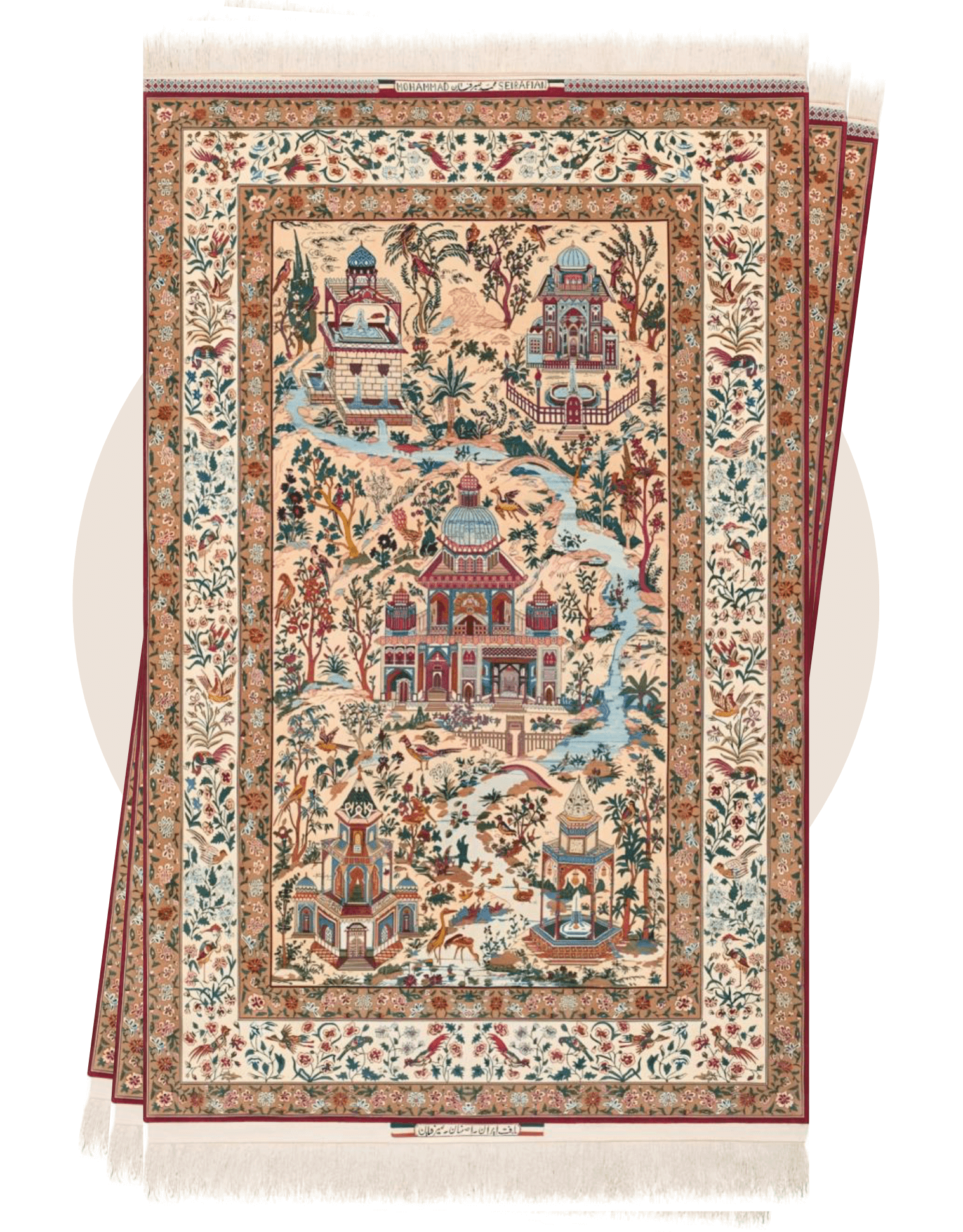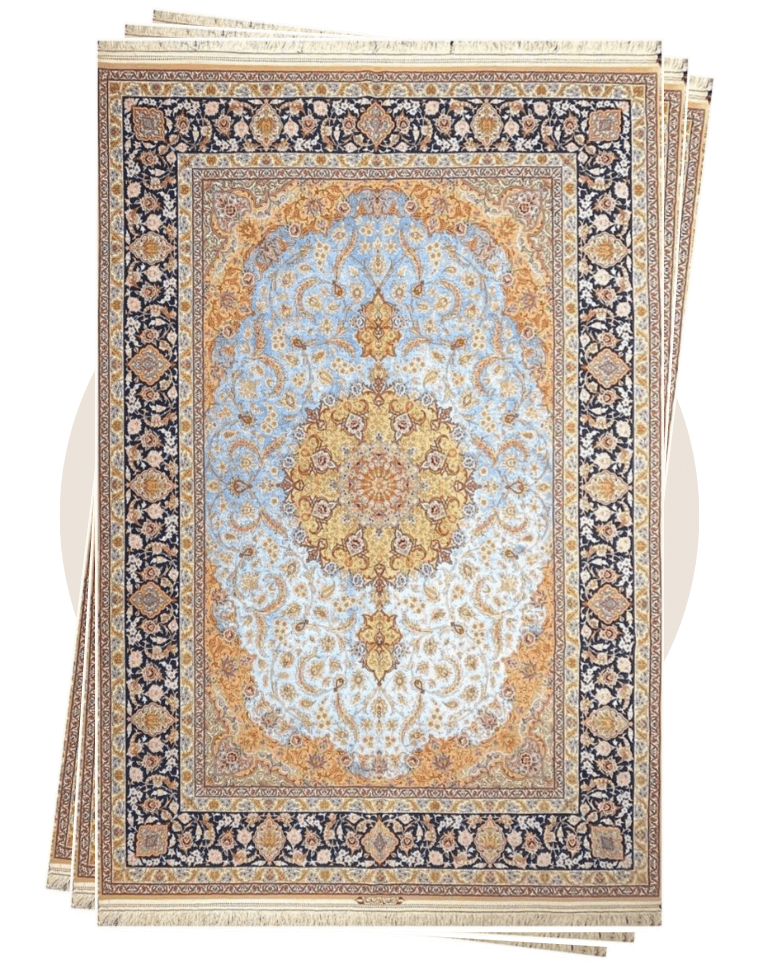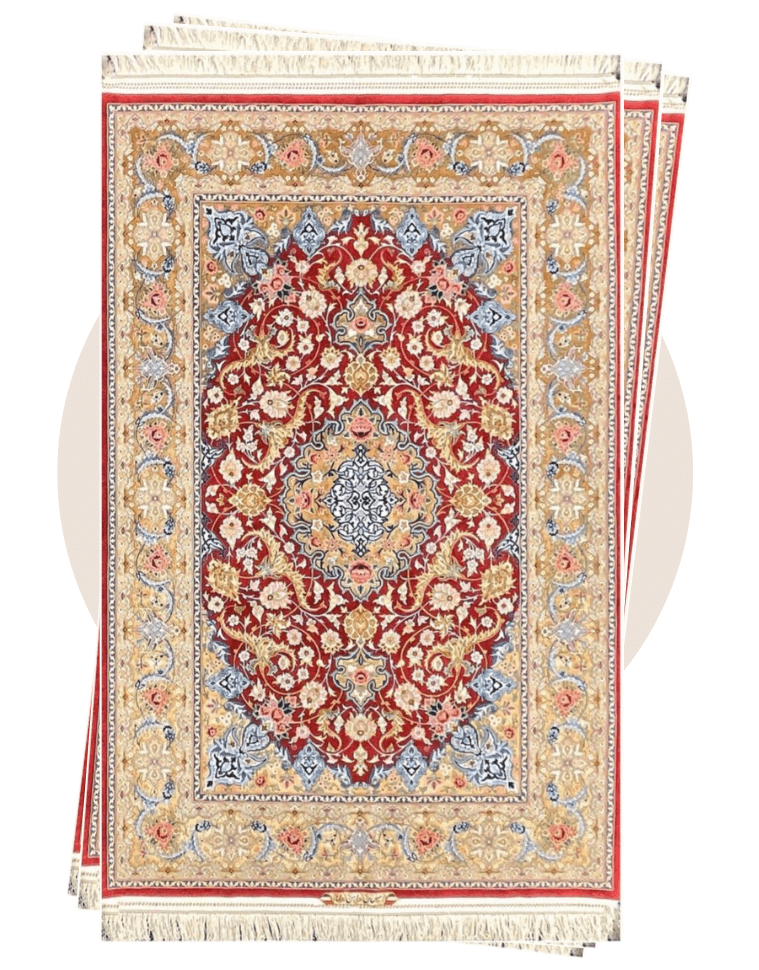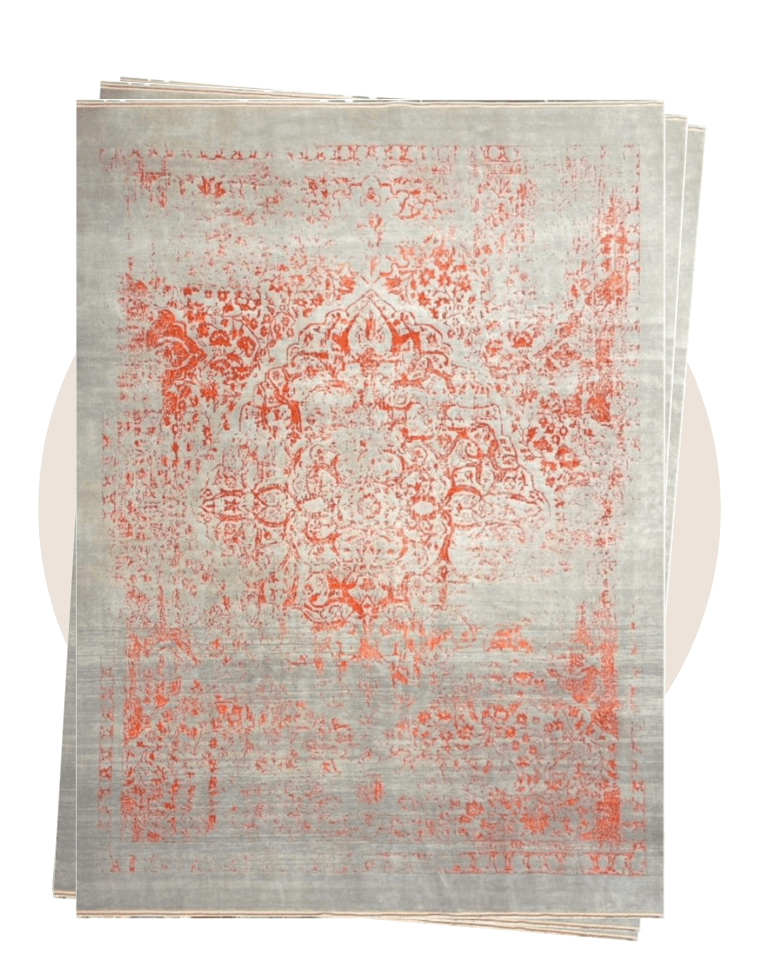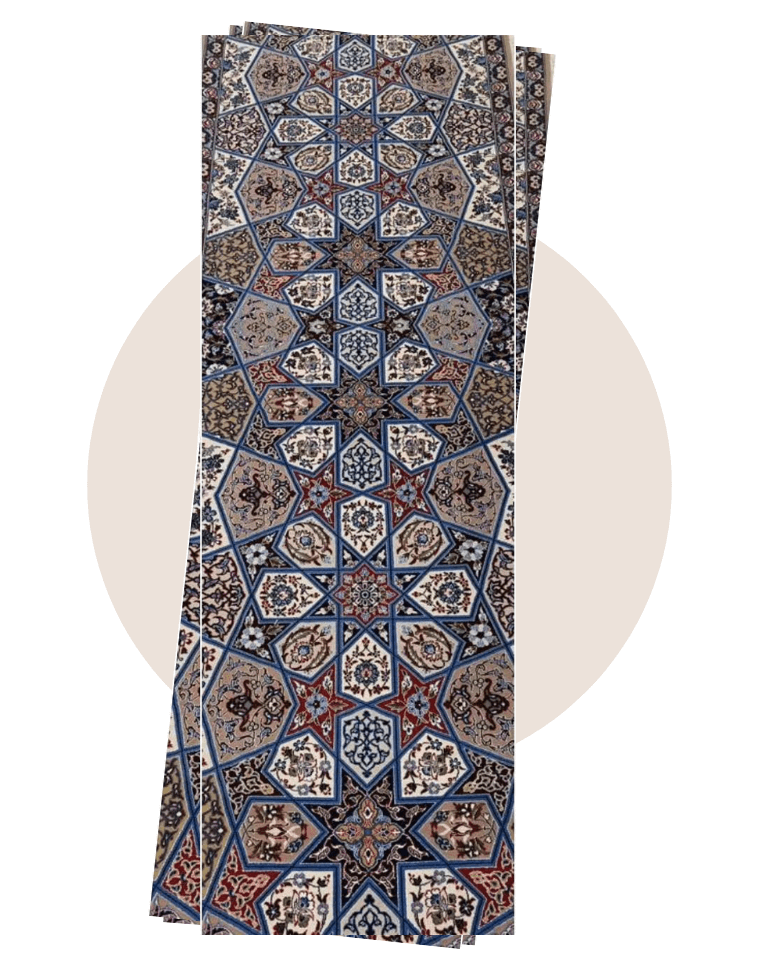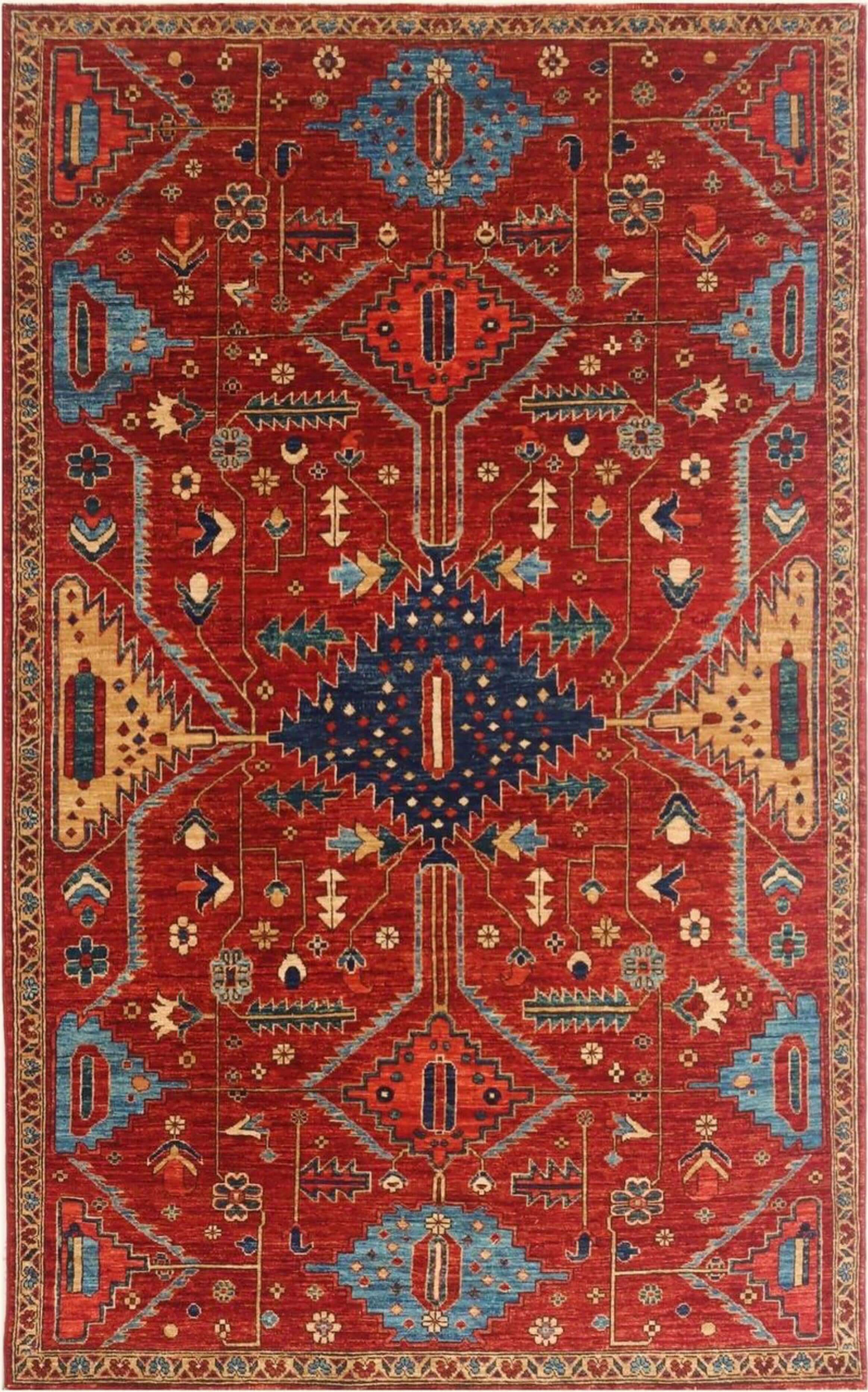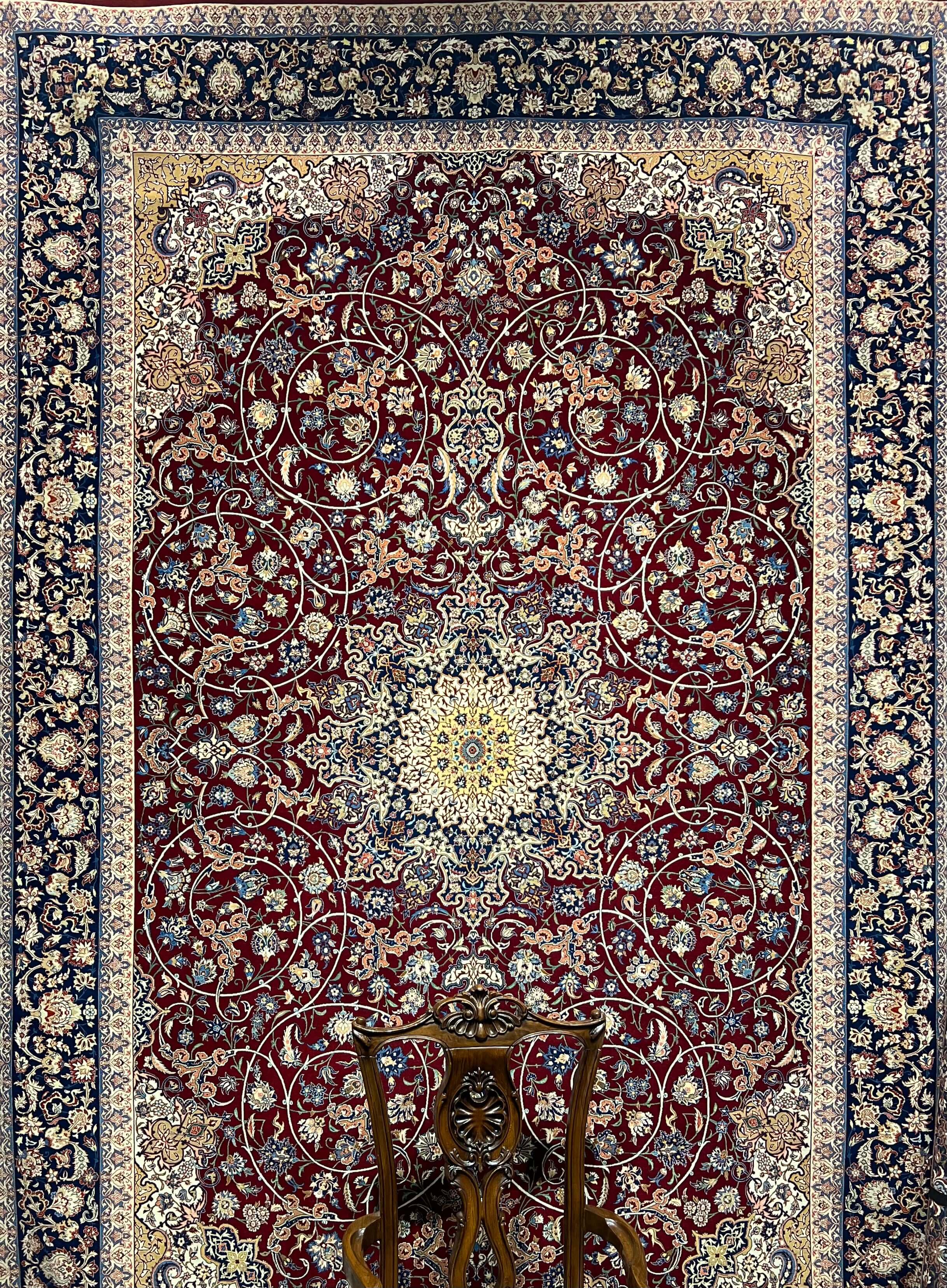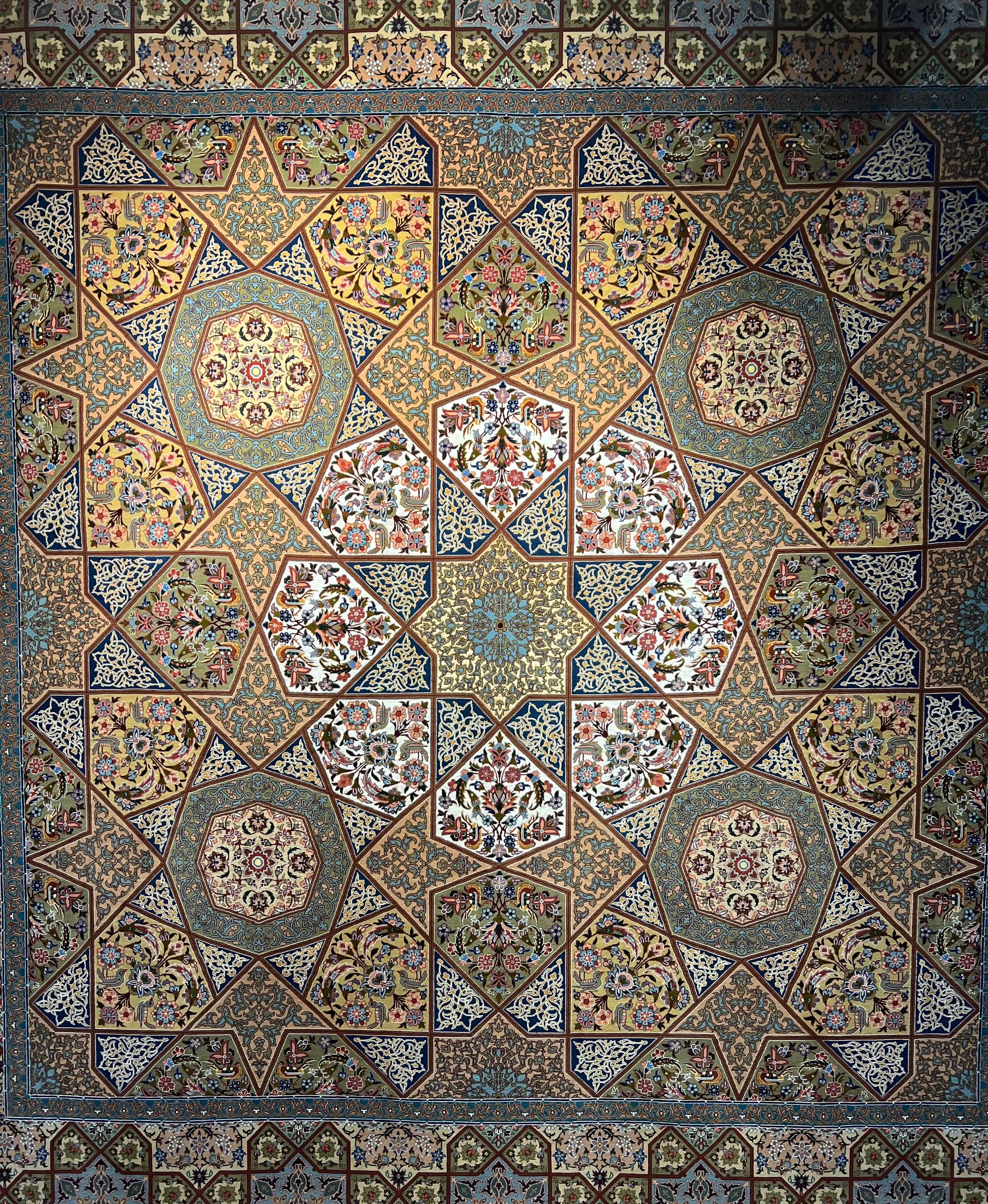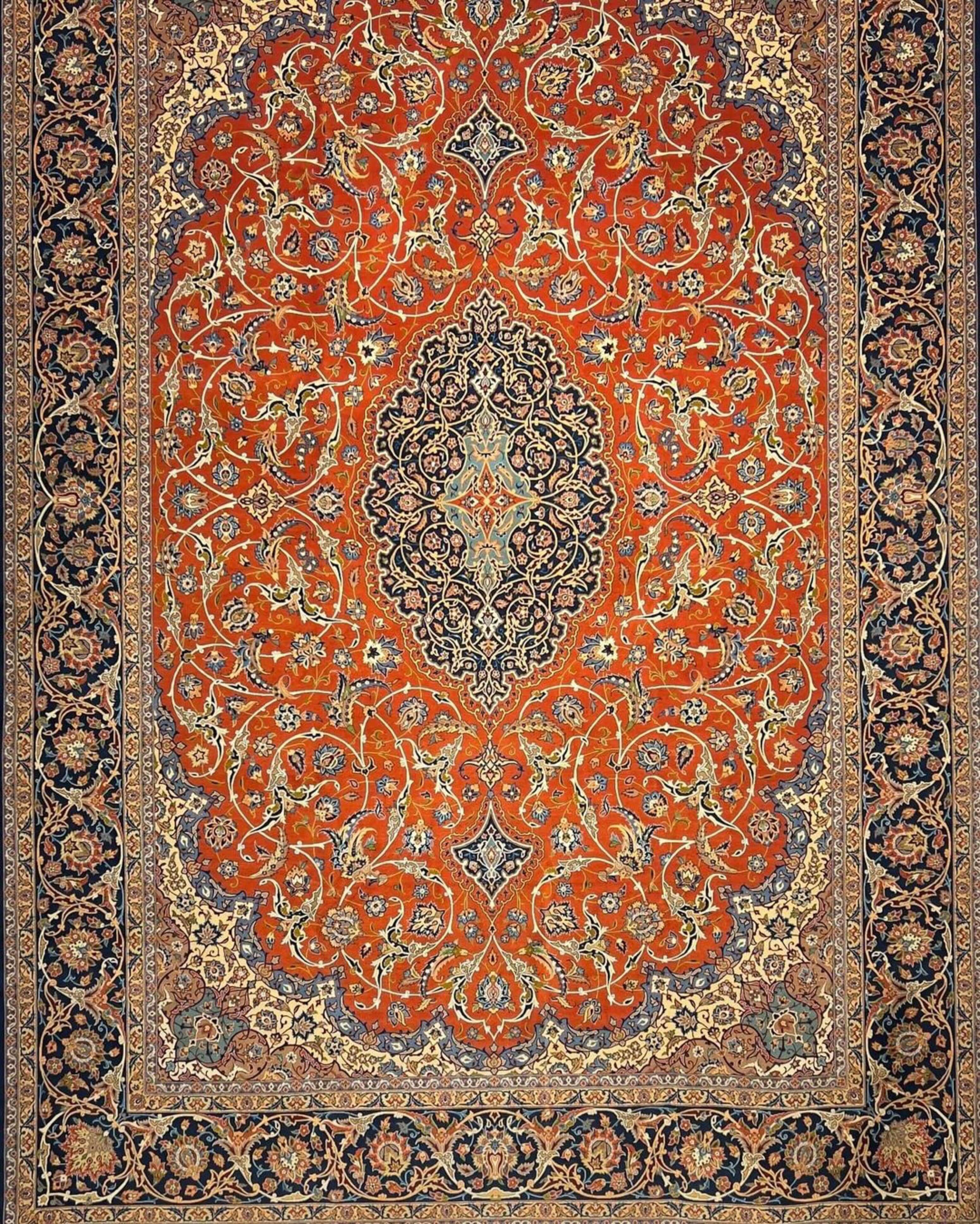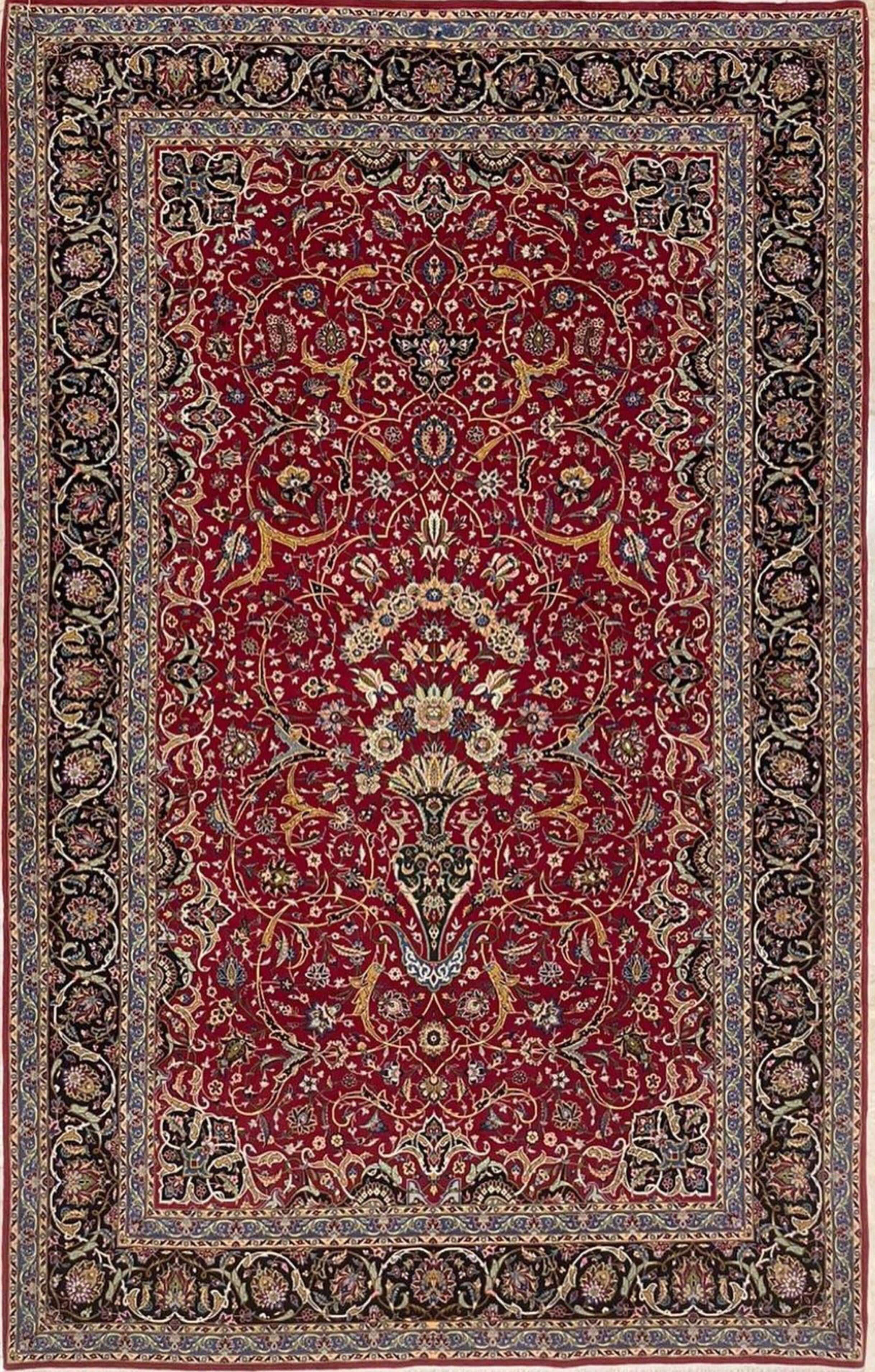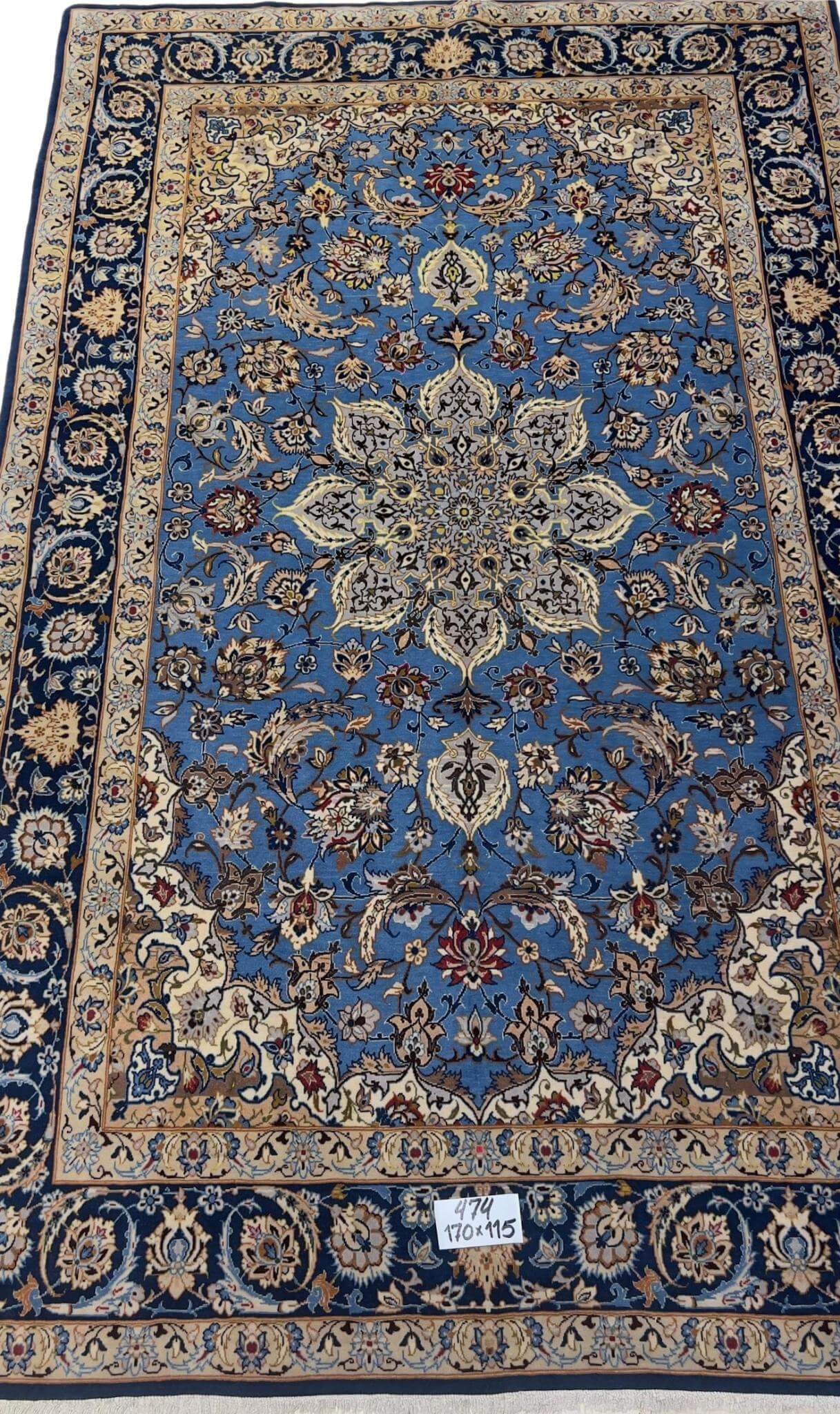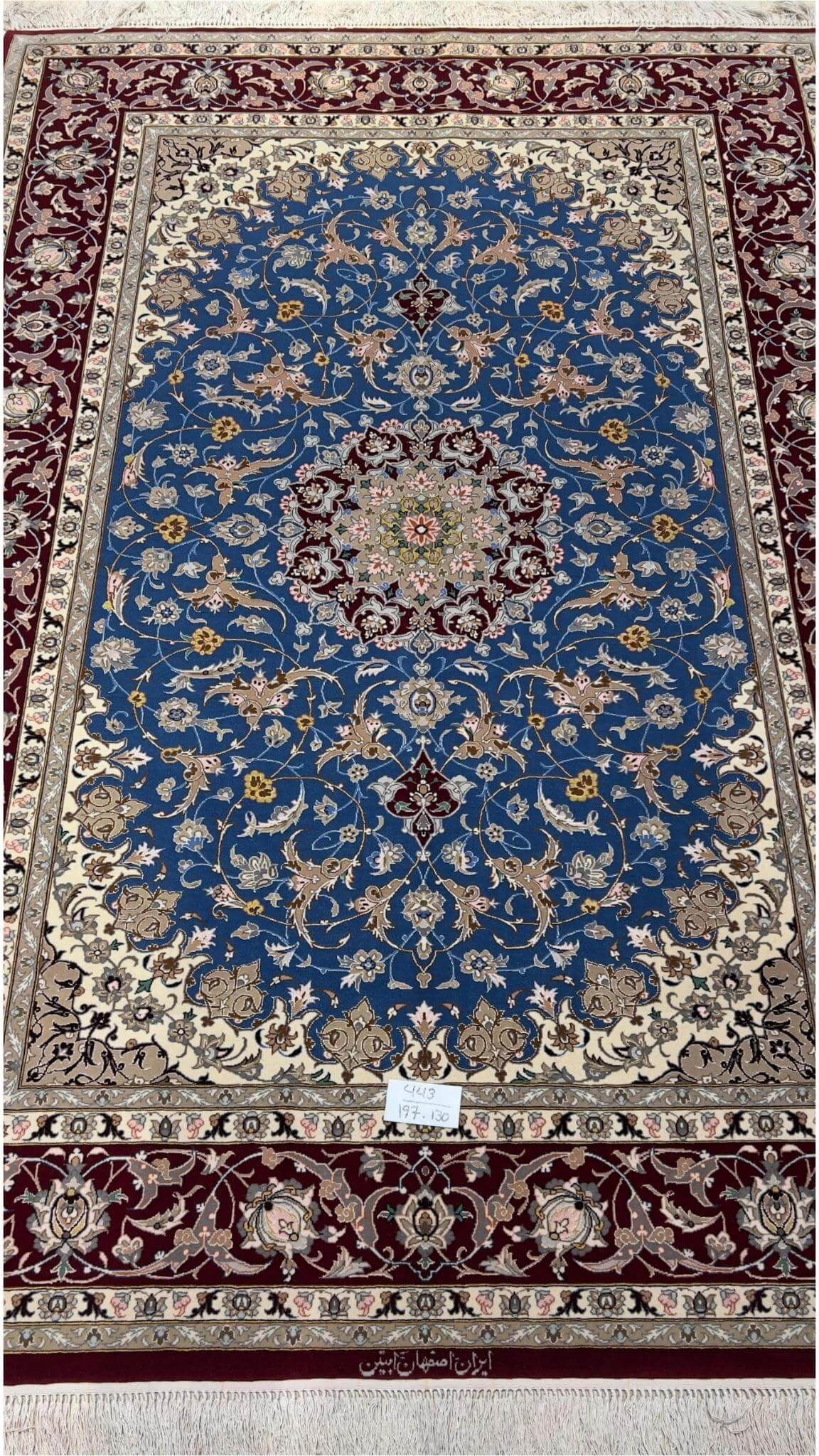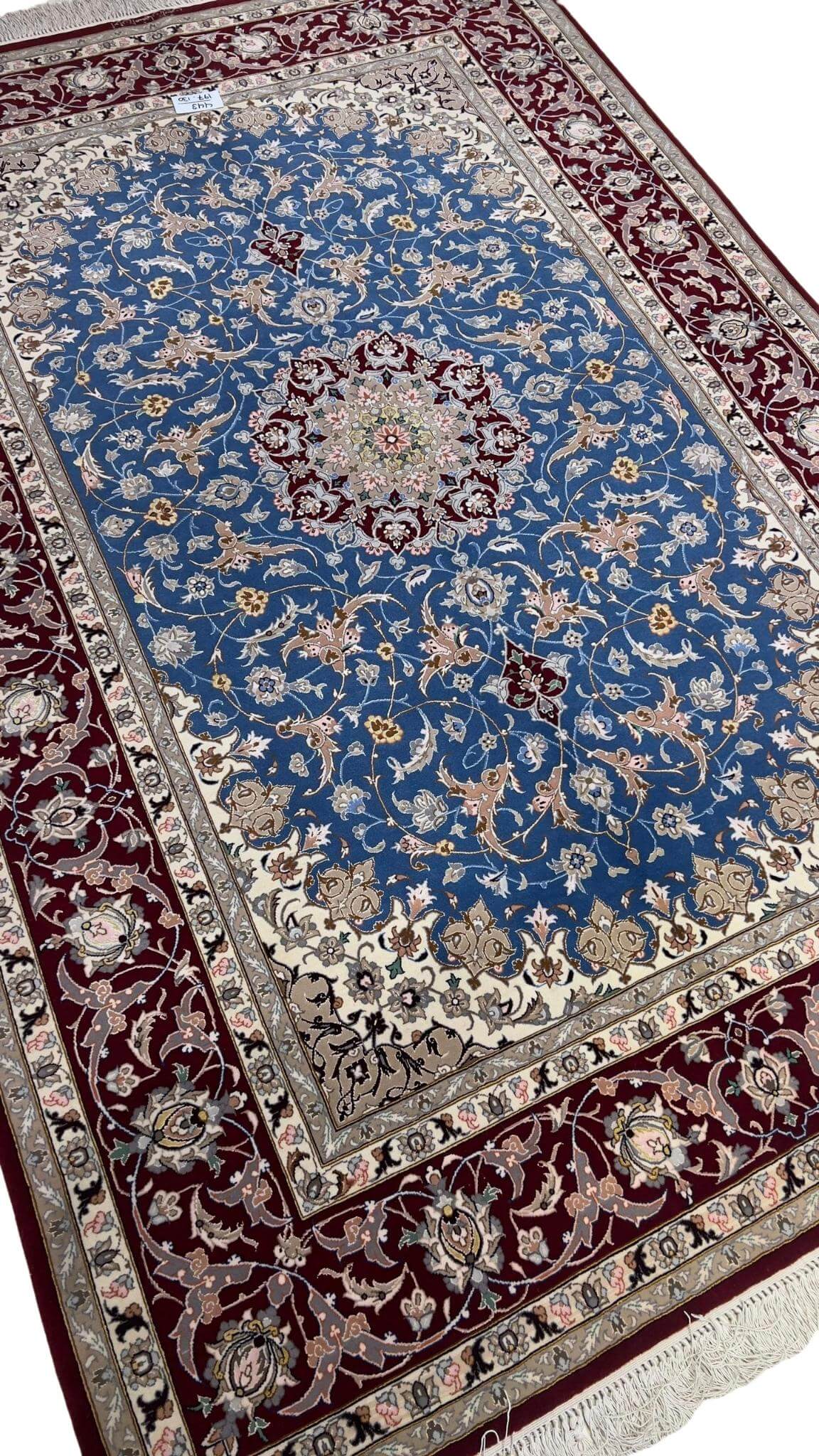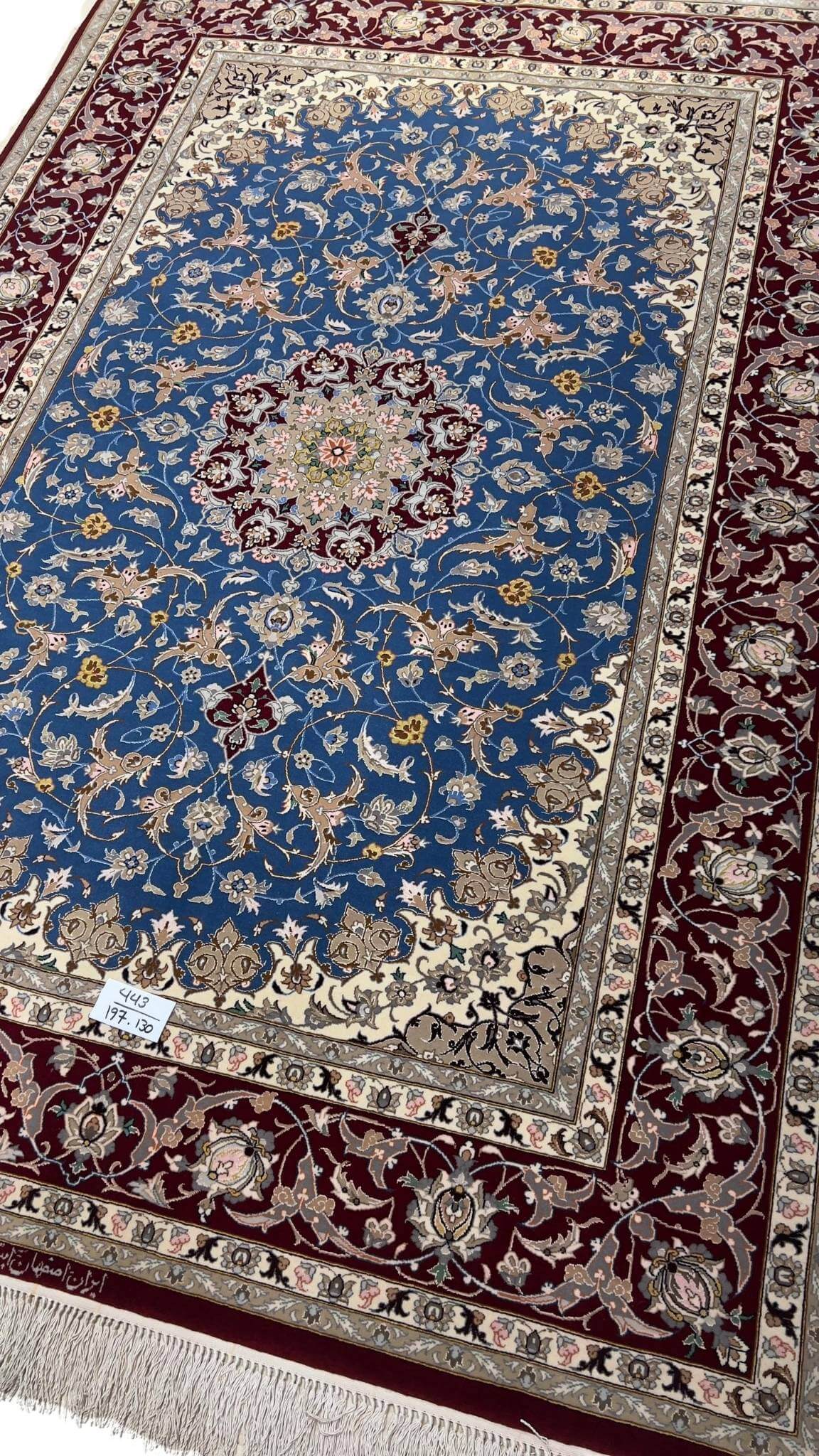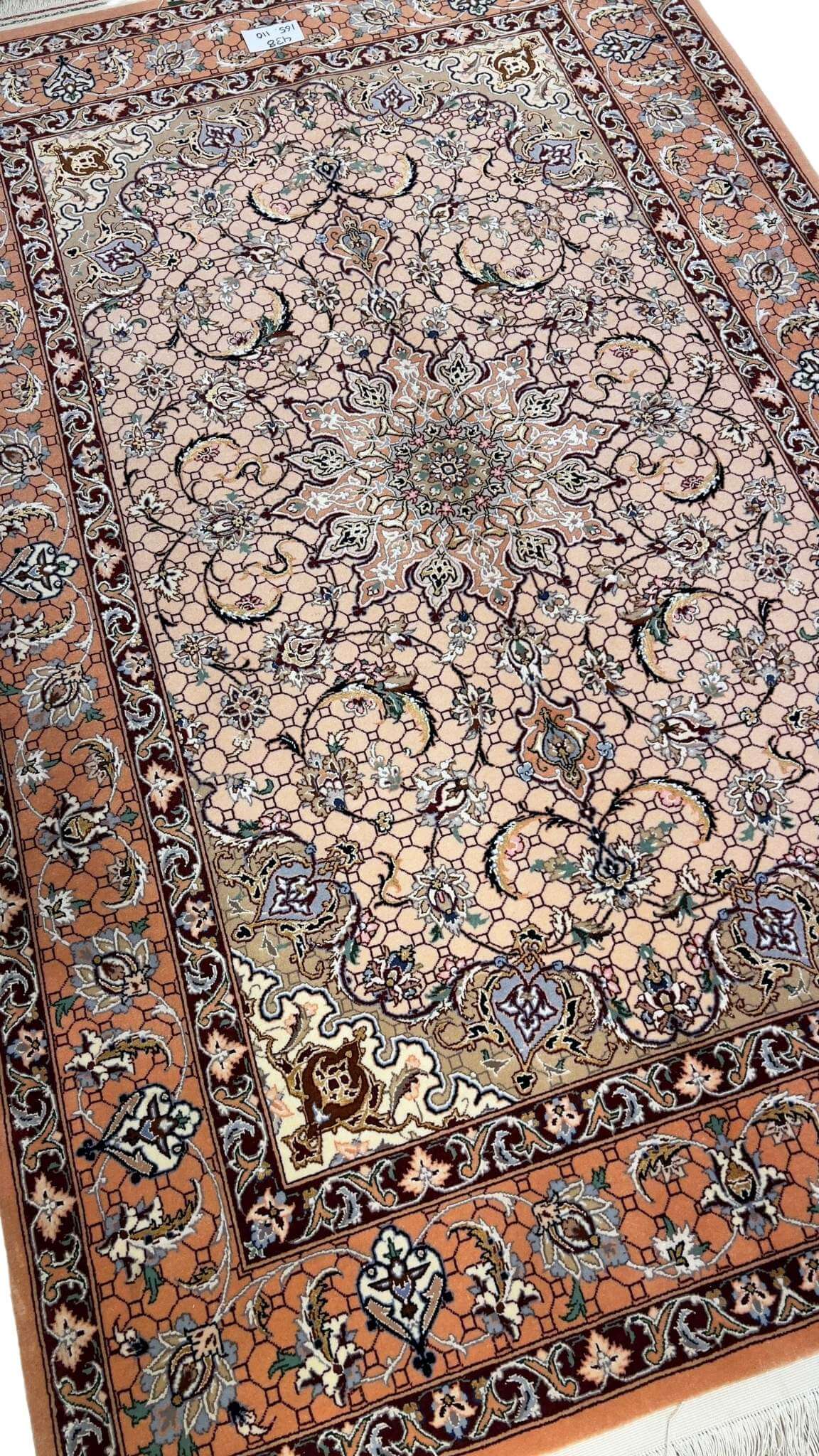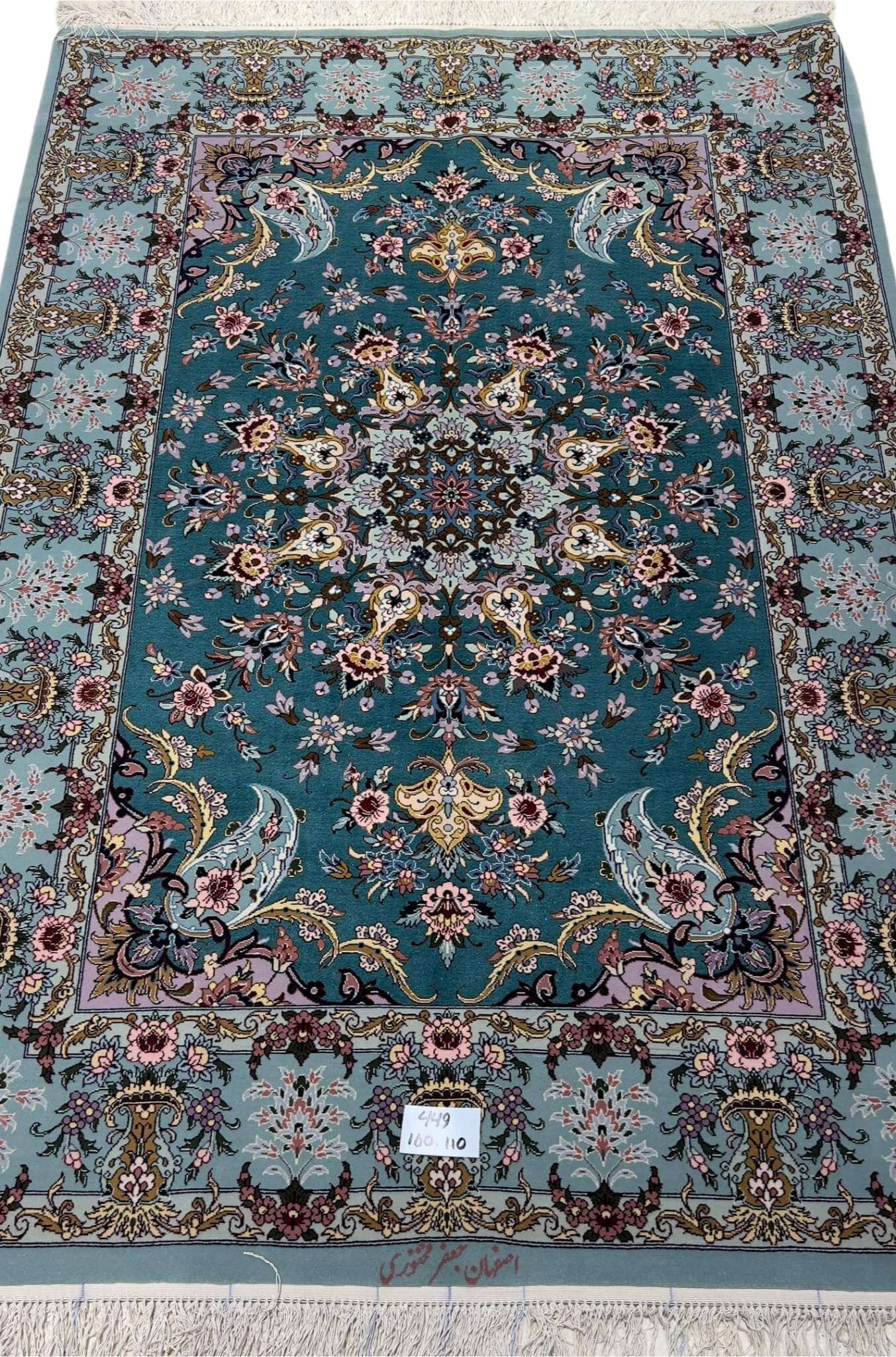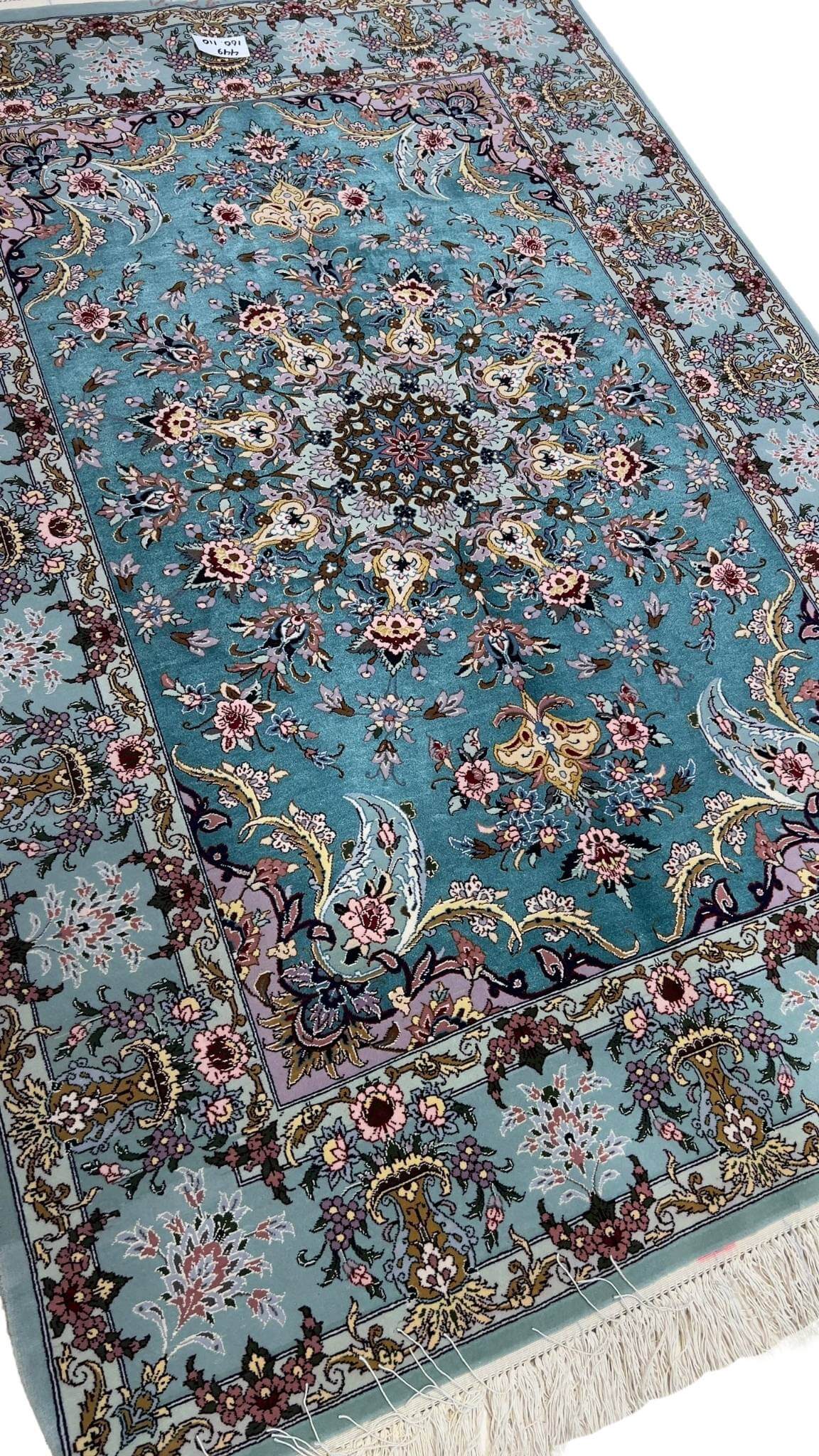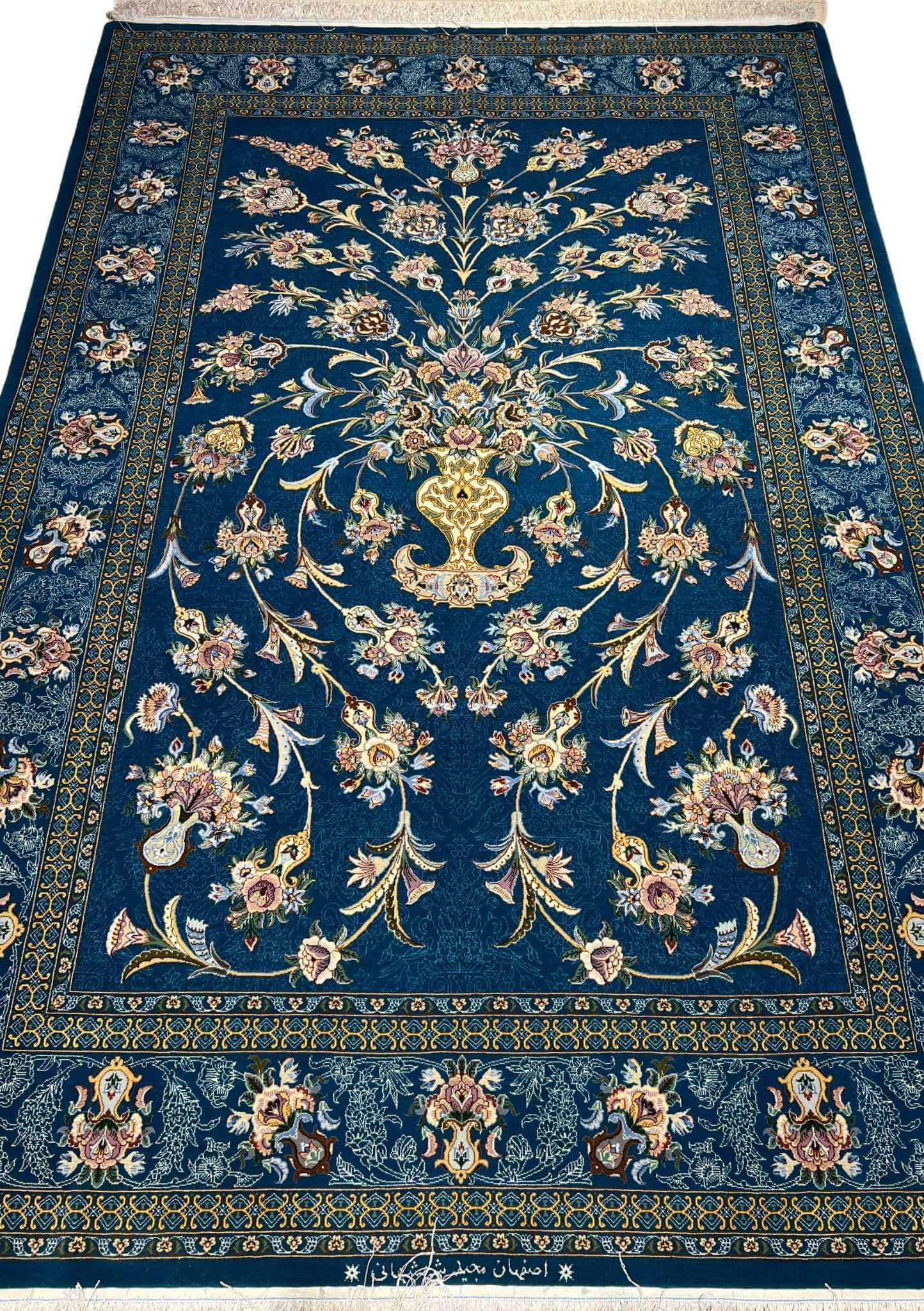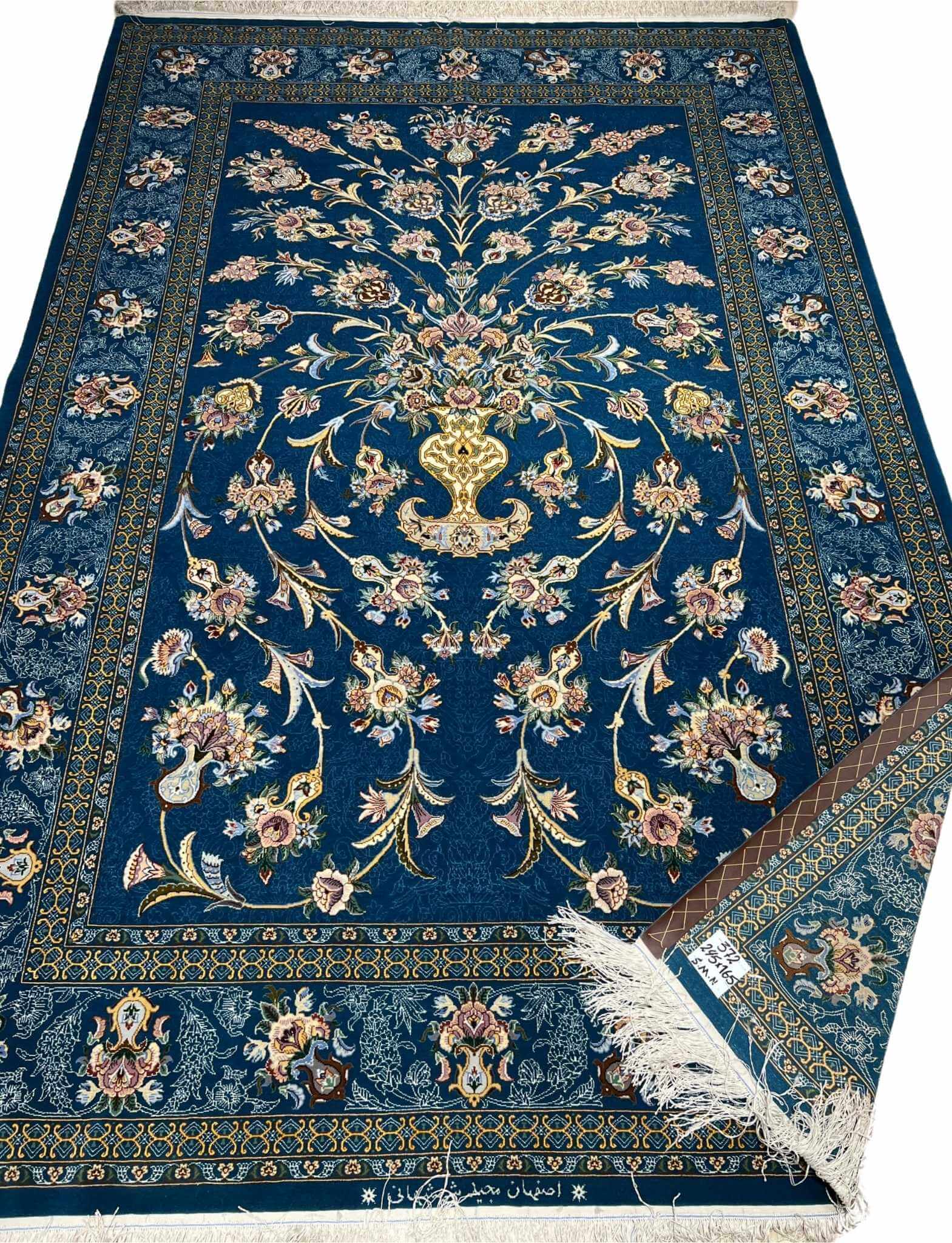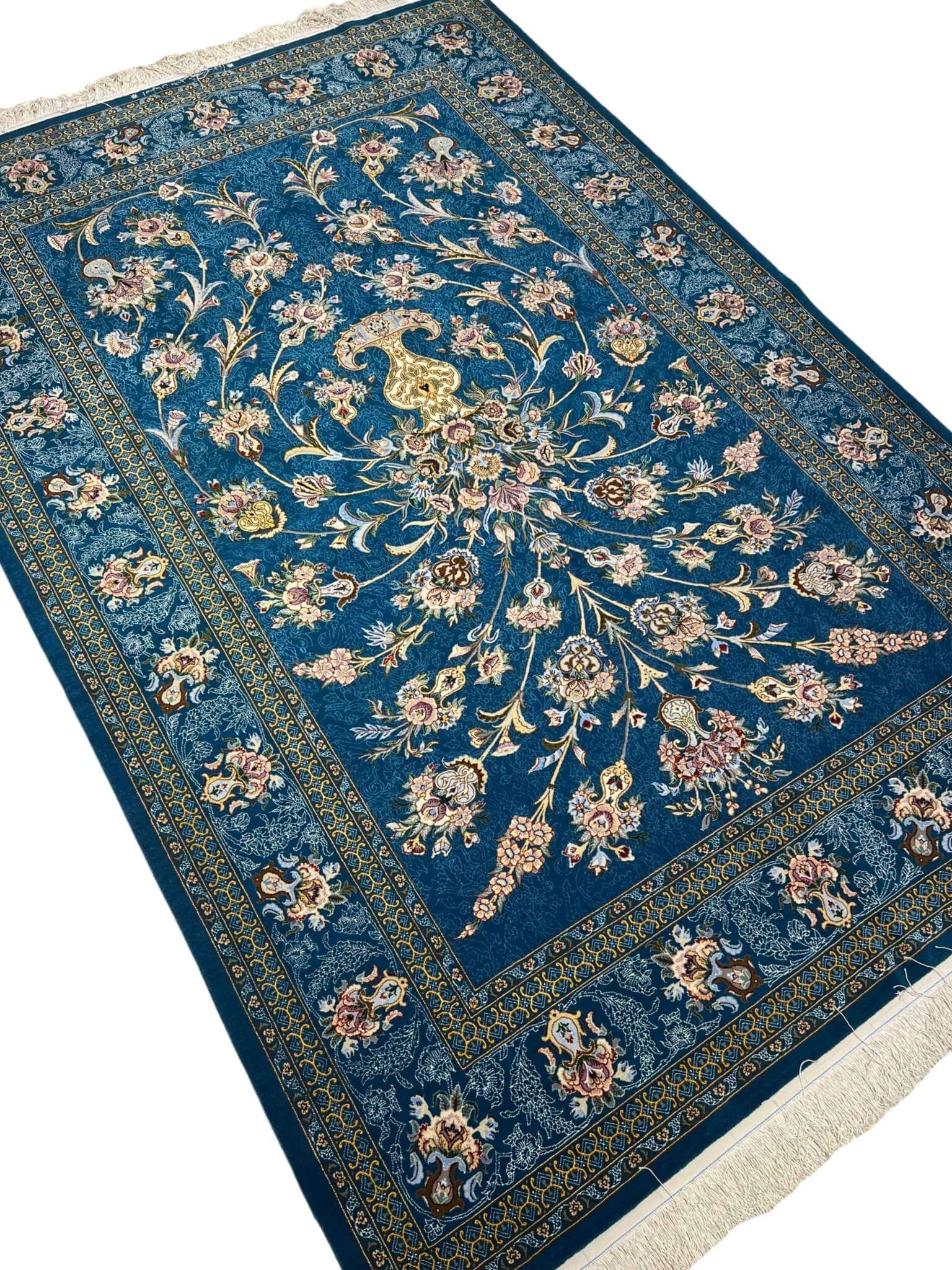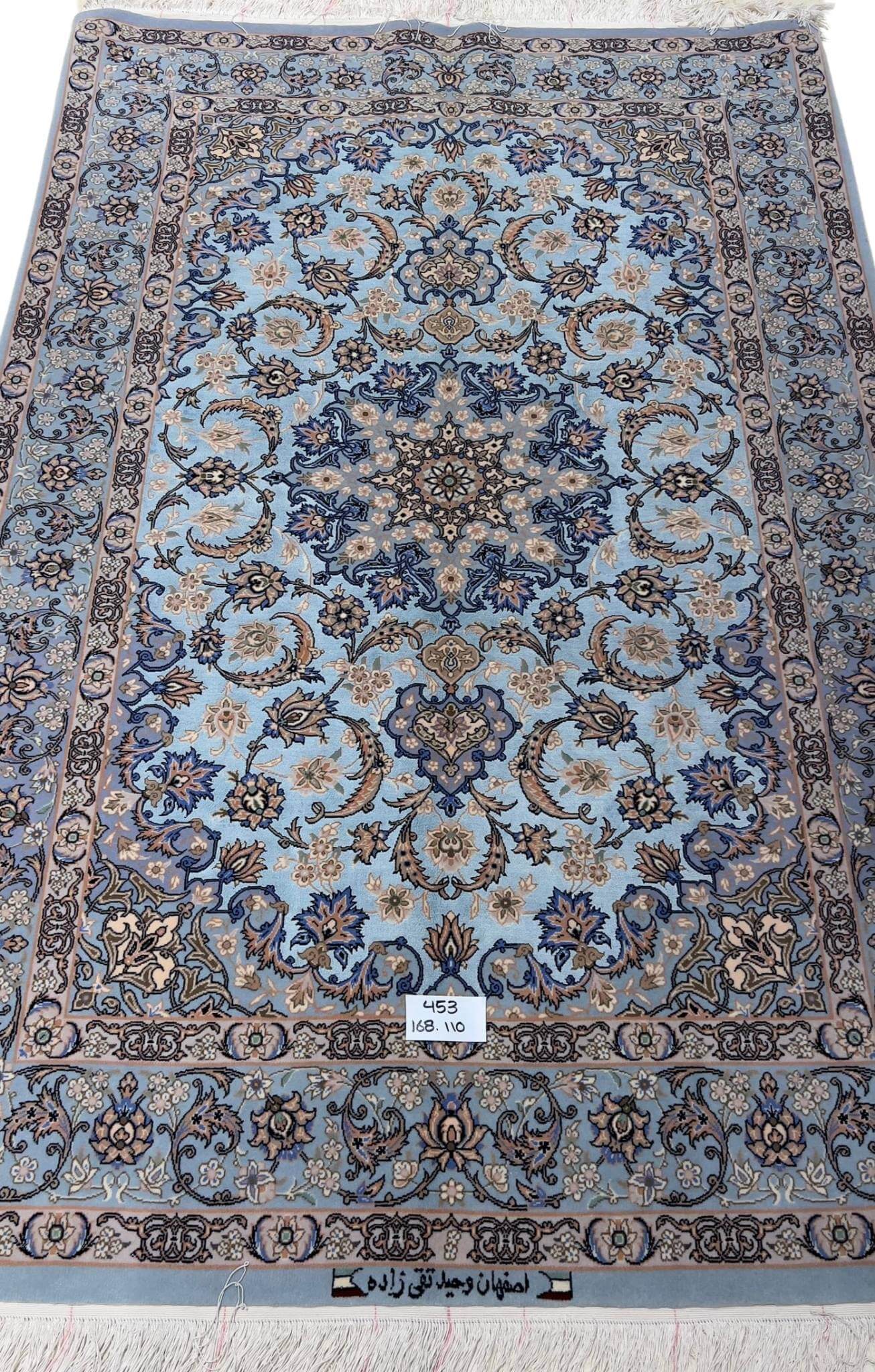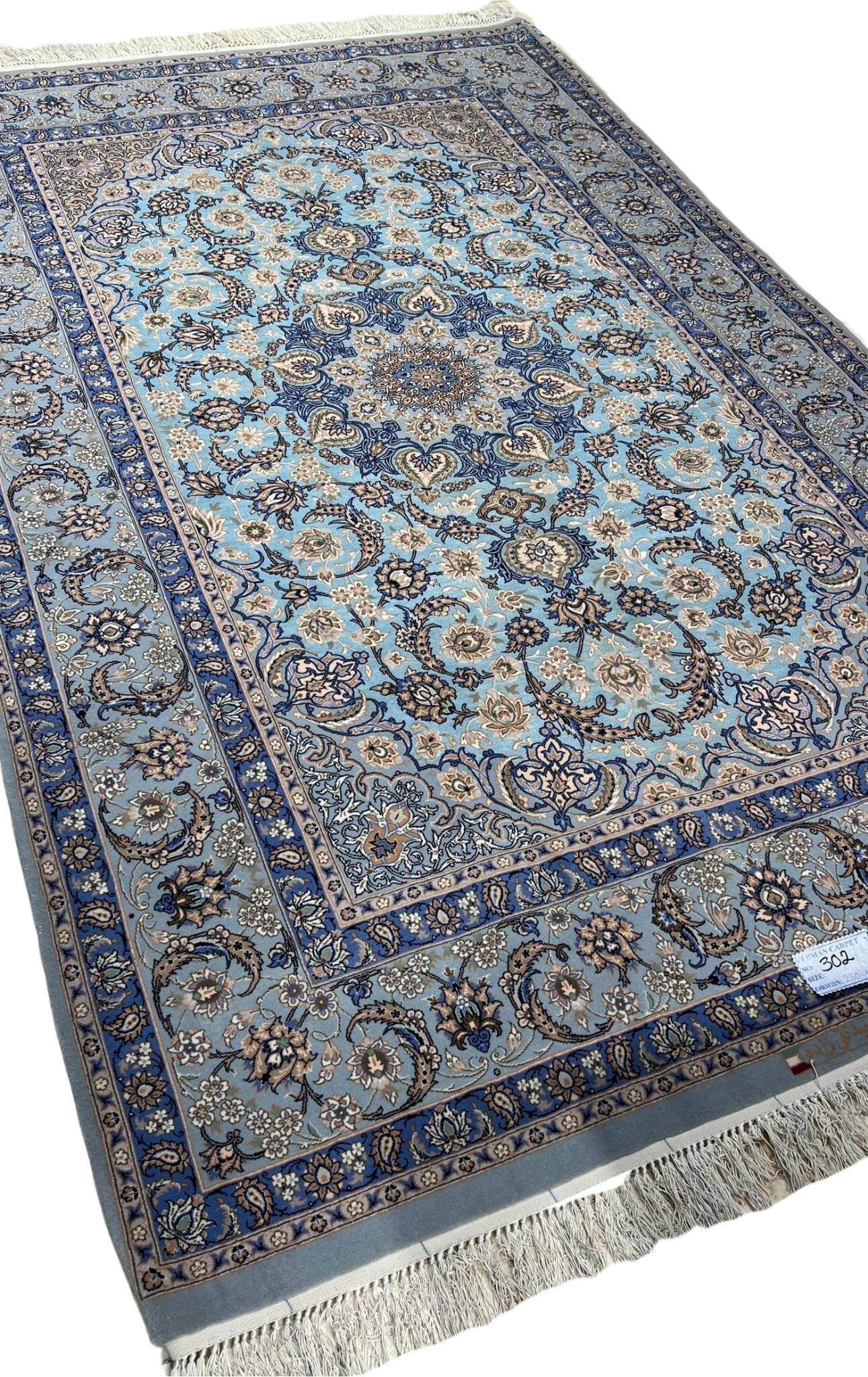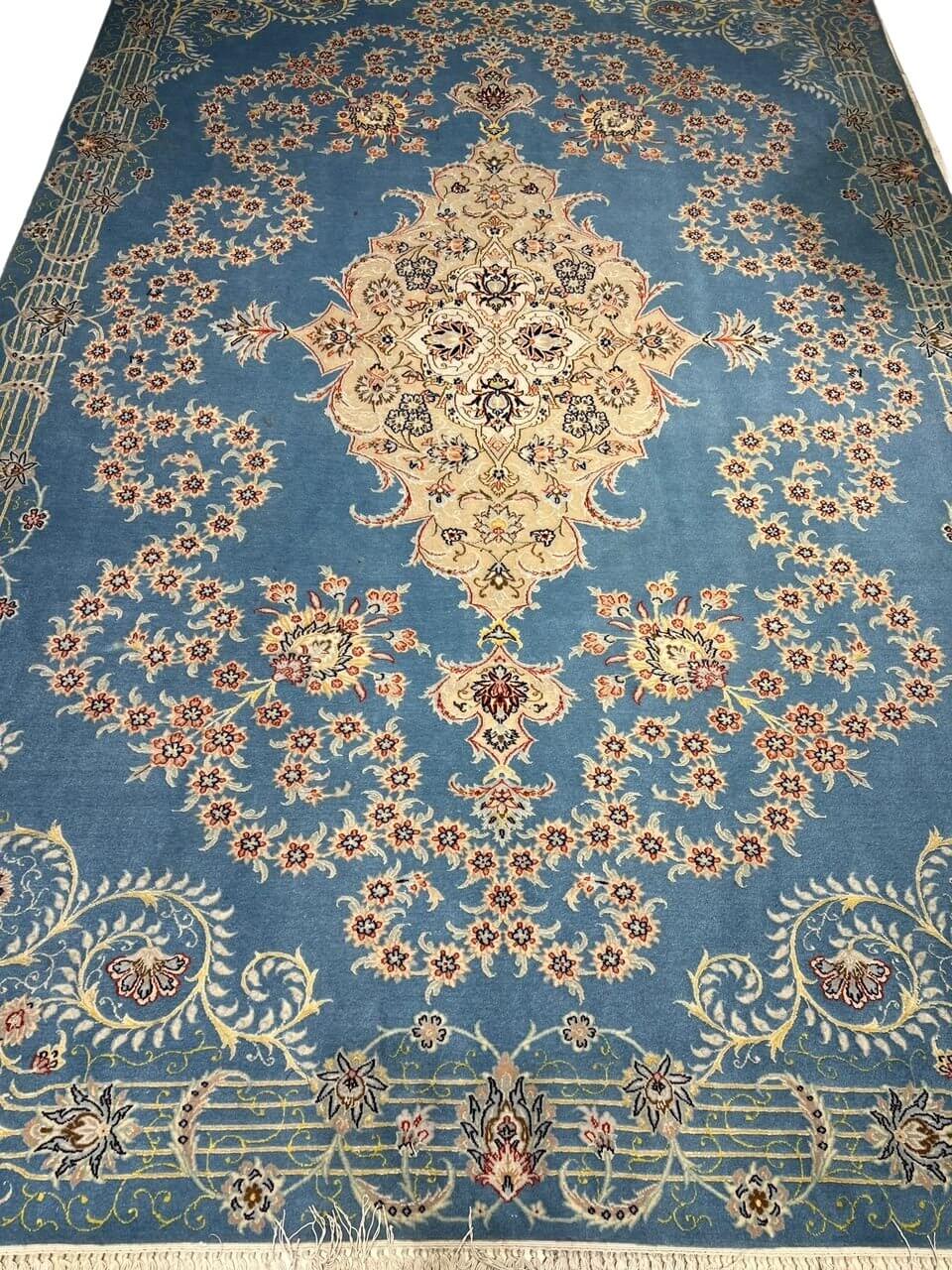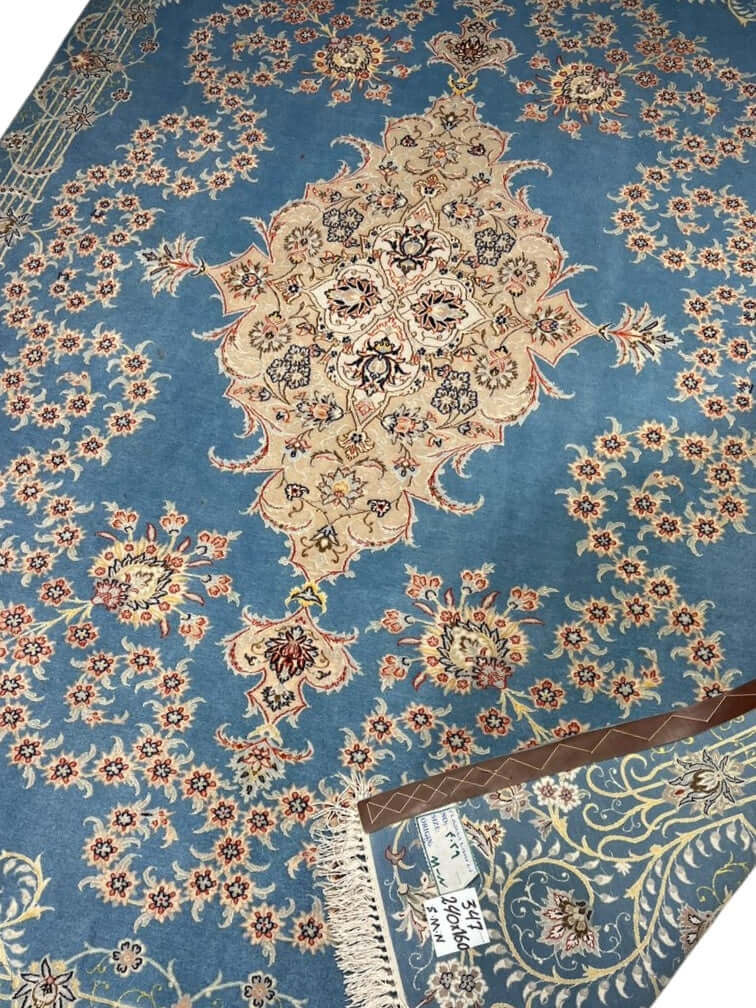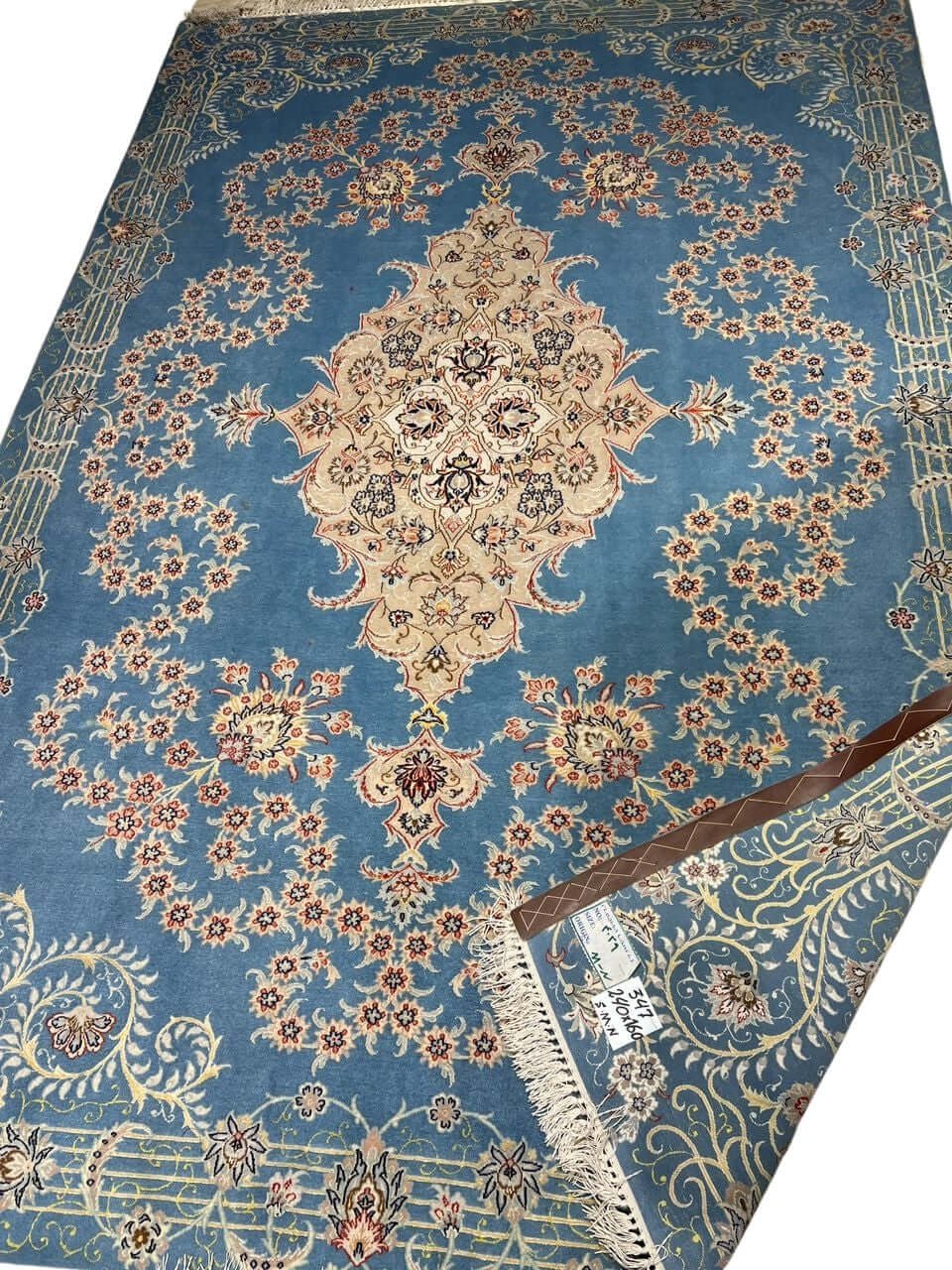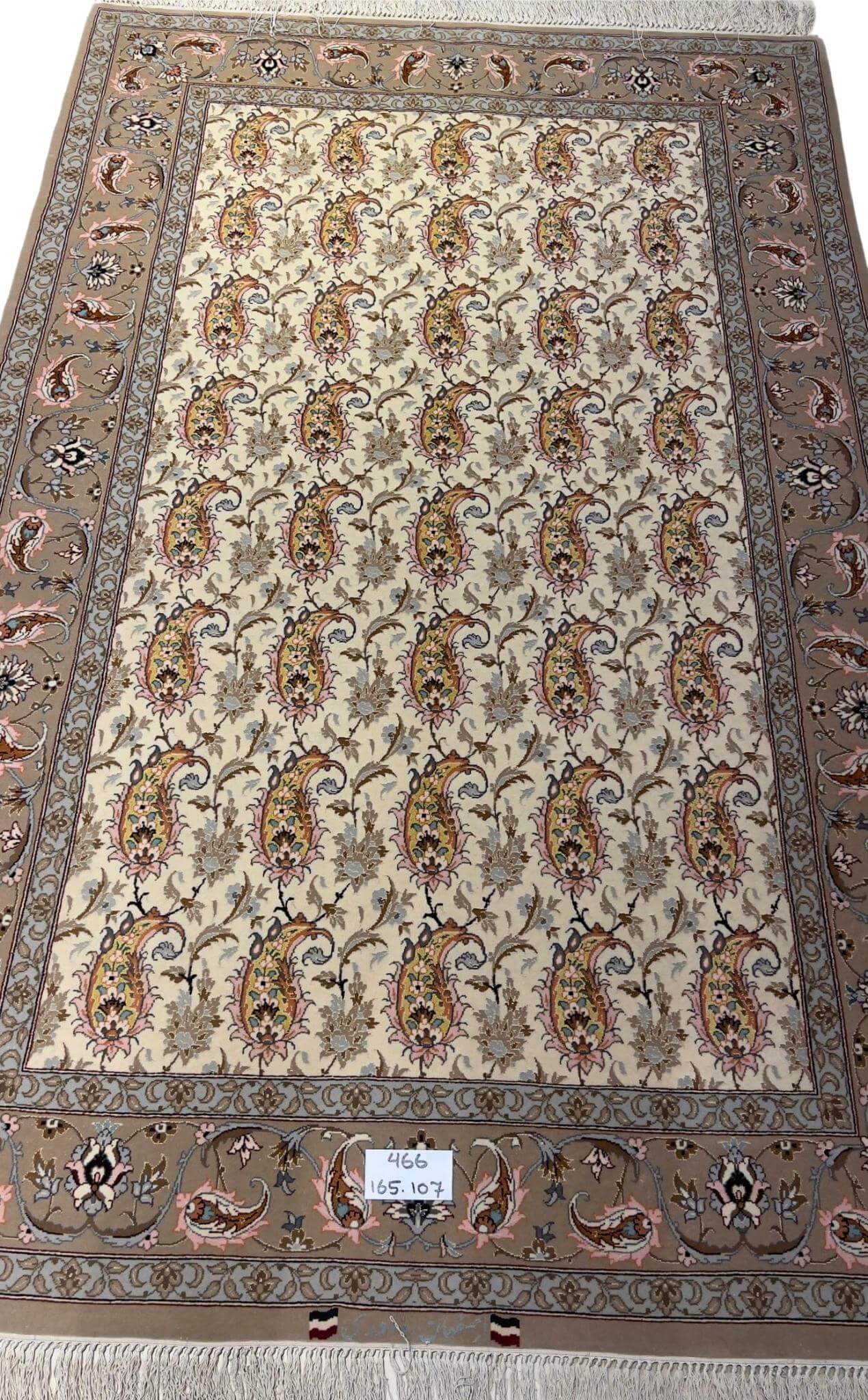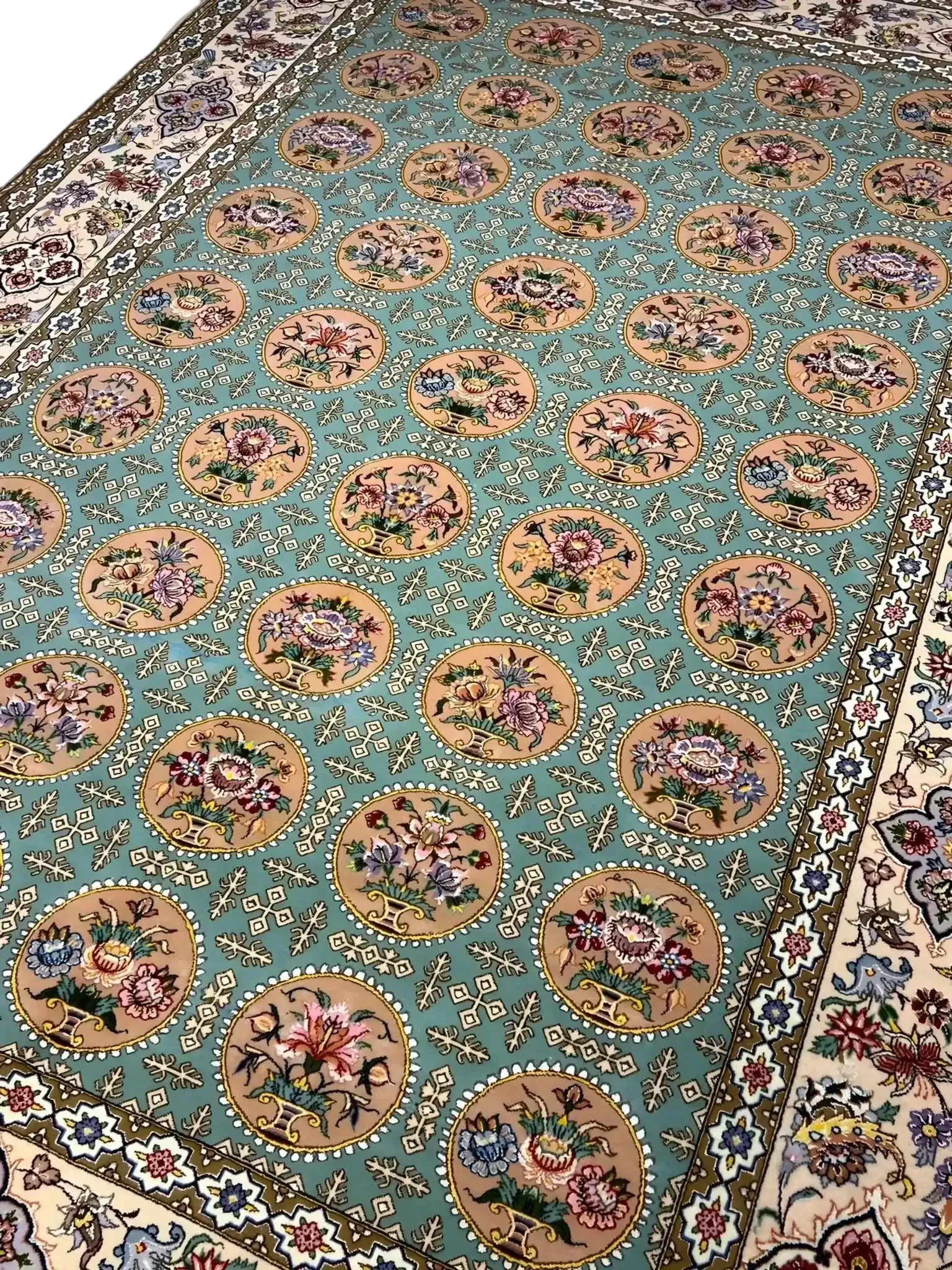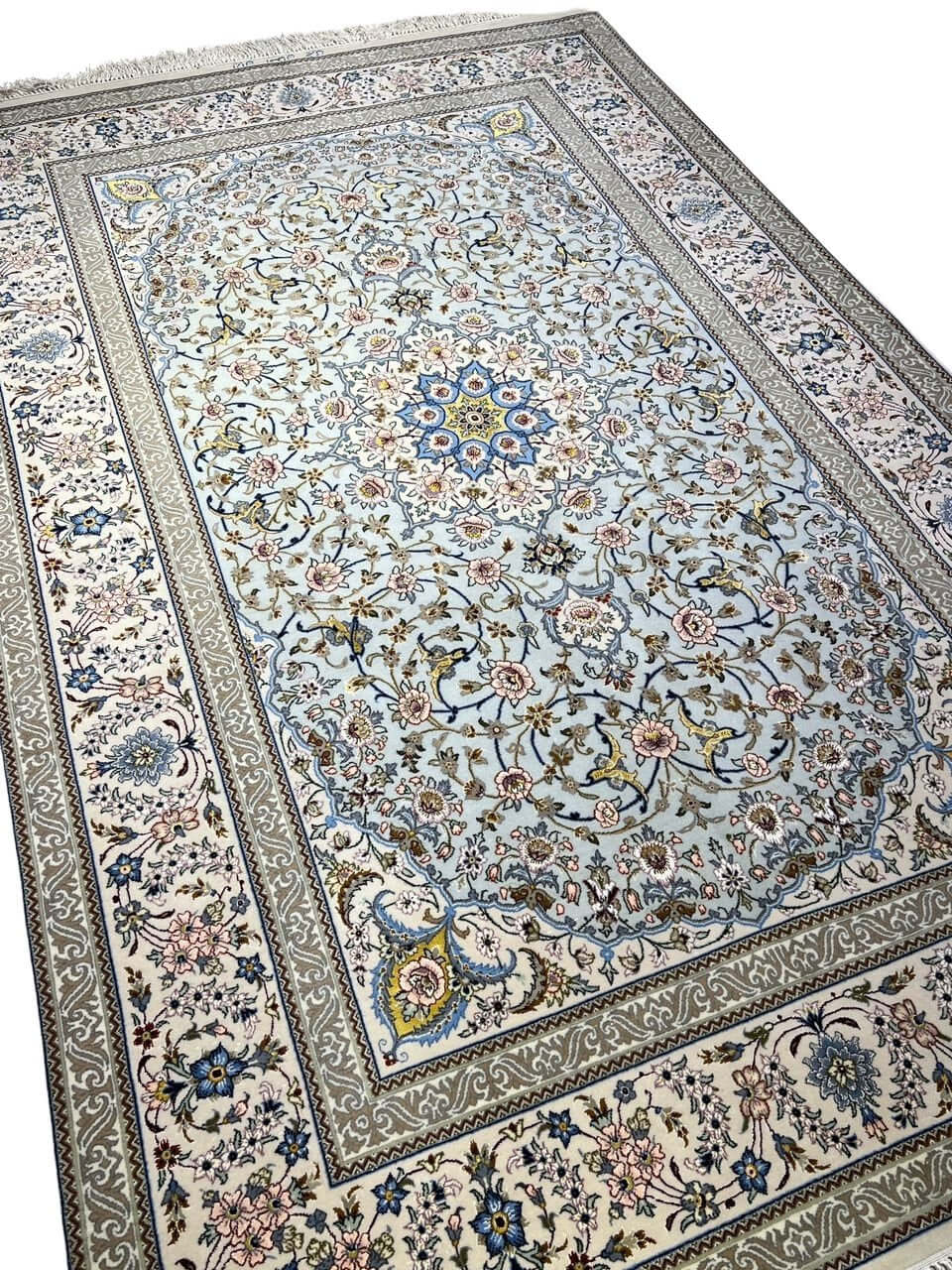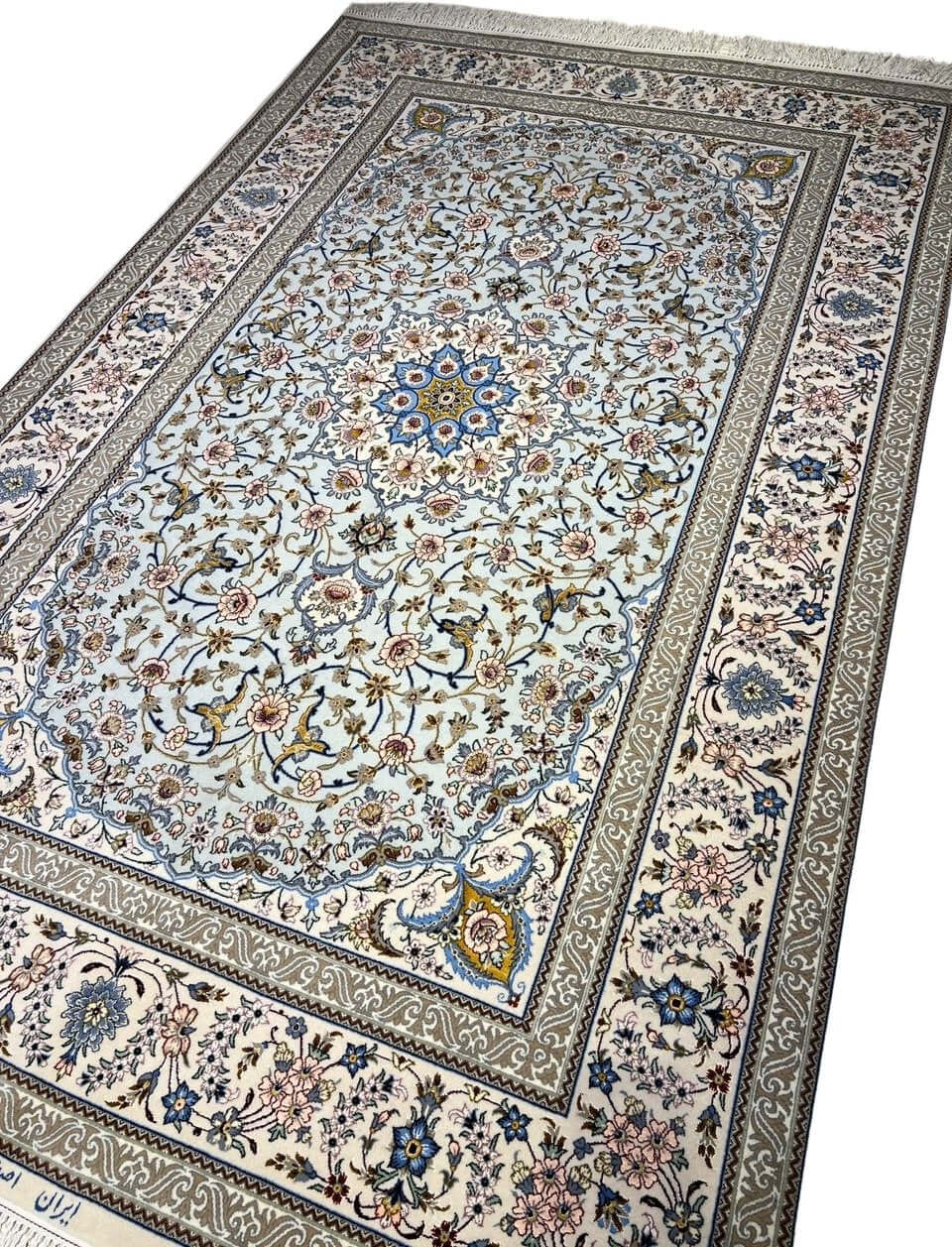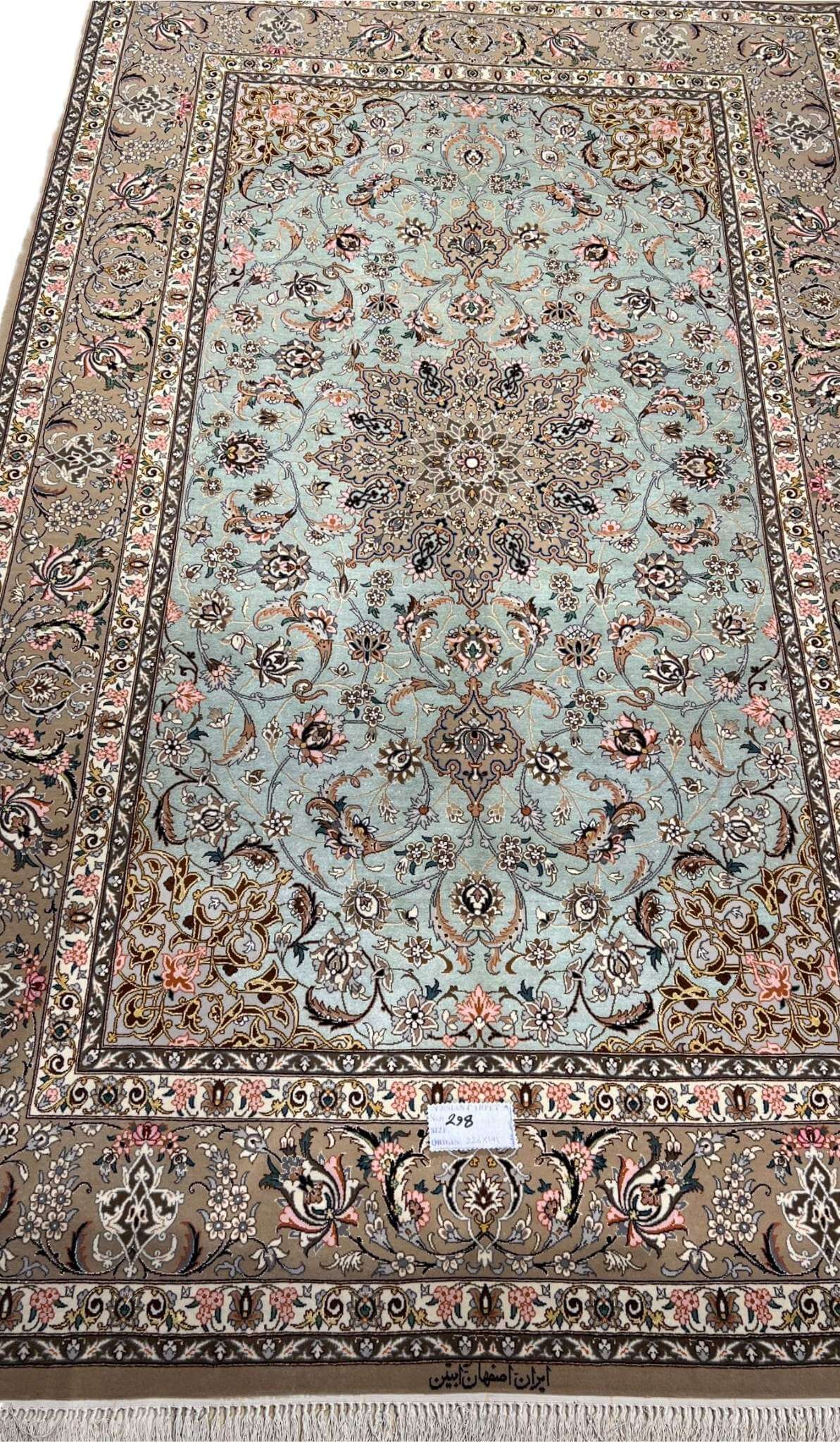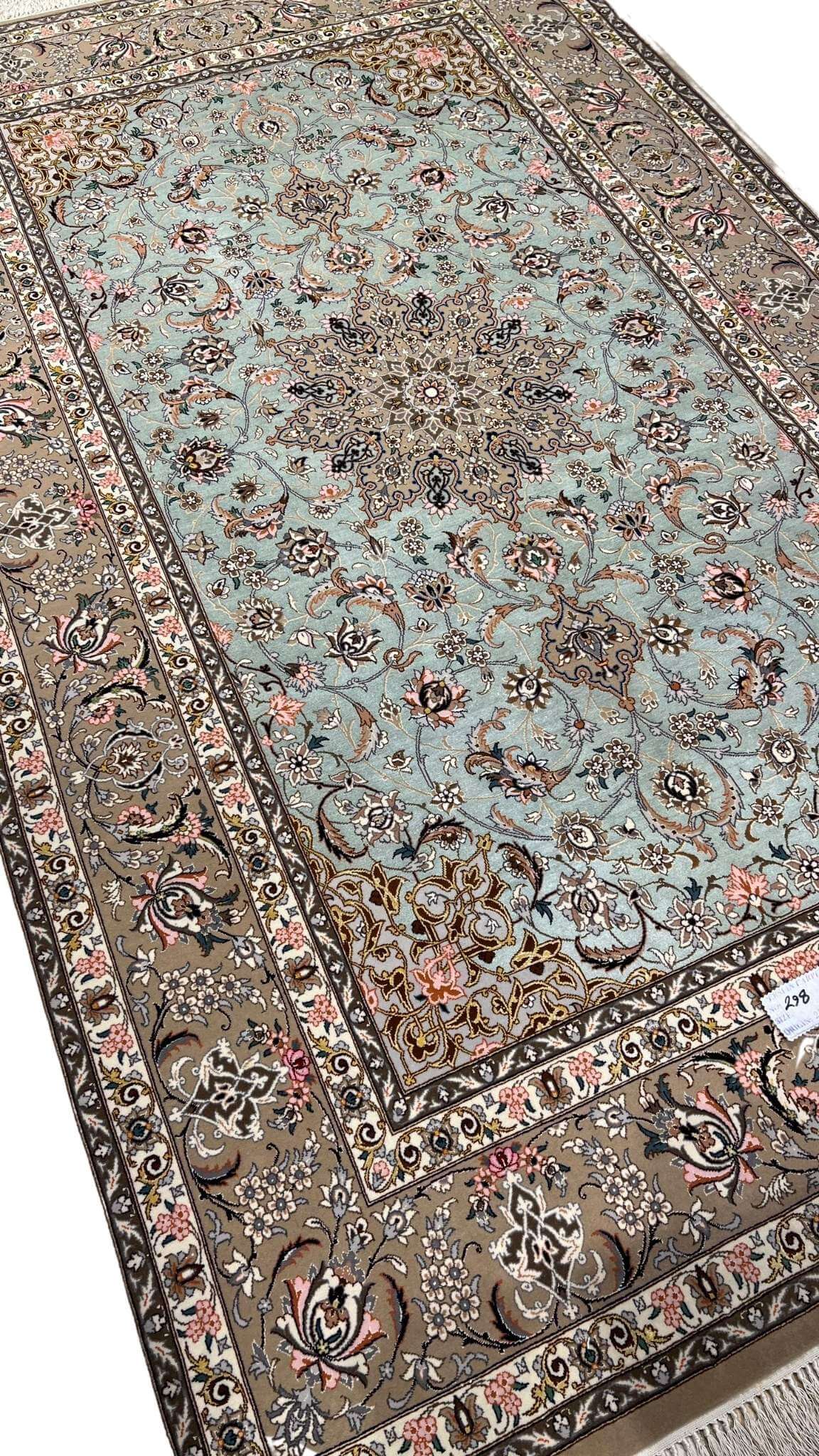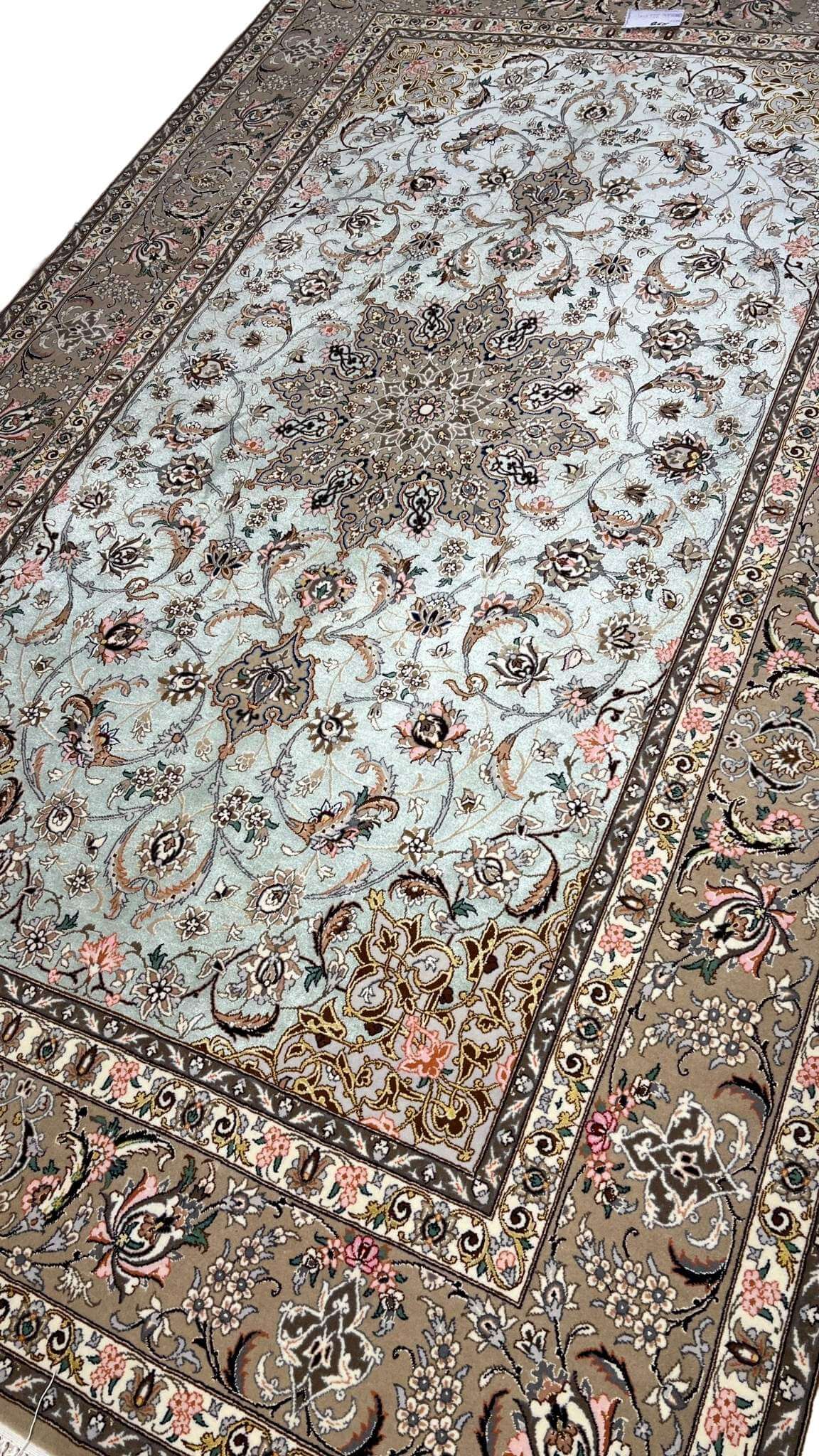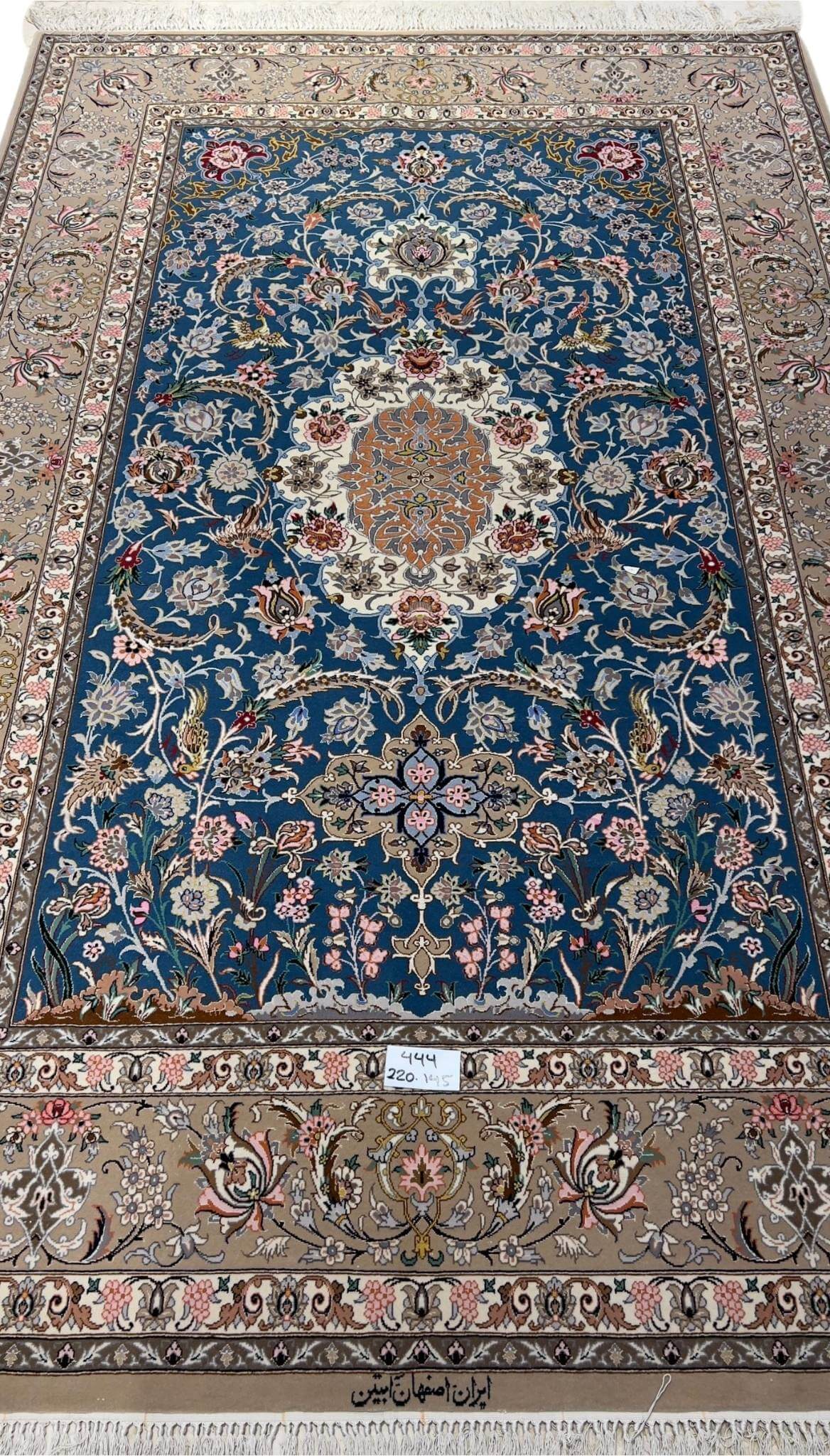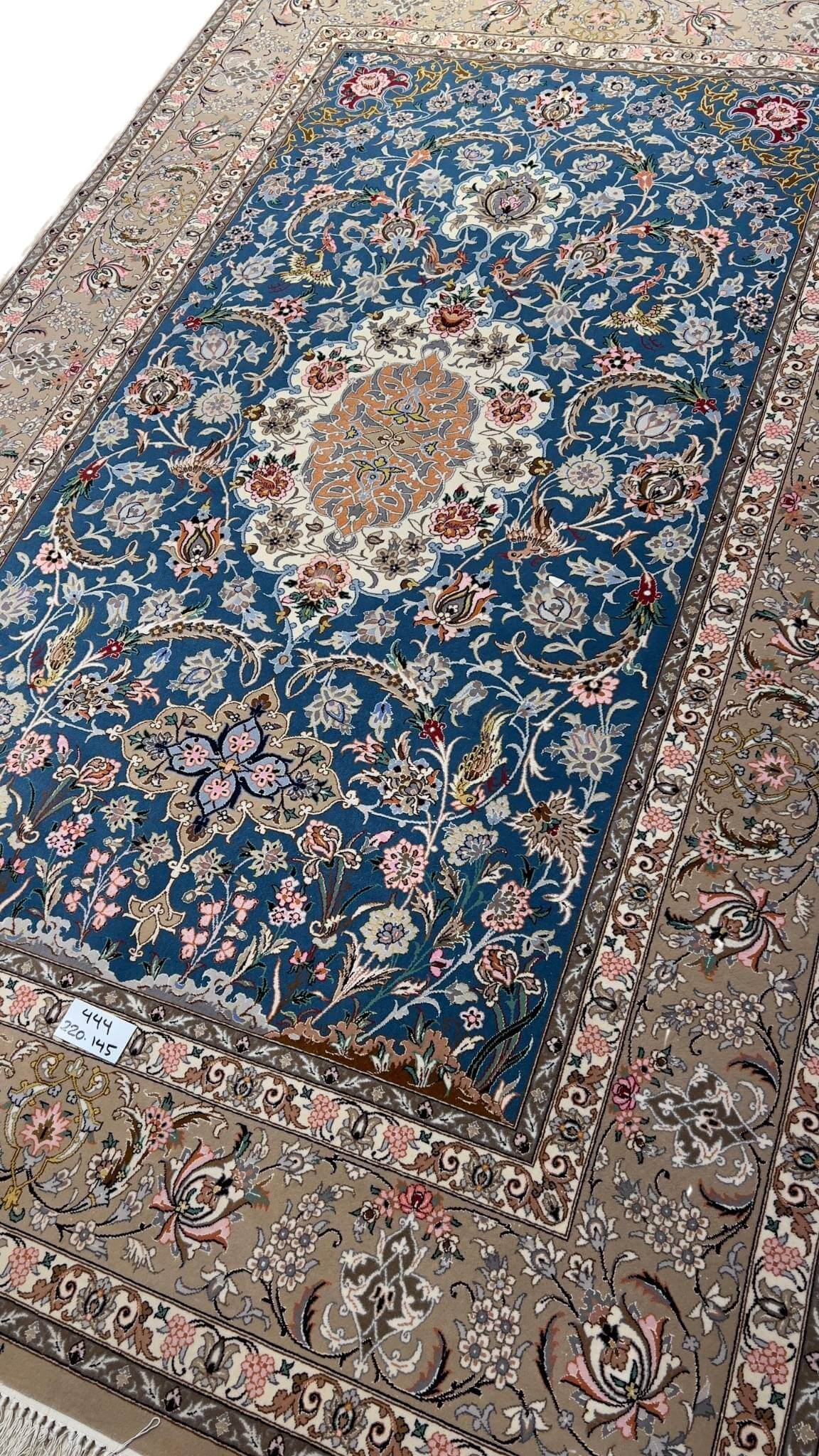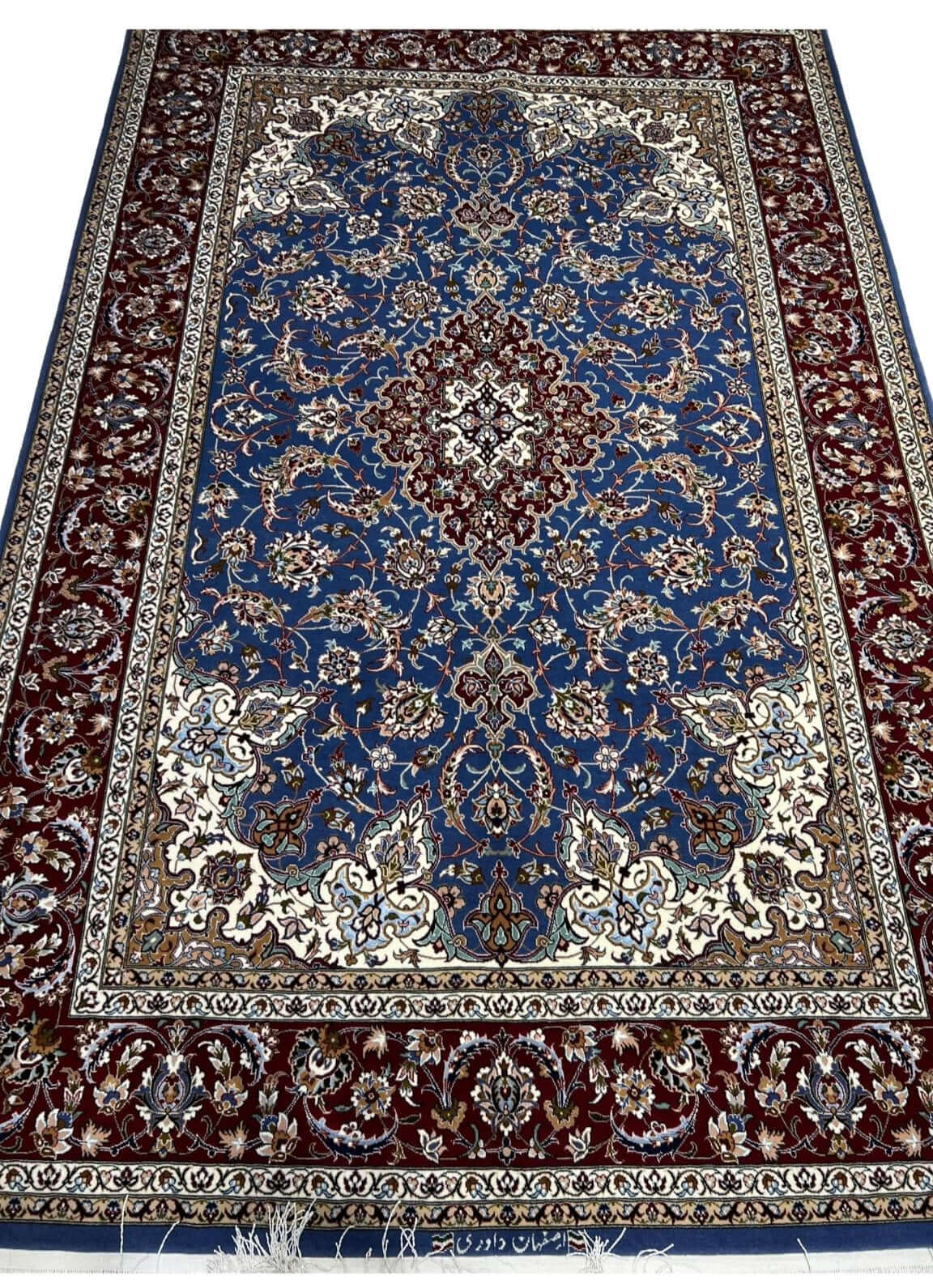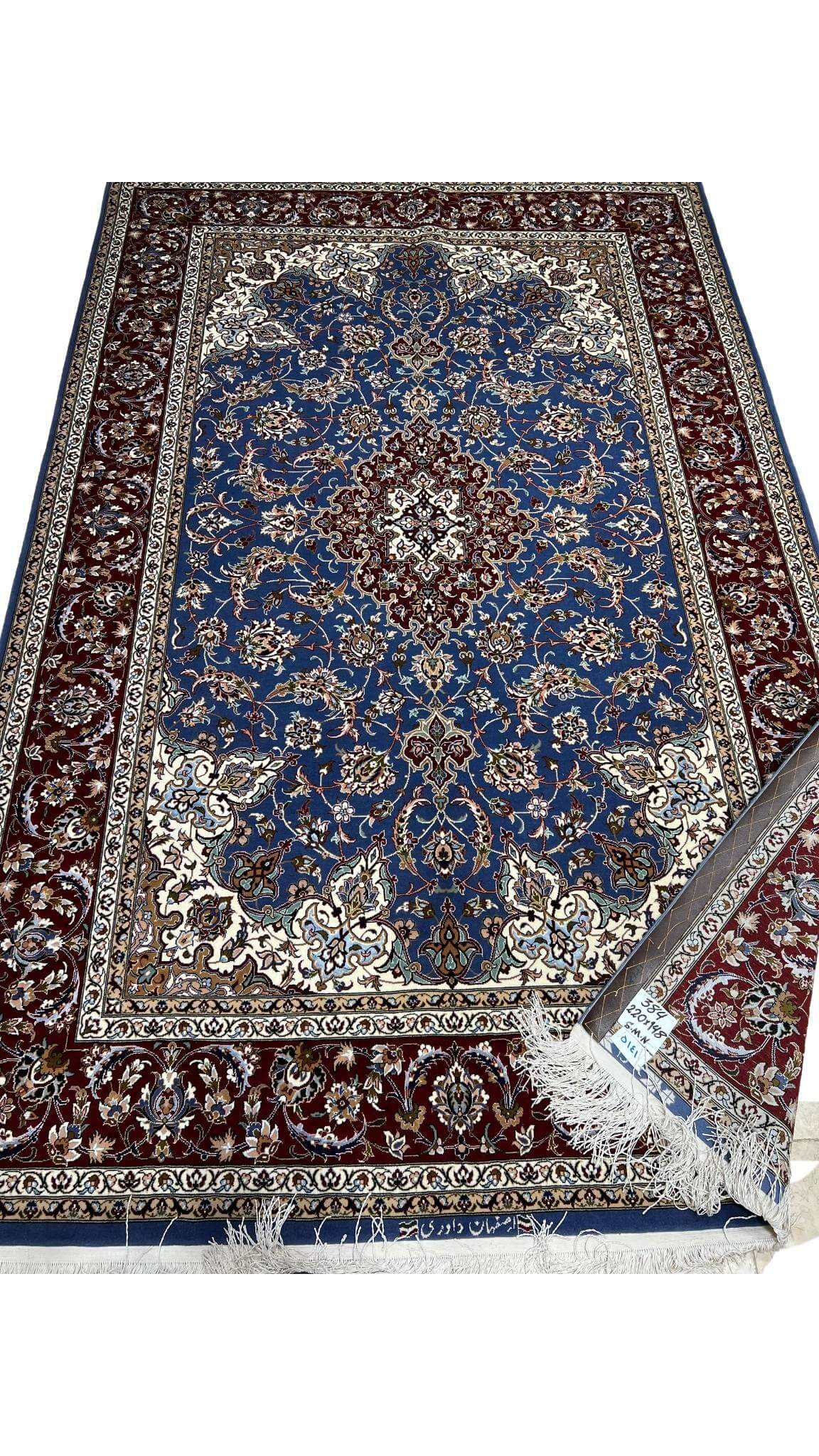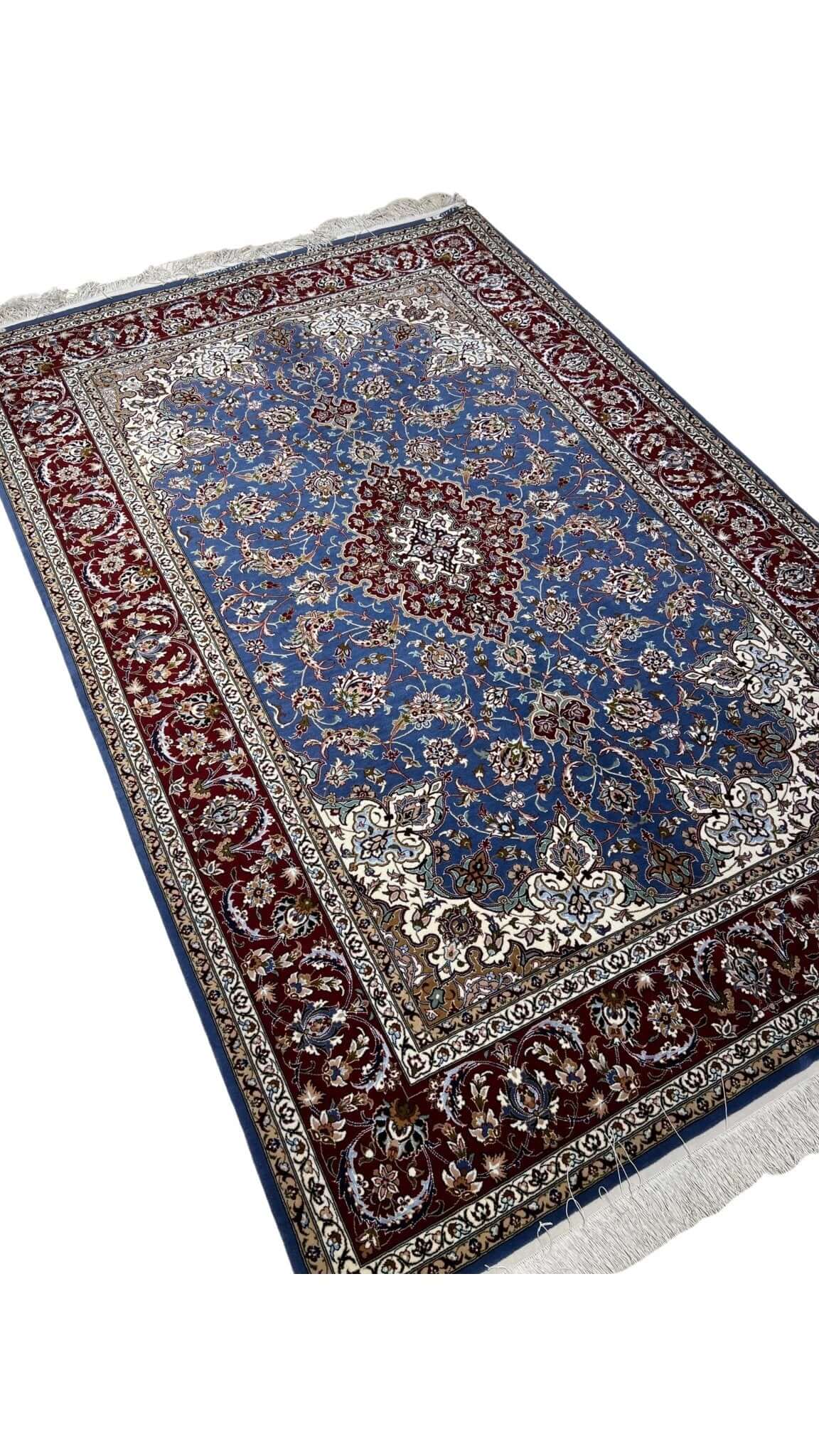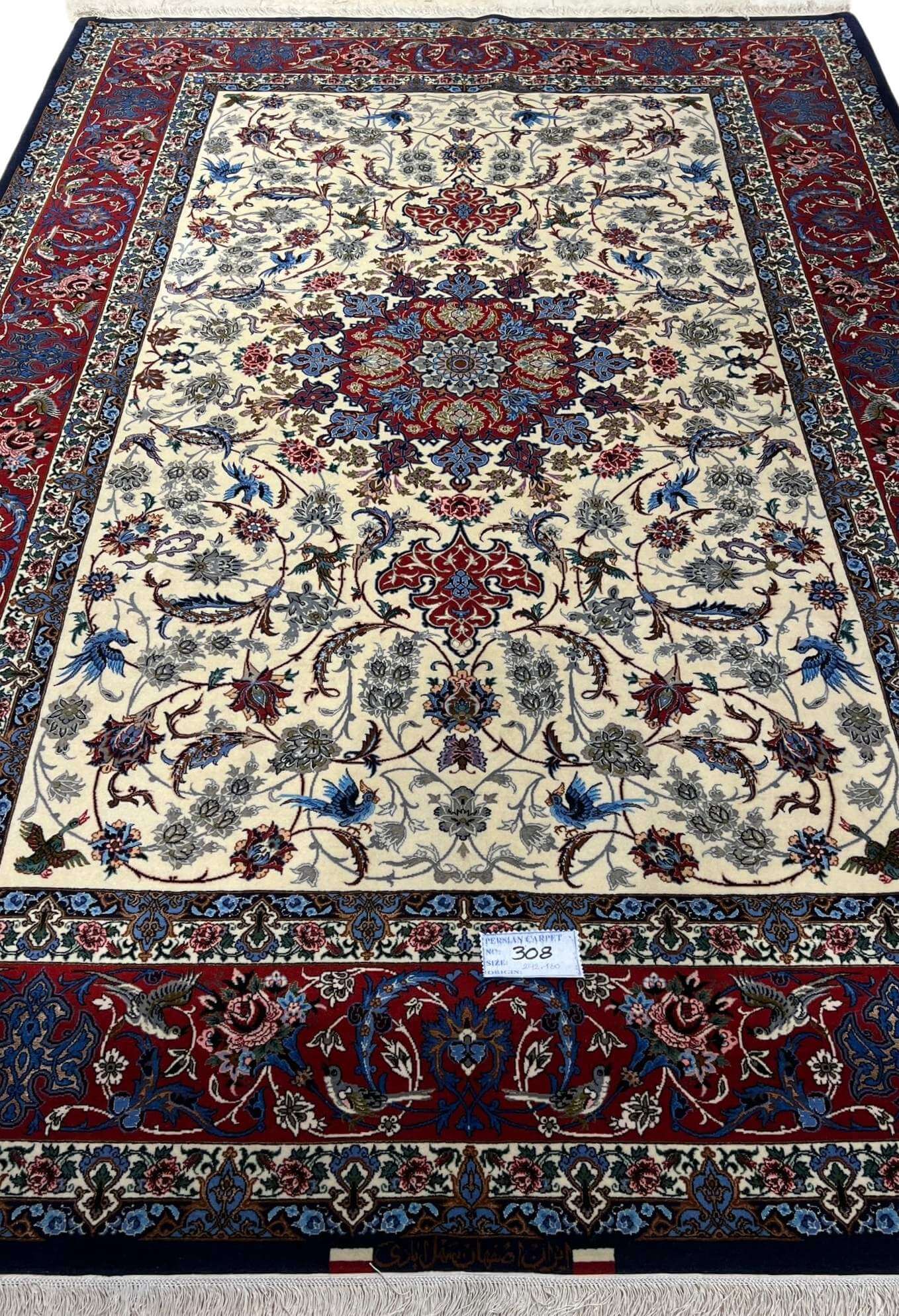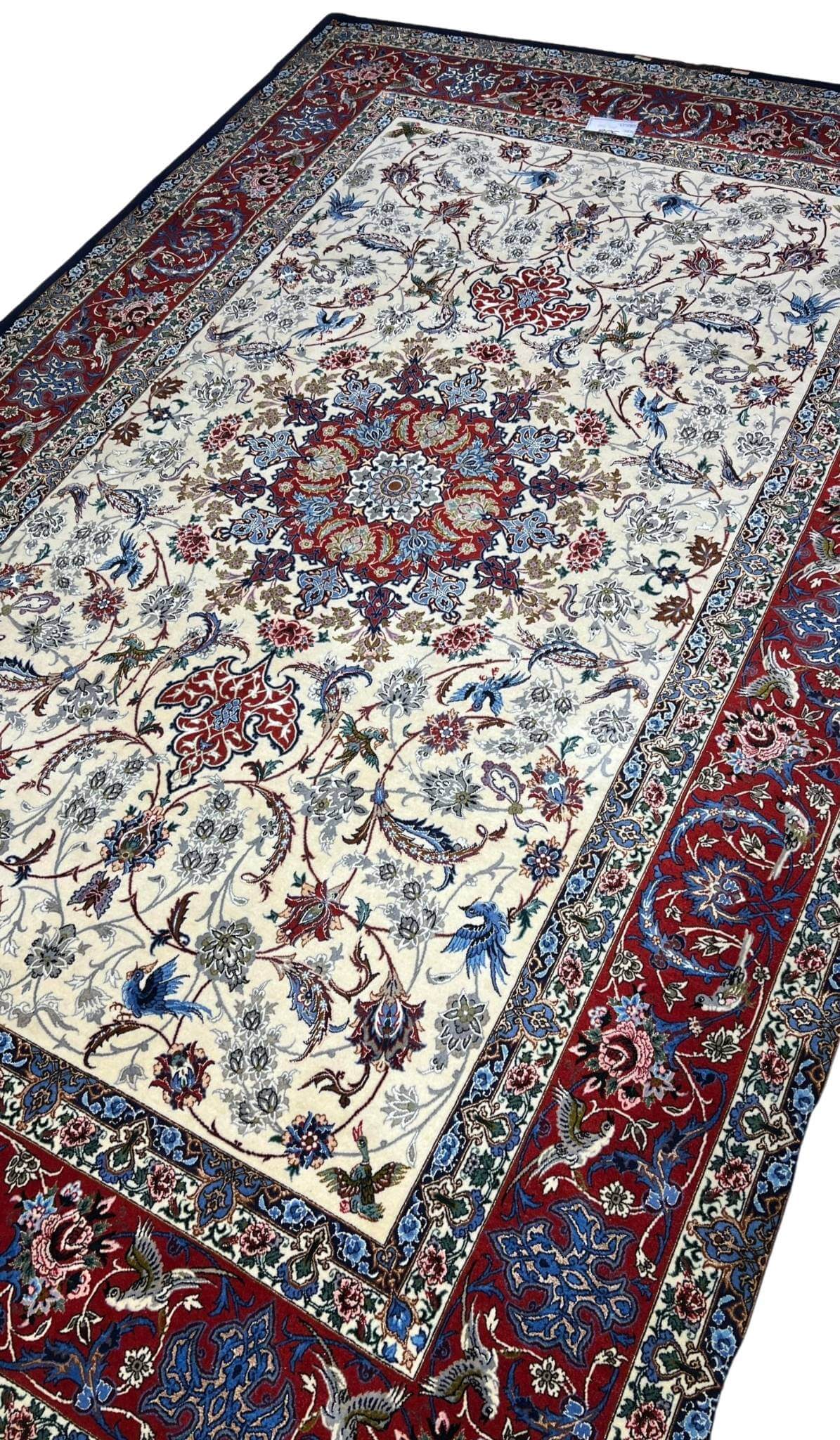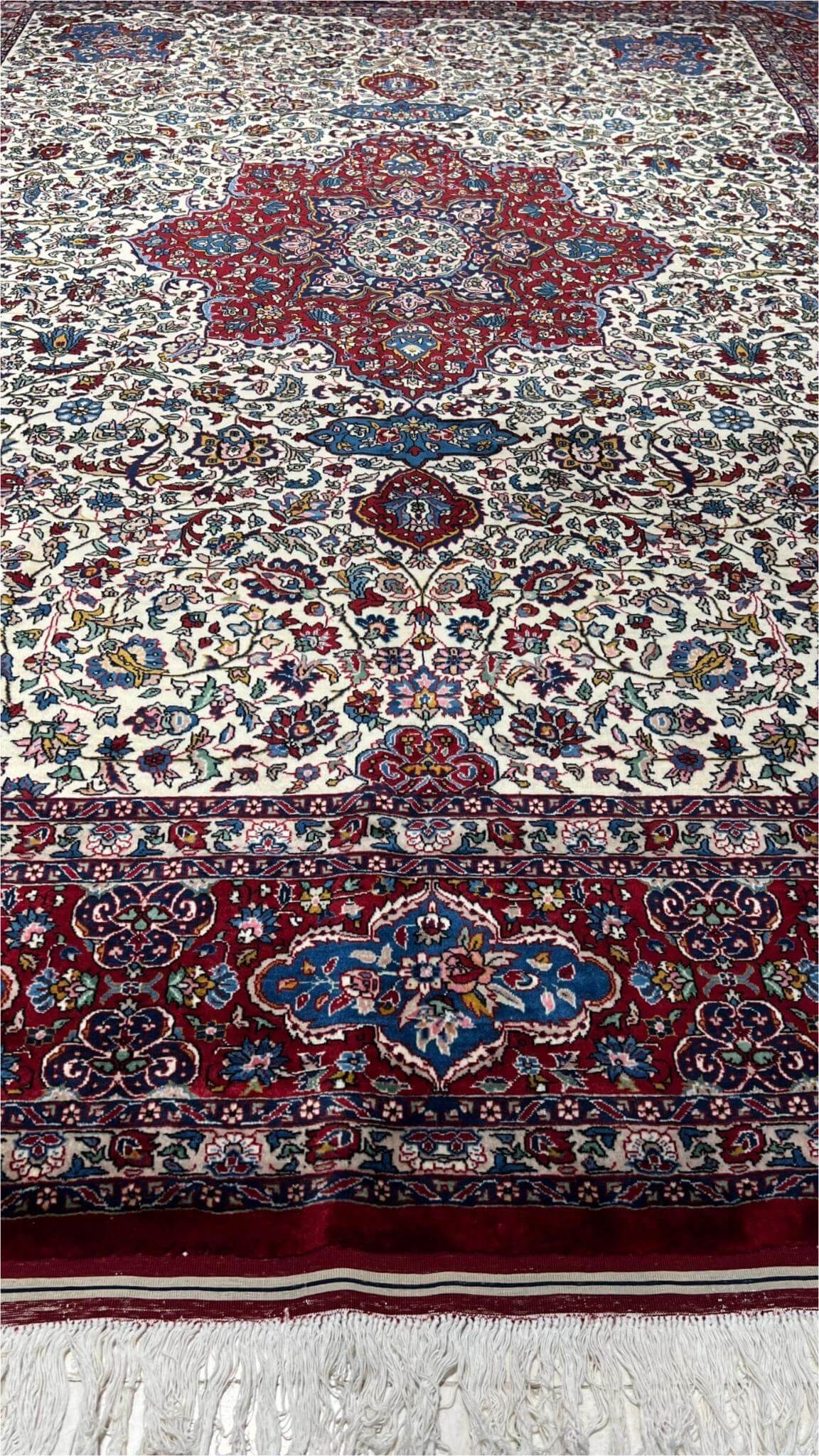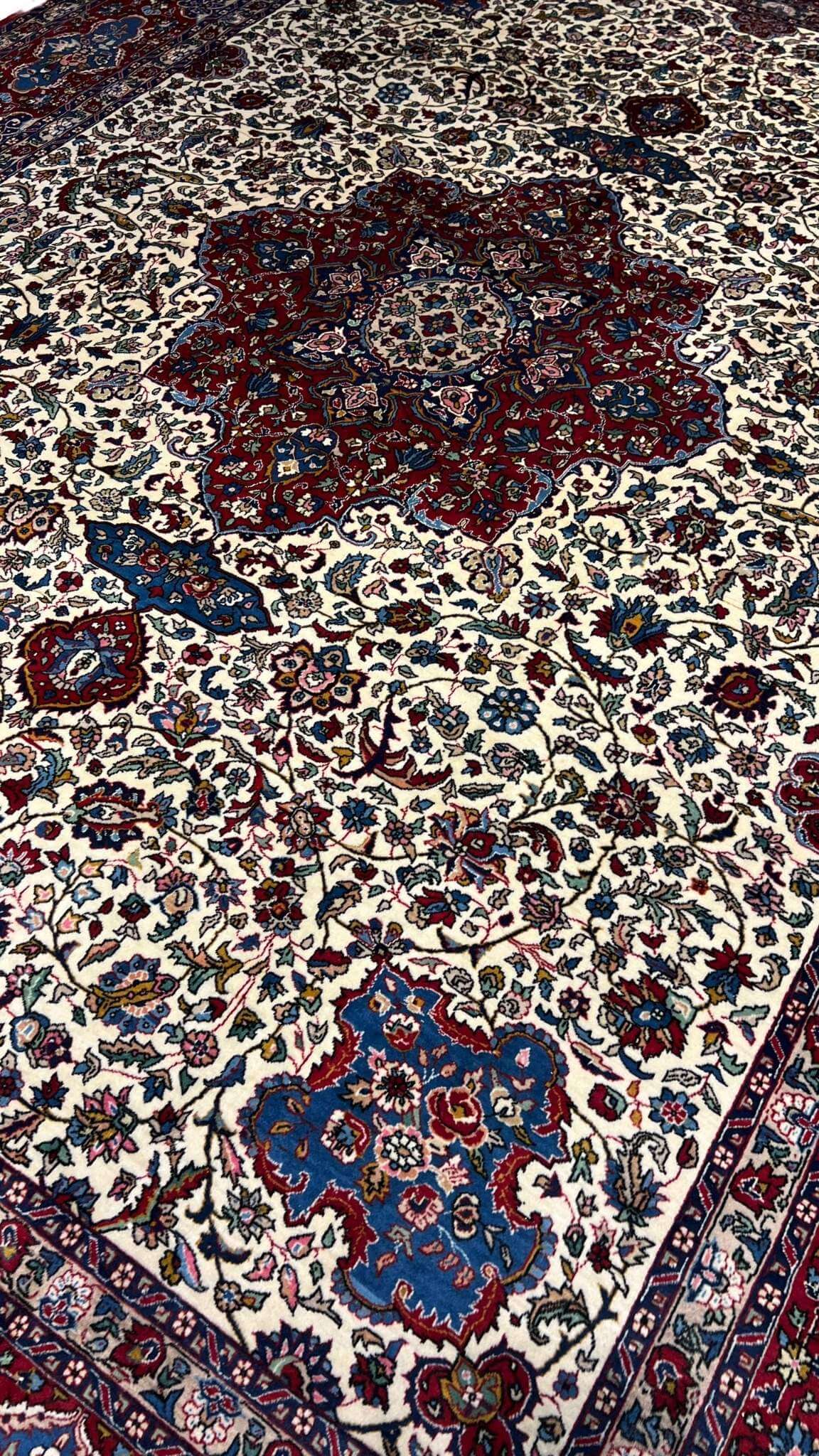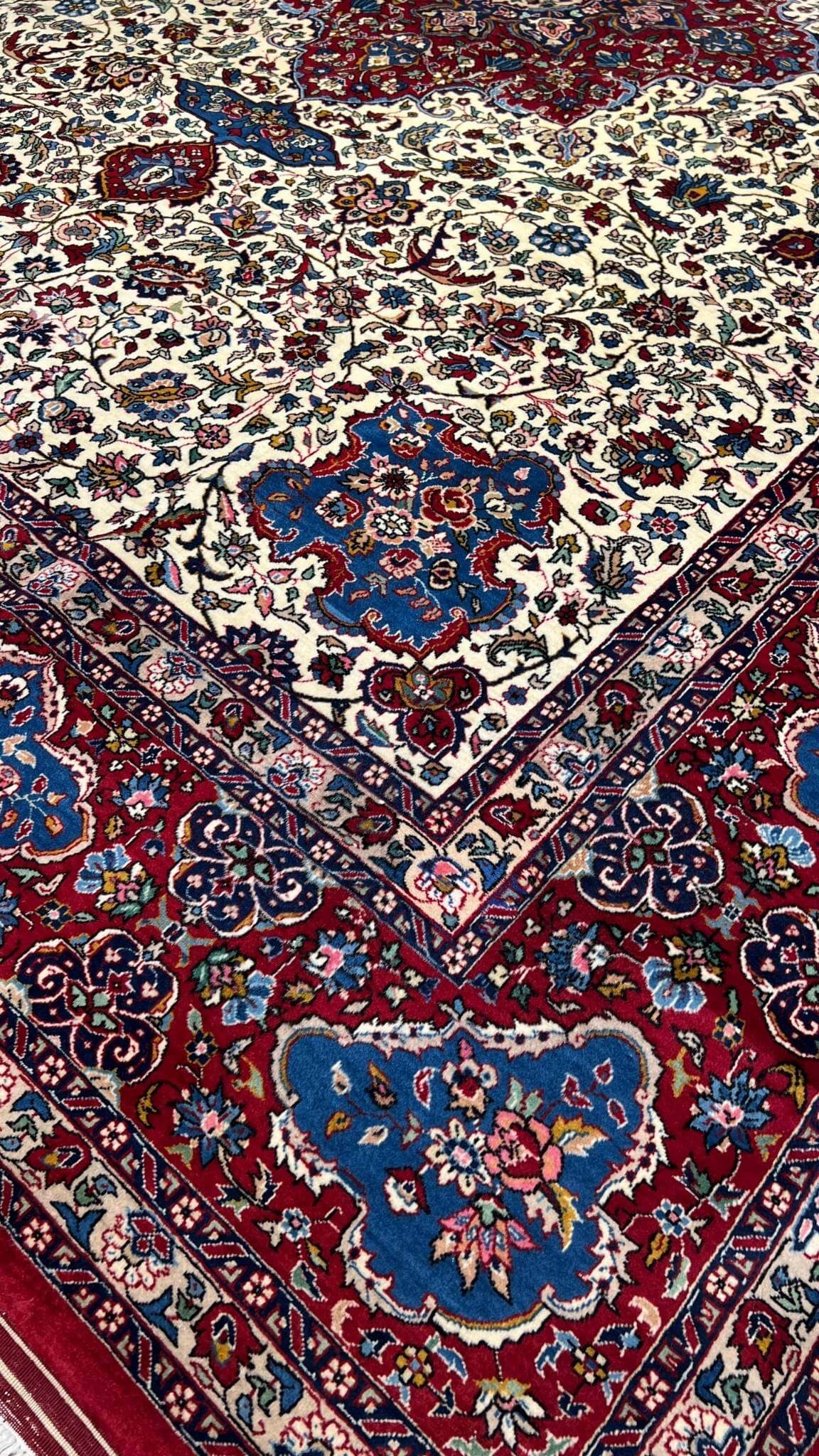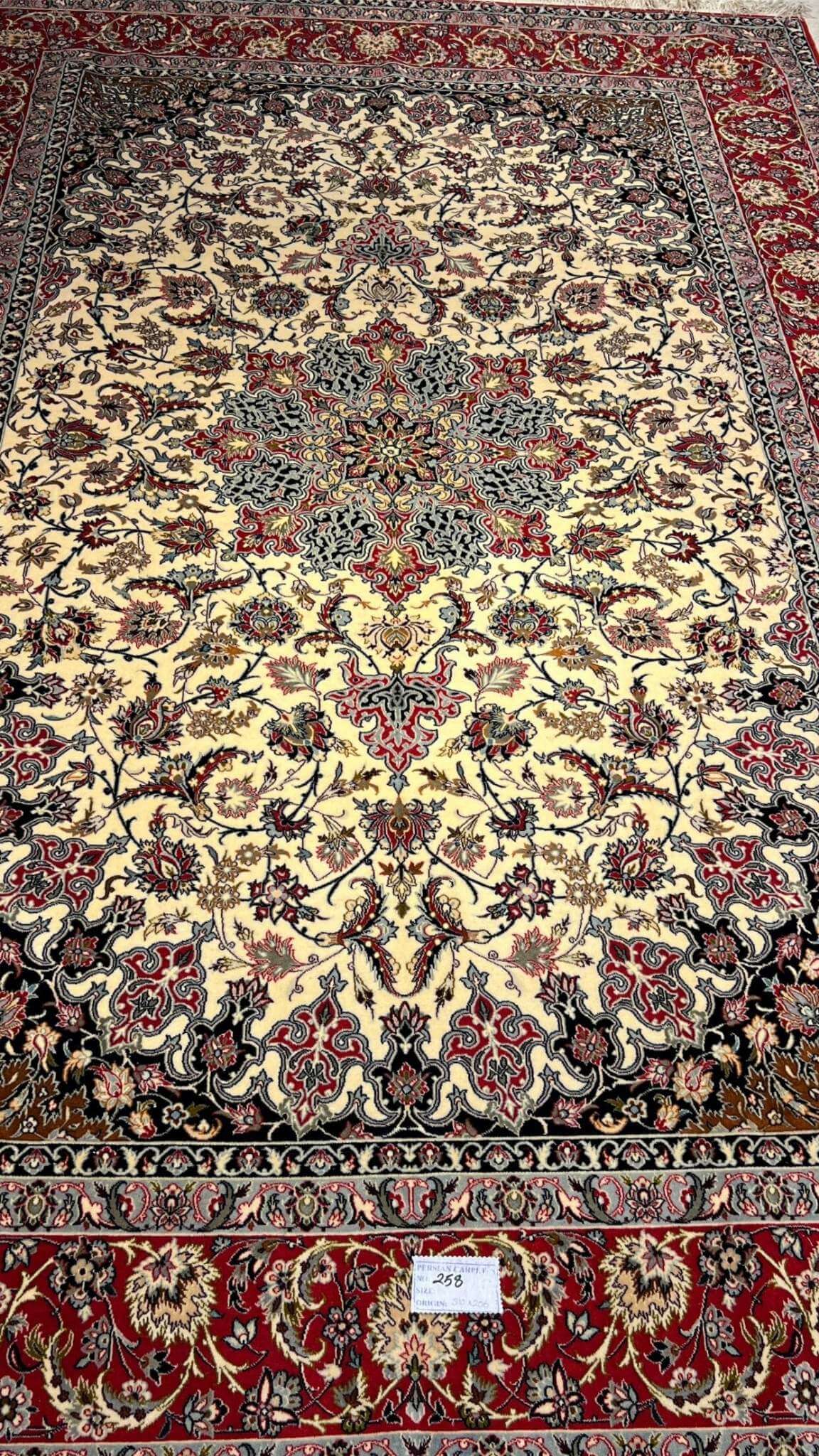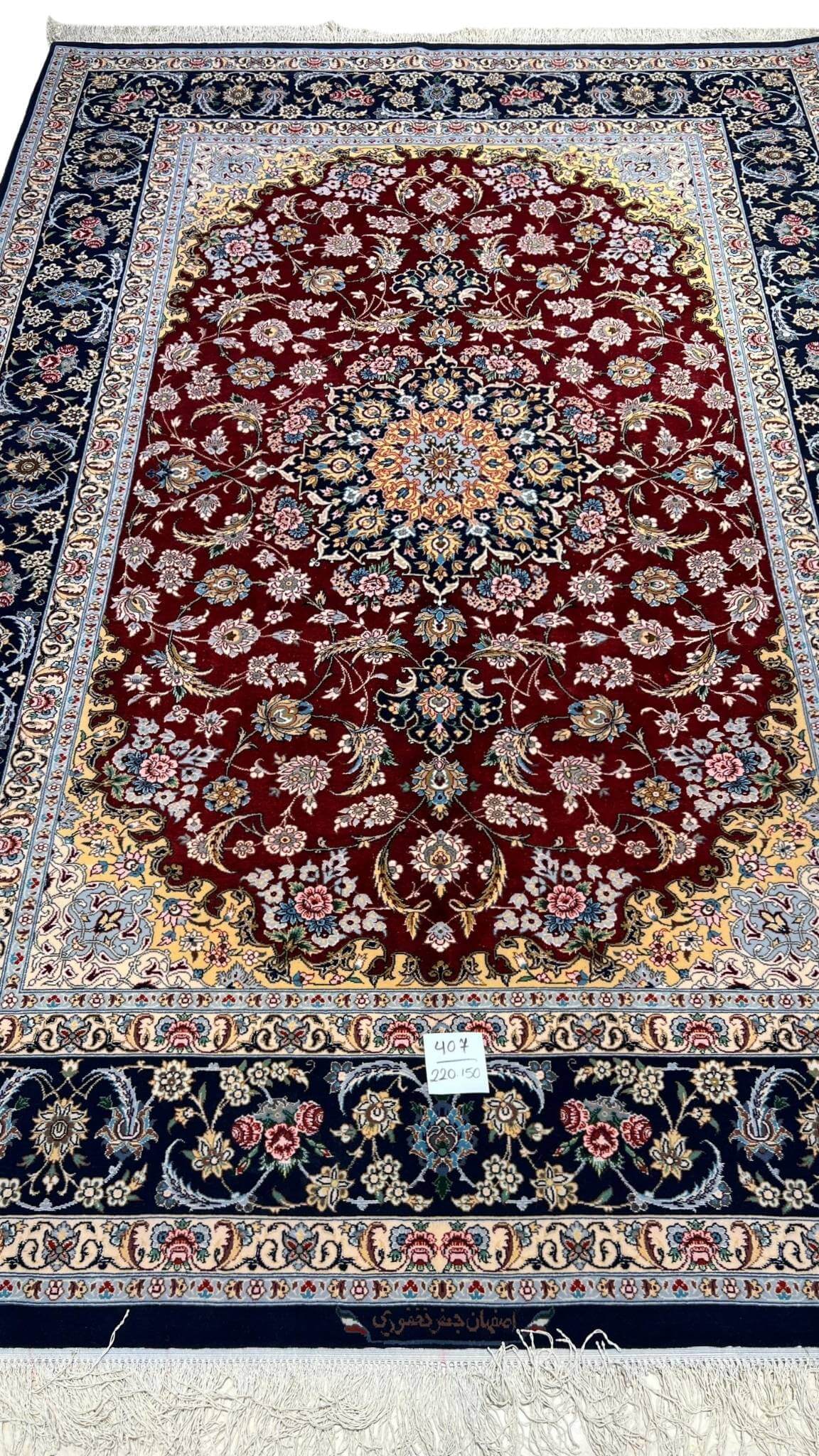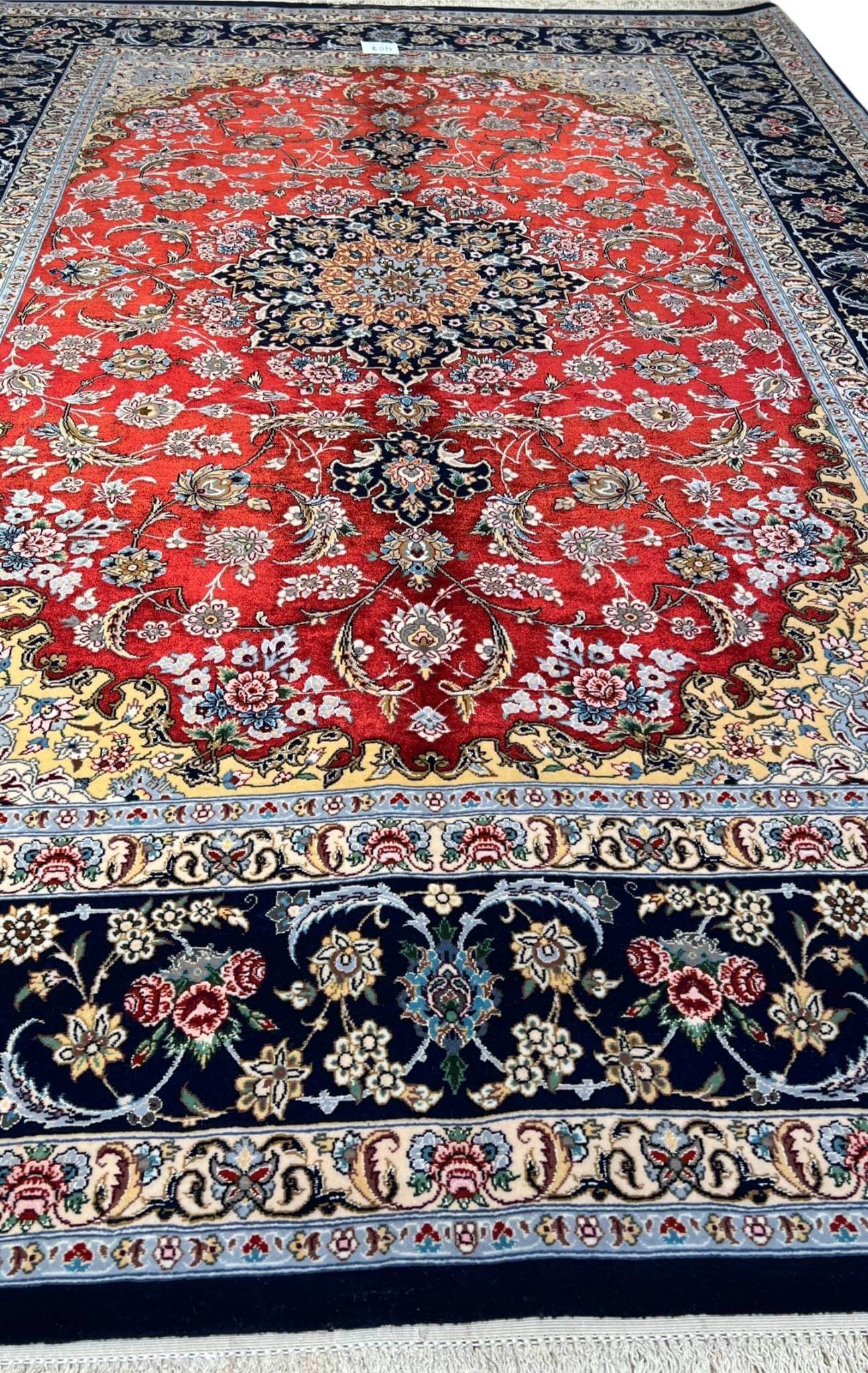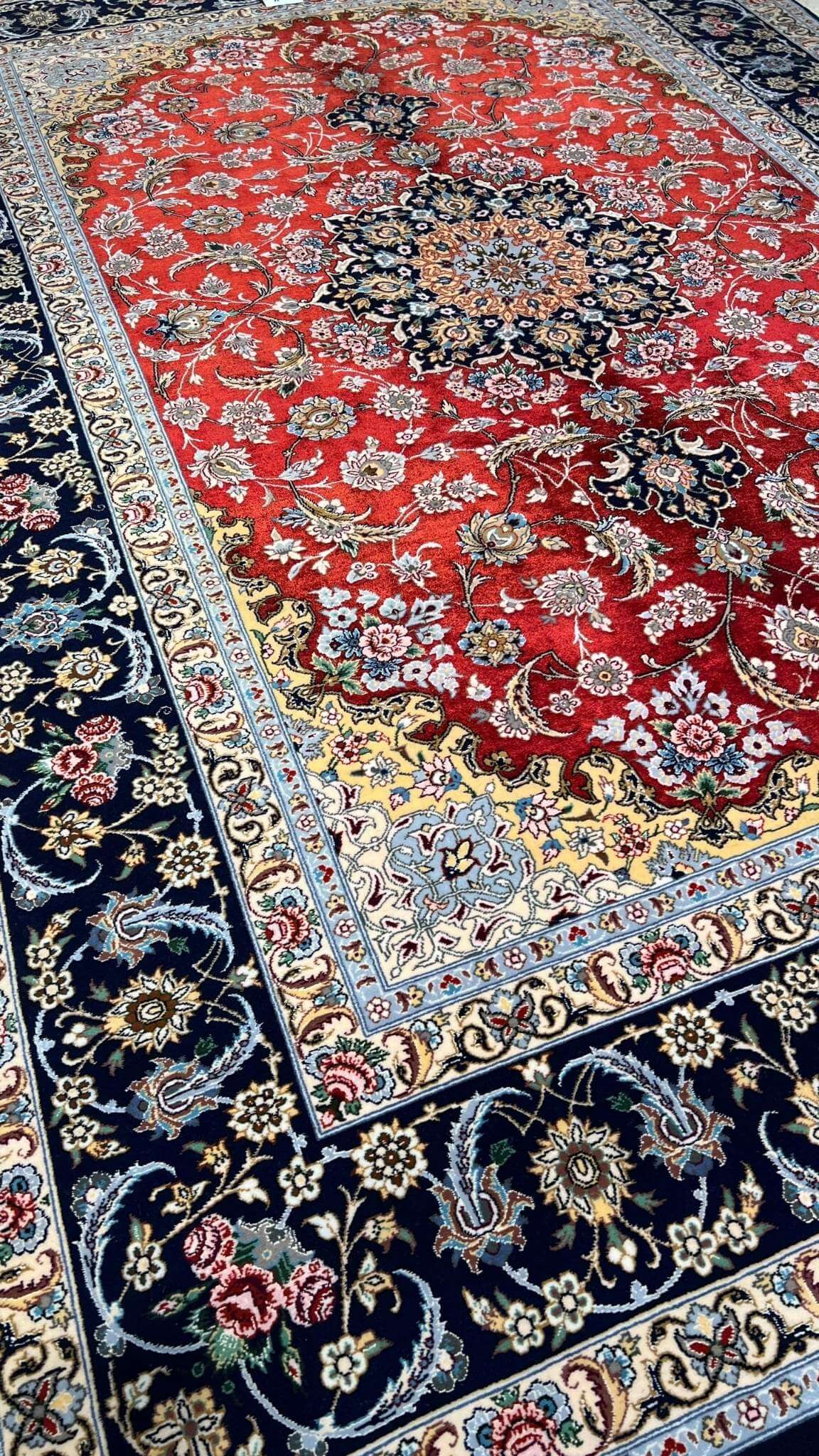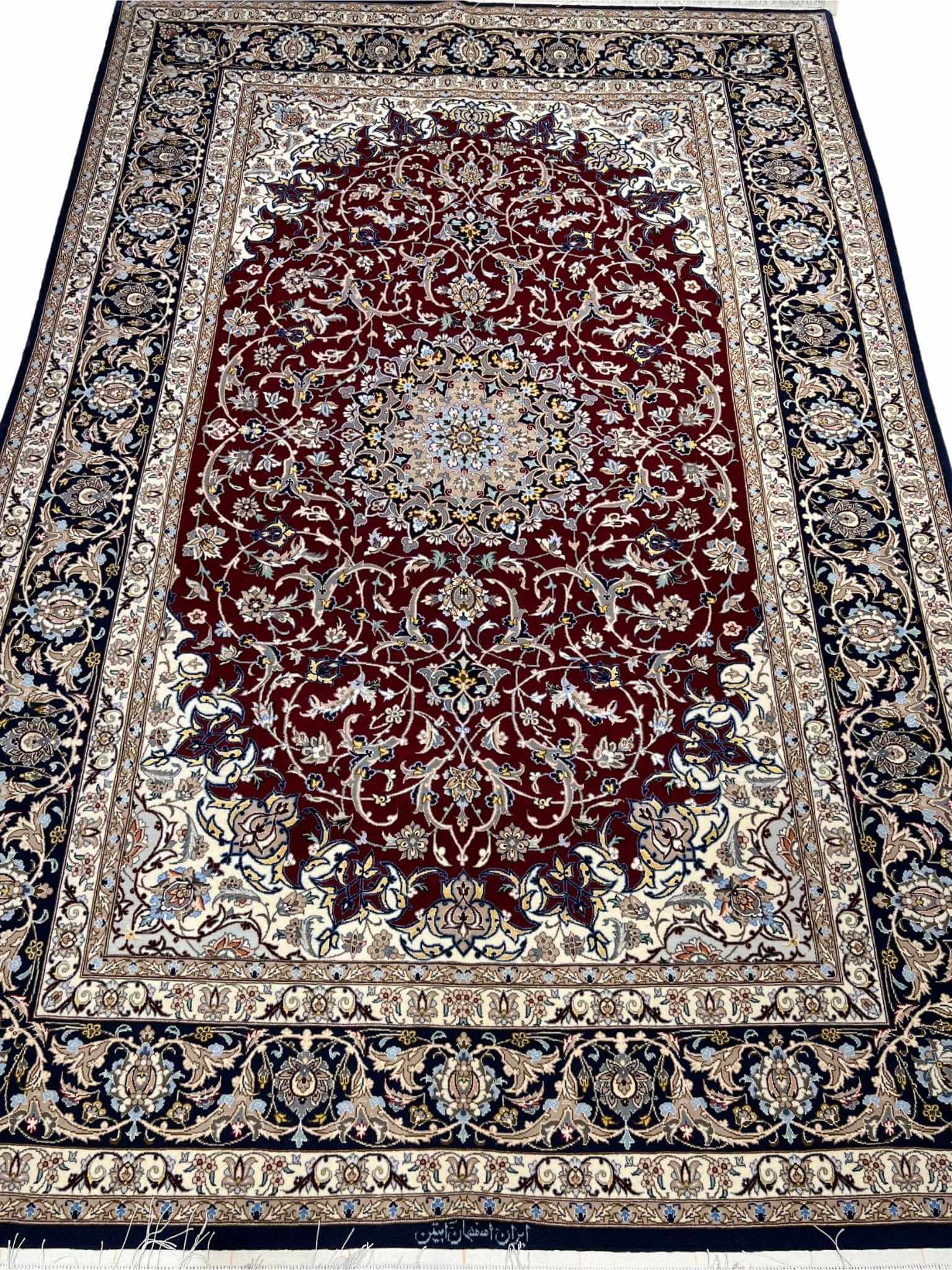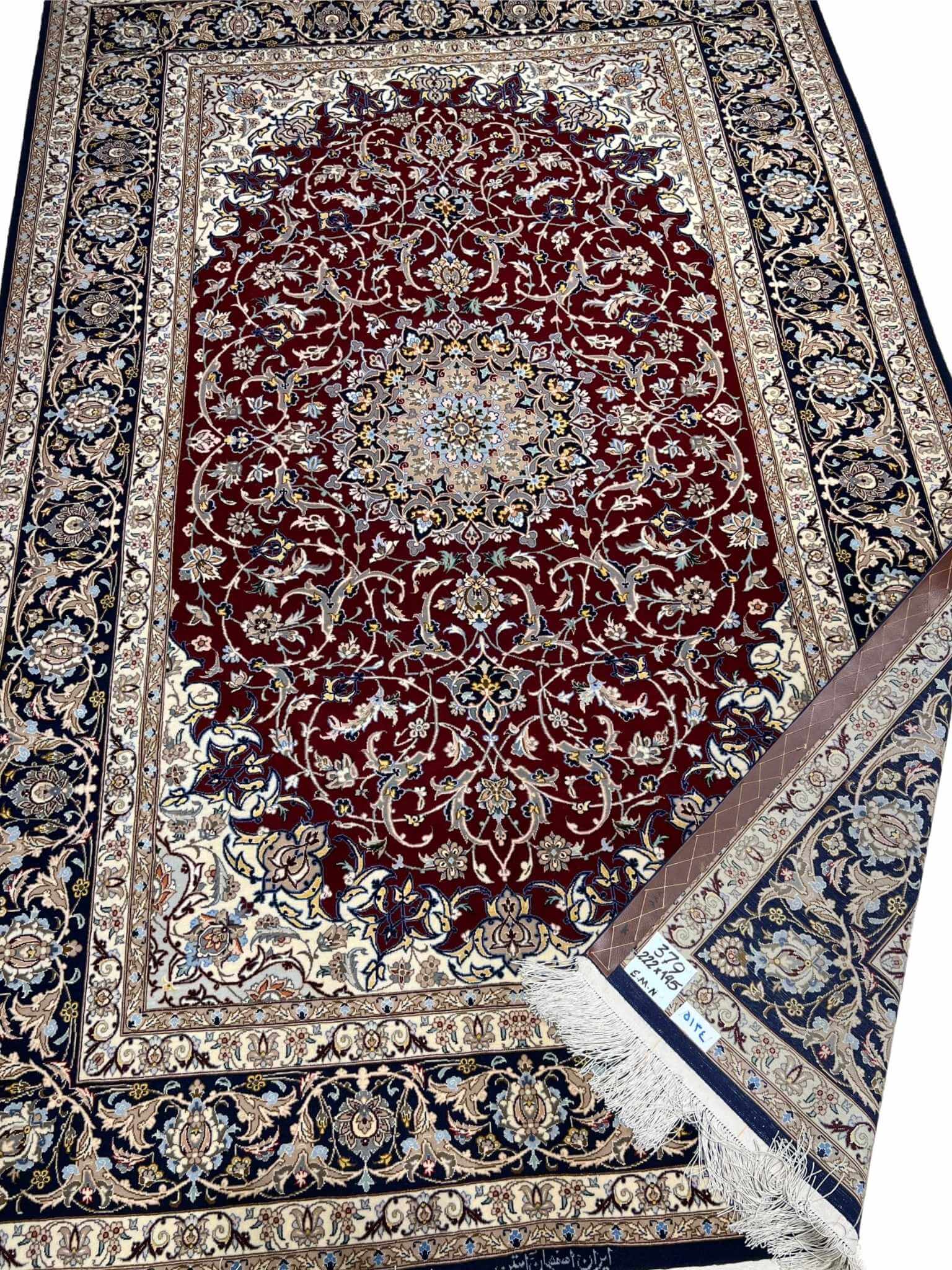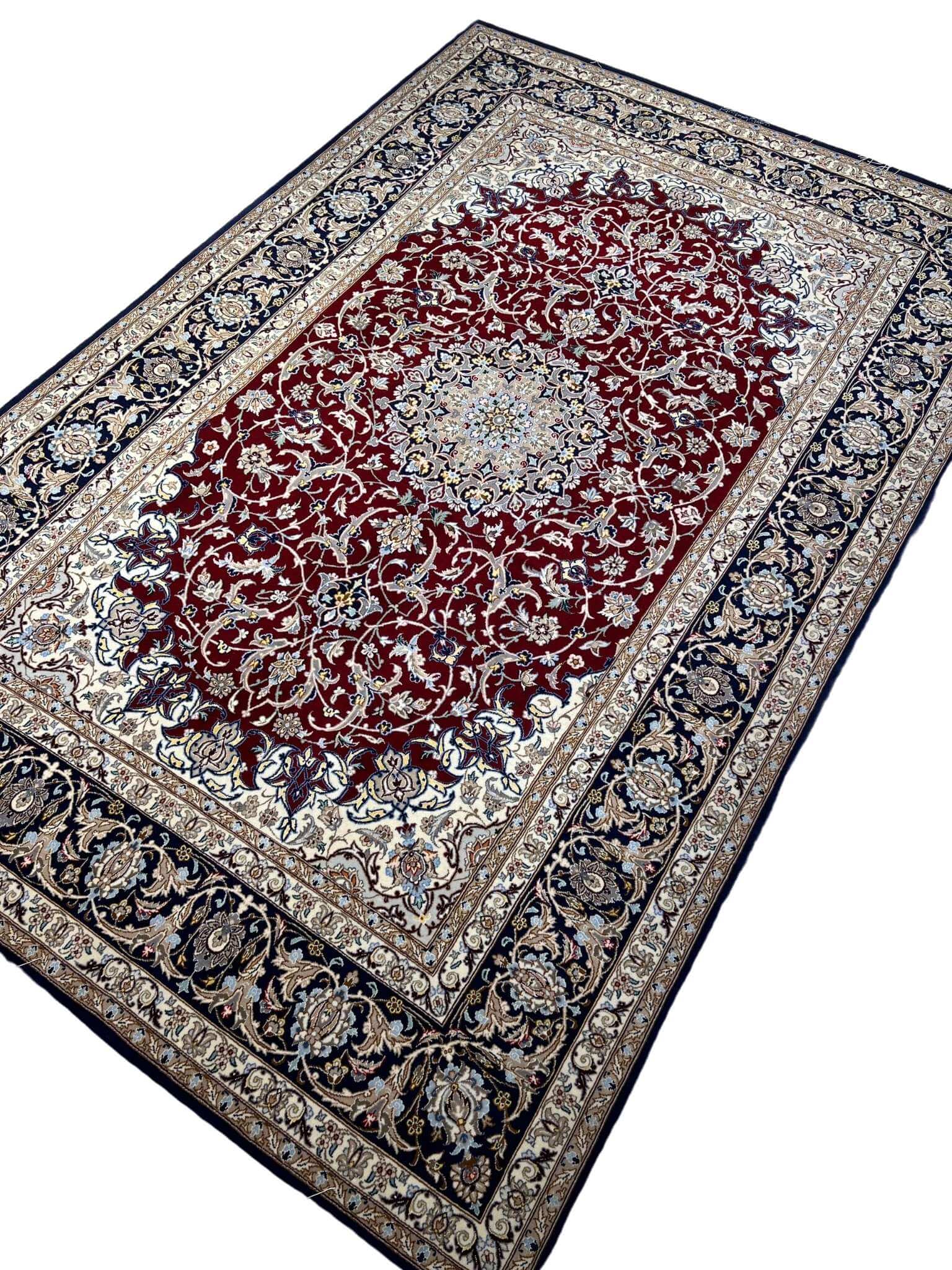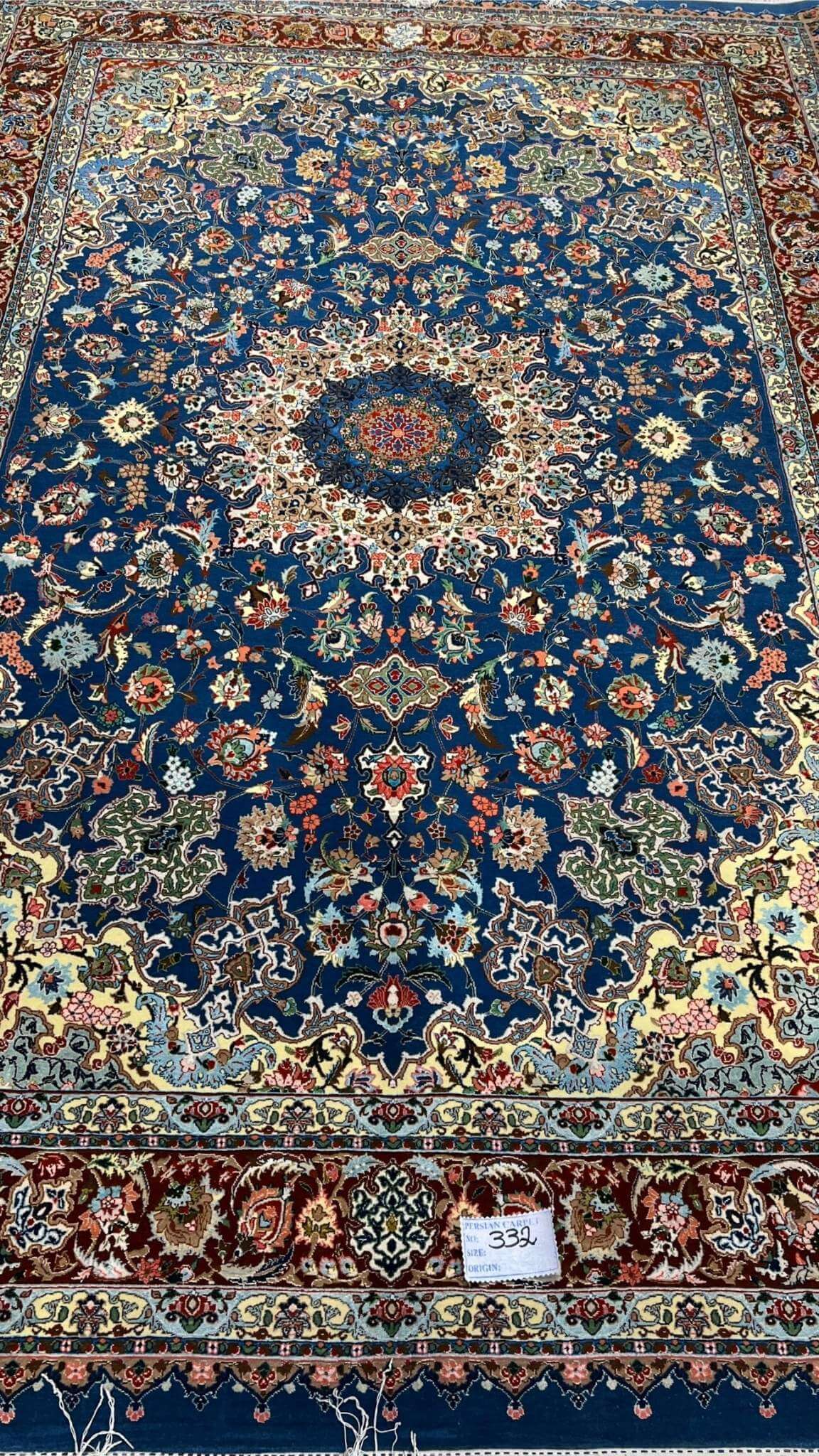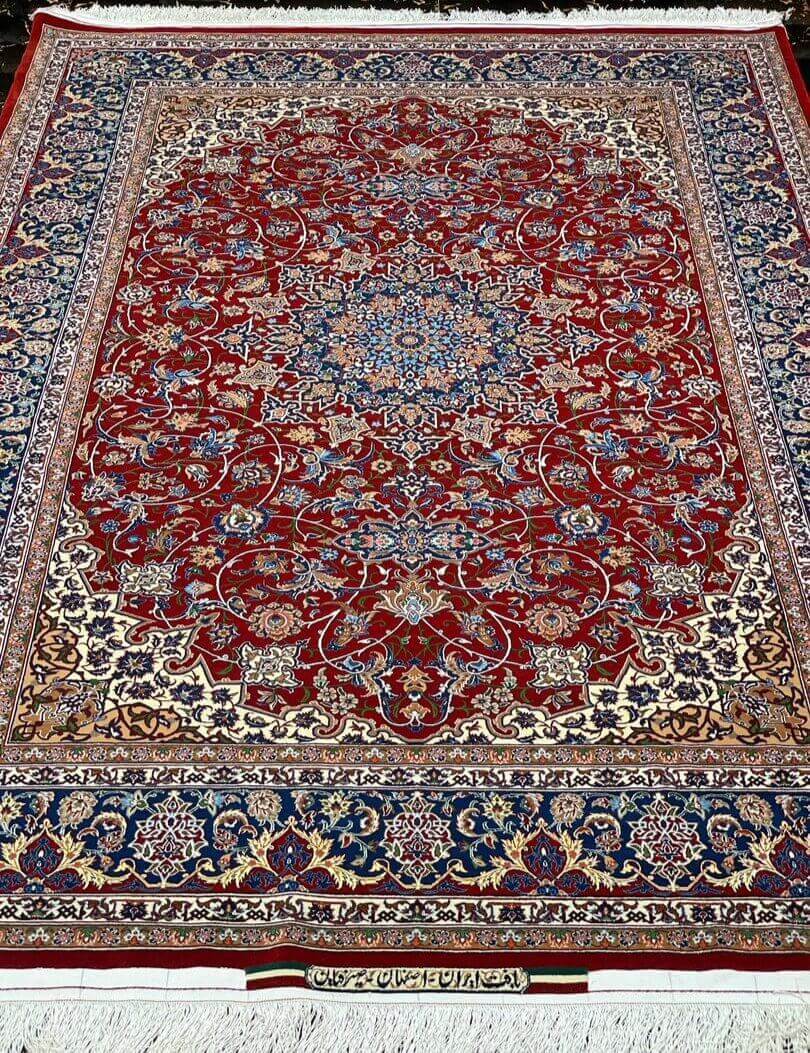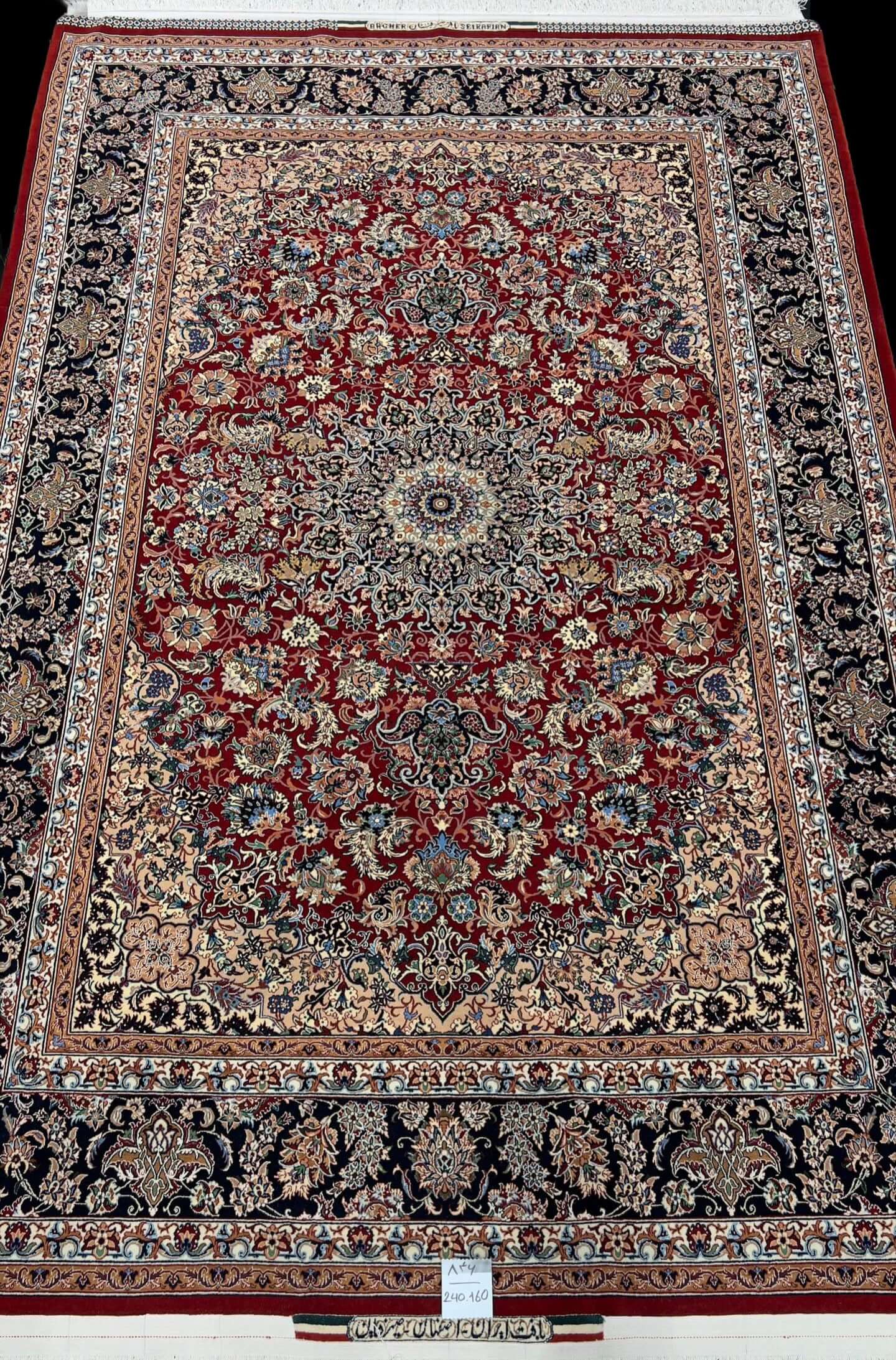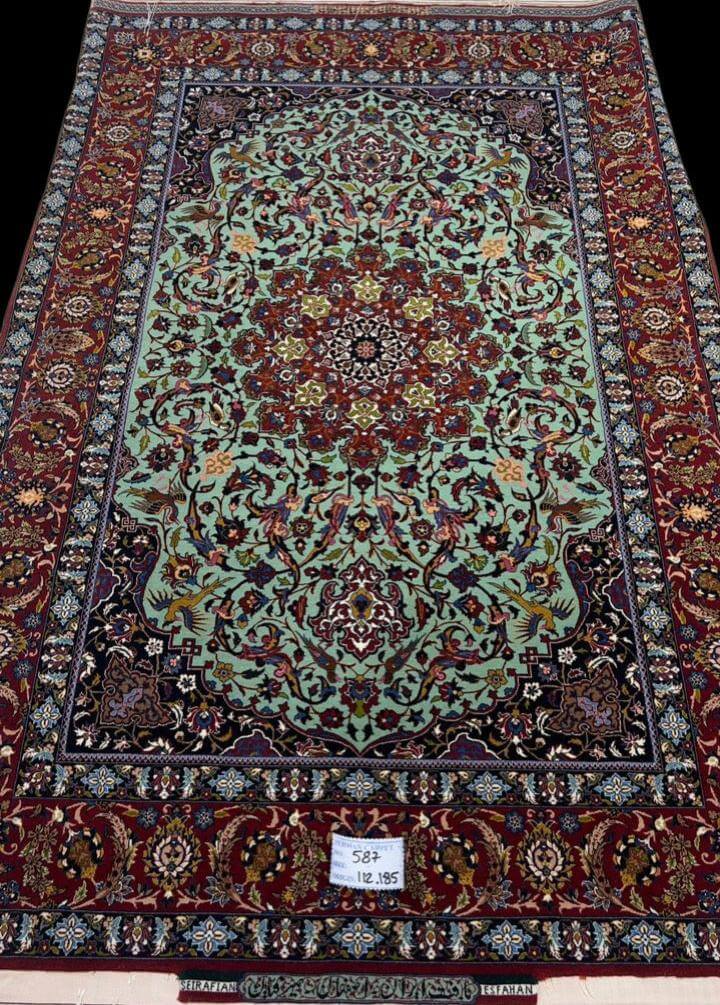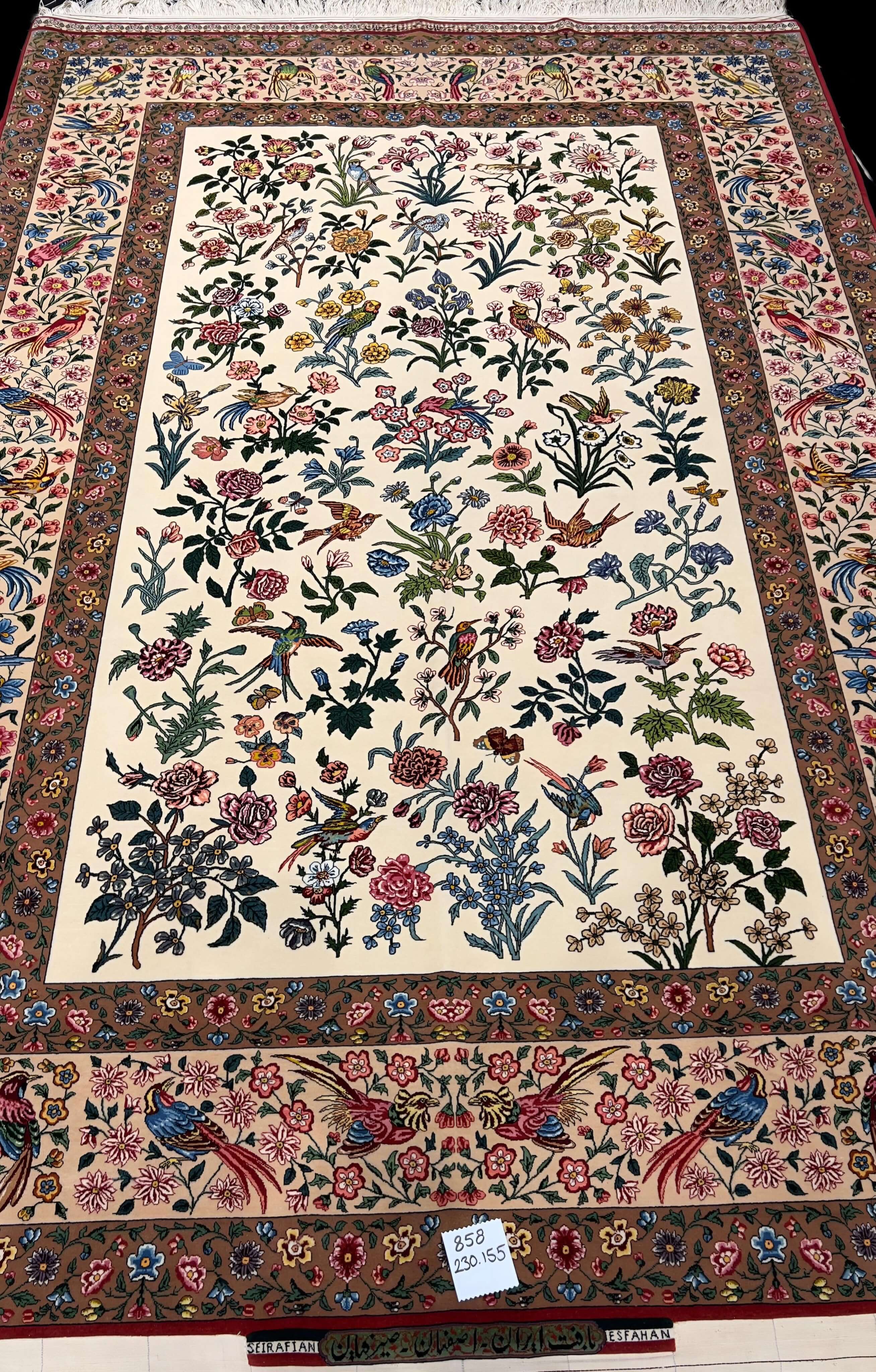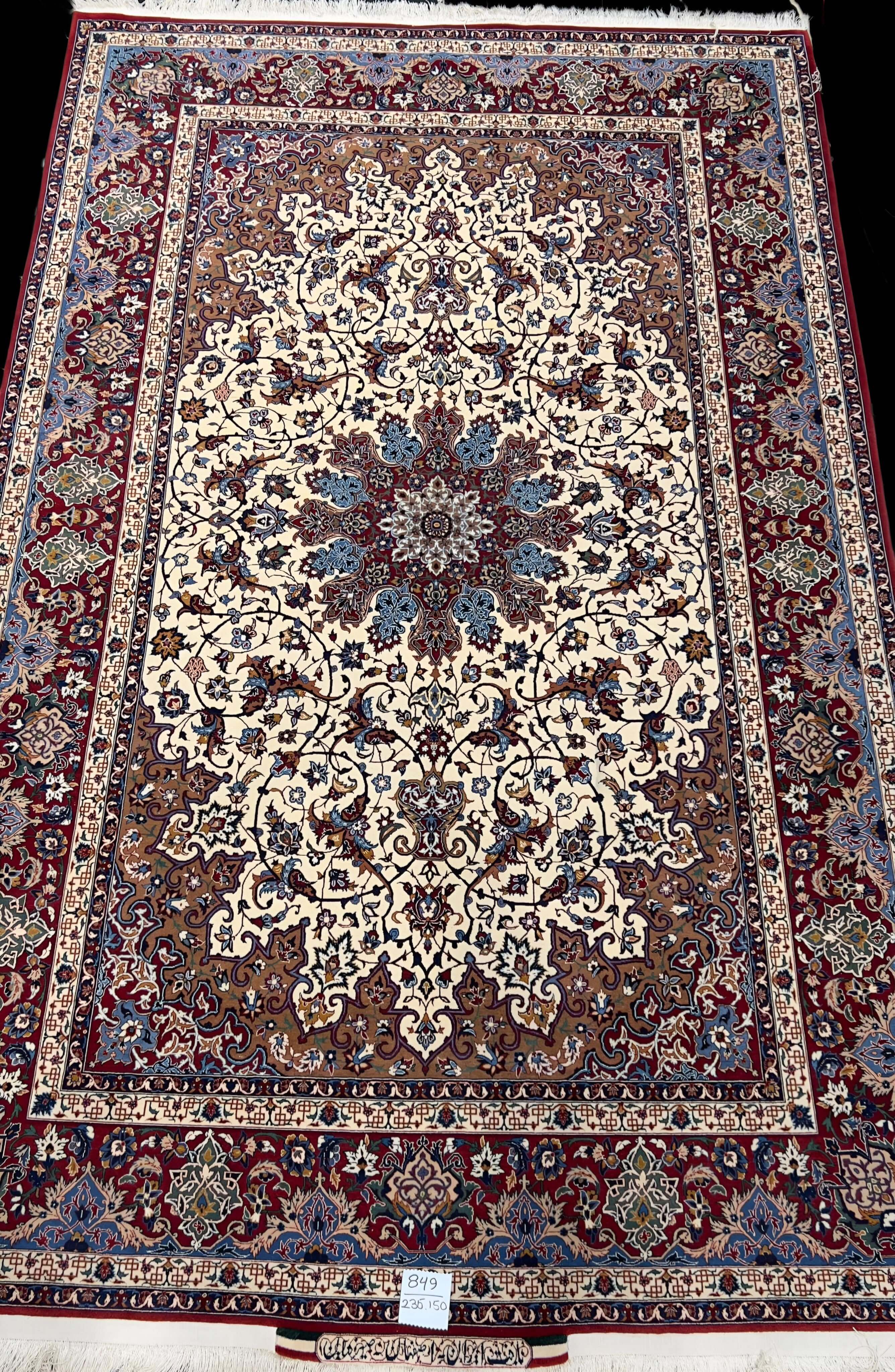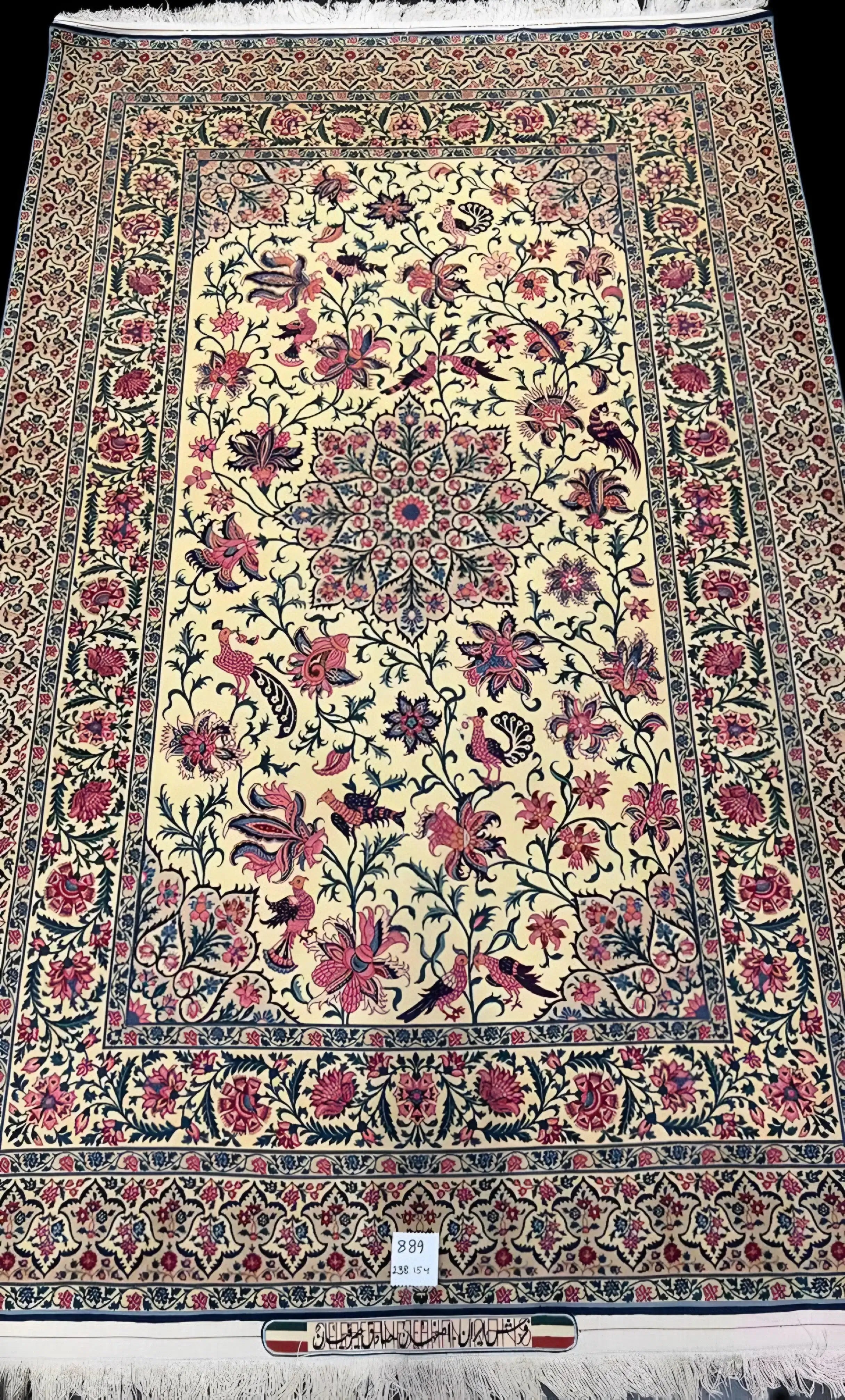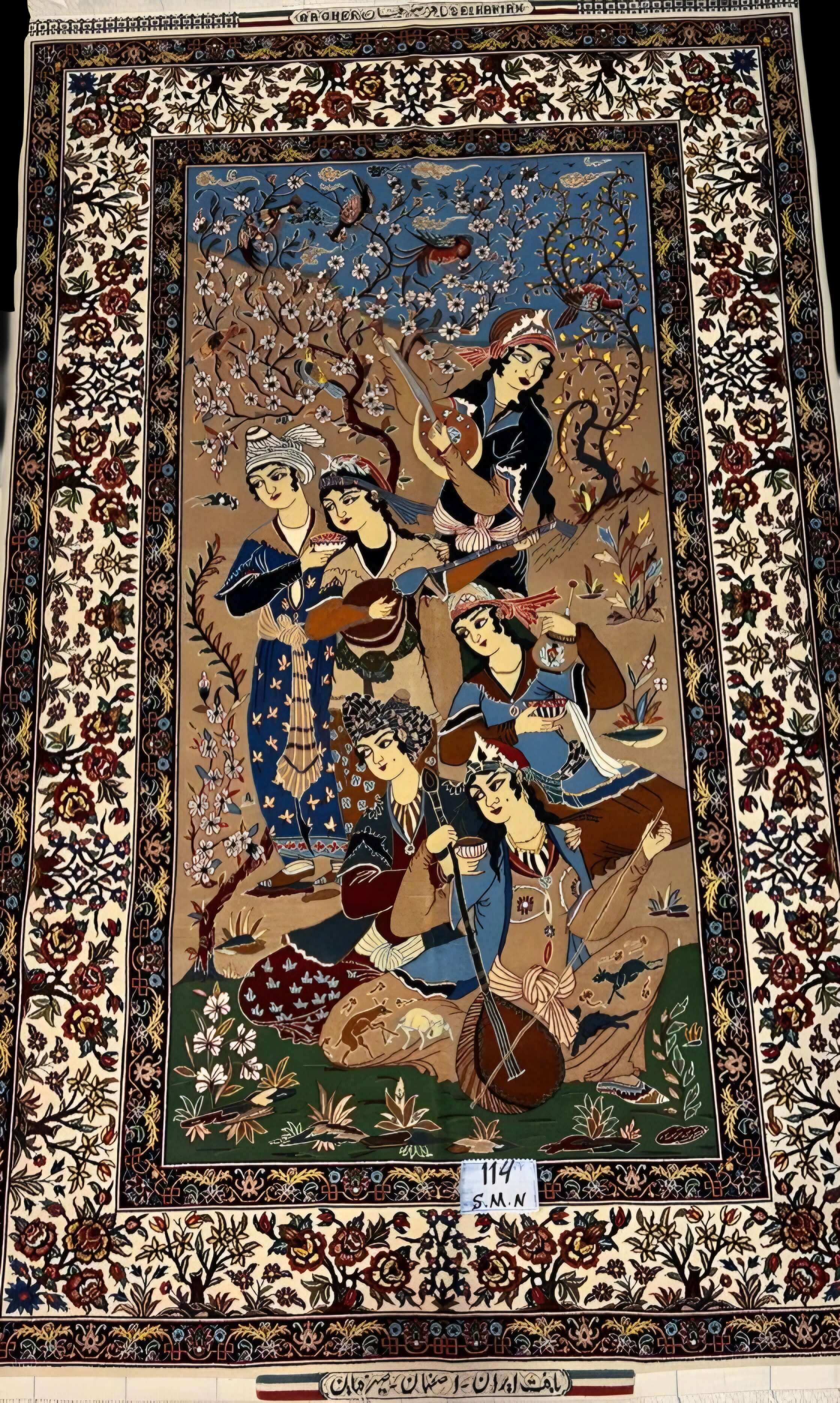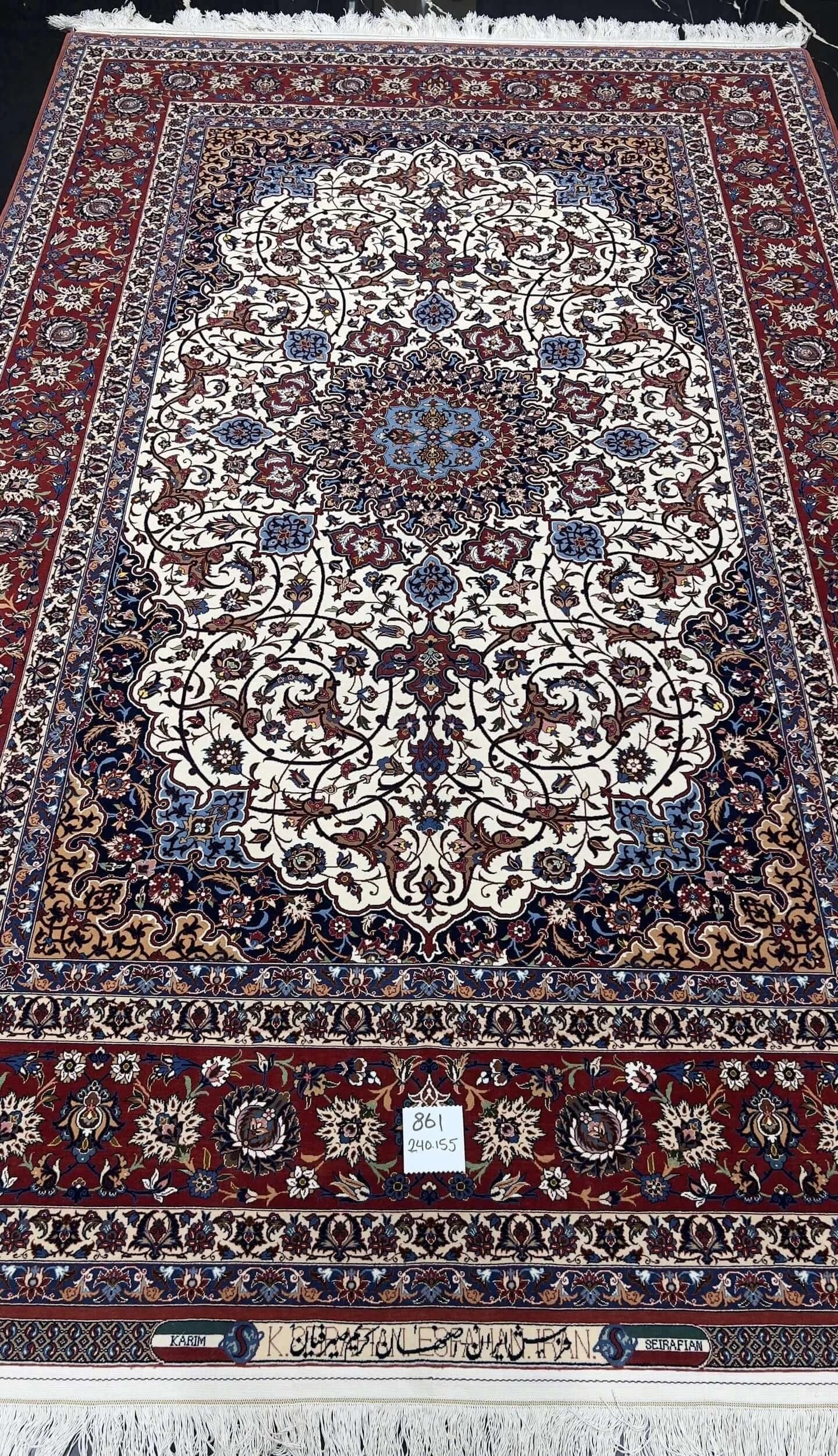"Isfahan Rugs – Handwoven Persian Elegance and Timeless Heritage"
Experience the timeless elegance of Persian artistry with our exclusive **Isfahan Rugs Collection**. Handcrafted in the ancient city of Isfahan, these rugs are celebrated worldwide for their intricate designs, exceptional craftsmanship, and luxurious materials like silk and wool. Each piece in this collection is more than just a rug—it’s a symbol of Persian history and culture, meticulously woven by master artisans using techniques passed down through generations.
"Why Choose an Isfahan Rug for Your Home?"
Isfahan rugs are renowned for their stunning beauty, exceptional craftsmanship, and unmatched quality, making them one of the most sought-after types of **Persian carpets**. Whether you’re a collector, a connoisseur of fine art, or simply looking to elevate your home decor, an **Isfahan rug** is more than just a purchase—it’s an investment in tradition, artistry, and timeless elegance. Featuring intricate motifs and a luxurious blend of silk and wool, these rugs bring sophistication and cultural richness to any space.
"Craftsmanship: The Artistry Behind Isfahan Rugs"
Isfahan rugs exemplify the pinnacle of Persian craftsmanship, hand-knotted using traditional techniques perfected over centuries. Master artisans meticulously work on vertical looms, following intricate templates that ensure precision in every knot. These detailed designs not only highlight the artistry behind each rug but also guarantee durability, making every **Isfahan rug** a timeless masterpiece and a lasting addition to your home.
"Knotting Techniques in Isfahan Rugs: Precision and Elegance"
The knotting technique is a defining feature of the quality and intricacy of **Isfahan rugs**. Predominantly, these masterpieces use single knots, also known as Persian or Senneh knots, which allow for the creation of intricate patterns and high-knot-density designs. In contrast, double knots, or Turkish Ghiordes knots, are typically found in tribal or lower-quality rugs. The precision of single-knotted rugs ensures their superior craftsmanship, making every **Persian Isfahan rug** a work of art that combines durability with exquisite detail.
"The Precision of Single Knots in Isfahan Rugs"
Single knots, also known as Persian or Senneh knots, are a signature feature of **Isfahan rugs**, celebrated for their precision and intricacy. This technique involves wrapping the yarn around a single warp thread, creating a tight, uniform weave that enables artisans to craft highly detailed and complex patterns. The result is a masterpiece of Persian artistry, where every knot contributes to the rug's exquisite beauty and durability, ensuring it remains a timeless addition to any home.
"Why Single Knot Rugs Are Preferred in Isfahan Carpets"
Single knot rugs are the pinnacle of precision and artistry in **Isfahan carpets**, offering unmatched detail, flexibility, and durability. The tighter knot structure allows weavers to craft intricate floral motifs, medallions, and arabesques, which are hallmarks of **Persian Isfahan rugs**. This technique also produces a smoother, more refined surface, enhancing the visual appeal of the rug. Despite their delicate appearance, single-knotted rugs are incredibly durable when crafted with high-quality materials like wool and silk, ensuring they remain timeless investments in both beauty and functionality.
"Understanding Double Knots in Persian Rugs"
Double knots, also referred to as Turkish or Ghiordes knots, are commonly found in tribal or more robust rugs rather than fine **Persian Isfahan carpets**. This knotting technique involves looping the yarn around two warp threads, resulting in a thicker, sturdier rug. While double-knotted rugs are prized for their durability, this method often limits the level of detail and intricacy achievable in the design, making them better suited for functional, high-traffic areas rather than showcasing intricate artistry.
"Key Features of Double-Knotted Rugs"
Double-knotted rugs are recognized for their robust construction and suitability for high-traffic areas. These rugs feature a thicker pile, offering exceptional durability, though their designs are often more geometric or simplistic due to the space taken up by the double knot. Commonly used in tribal and village rugs, the double knot technique involves looping yarn around two adjacent warp threads, creating a strong and substantial structure. While they lack the intricate detail of single-knotted rugs, double-knotted rugs excel in practicality and longevity, making them ideal for functional spaces.
"The Superiority of Single Knots in Isfahan Rugs"
Single knots are the hallmark of high-quality **Isfahan rugs**, setting the standard for intricate design and superior craftsmanship. This knotting method allows artisans to create the elaborate patterns and motifs that define these rugs, including floral designs, central medallions, and delicate arabesques. With a knot density often exceeding 500 to 1,000 knots per square inch (KPSI), single-knotted rugs achieve unmatched detail, smooth textures, and a luxurious appearance, making them a true masterpiece of Persian artistry.
"The Role of Double Knots in Lower-End Rugs"
Double knots, though seldom used in high-end **Isfahan rugs**, are common in lower-quality or mass-produced pieces. This knotting technique allows for faster weaving and results in rugs with larger, more simplistic patterns and a less refined finish. Despite their reduced intricacy, double-knotted rugs are highly durable, making them an excellent choice for utilitarian purposes where strength and longevity take precedence over artistic detail.
"Knot Density and Its Impact on Isfahan Rug Value"
The knot density, measured in KPSI (knots per square inch) or knots per square centimeter, is a crucial factor in determining the value and quality of an **Isfahan rug**. Higher knot density, often achieved with single knots, reflects the labor and skill involved in crafting intricate designs, making these rugs more valuable and highly sought after. Rugs with higher knot densities are considered timeless works of art and can retain or even appreciate in value over time.
- **High Knot Density (Single Knot)**: Ranges from 500 to over 1,000 KPSI (77 to 155 knots per cm²) in fine Isfahan rugs, enabling weavers to achieve detailed patterns and exceptional artistry.
- **Low Knot Density (Double Knot)**: Typically below 500 KPSI (less than 77 knots per cm²), common in tribal or functional rugs with simpler designs and coarser textures.
"Conclusion: Selecting the Perfect Isfahan Rug for Your Needs"
Choosing the right knotting technique is essential when investing in an **Isfahan rug**, as it directly influences the rug's quality and purpose. For those seeking a masterpiece of Persian craftsmanship, single-knotted Isfahan rugs offer unparalleled artistry and intricate designs, making them a prized addition to any collection. Conversely, double-knotted rugs are a practical choice for high-traffic areas, providing durability and robustness, albeit with simpler patterns.
**In summary:**
- **Single Knots (Persian/Senneh)**: Preferred for fine, high-quality Isfahan rugs, enabling intricate designs and high knot density (500-1,000+ KPSI).
- **Double Knots (Turkish/Ghiordes)**: Found in lower-end or utilitarian rugs, offering durability but less detail, with knot density typically under 500 KPSI.
Understanding these techniques will help you appreciate the craftsmanship behind each rug and select the one that best suits your needs—whether it’s an exquisite piece of Persian art or a durable rug for everyday use.
"Materials and Colors: The Essence of Isfahan Rugs"
Isfahan rugs are crafted using the finest natural materials, selected for their beauty and durability. The combination of wool and silk results in a luxurious texture and lasting quality, ensuring these rugs can be cherished for generations. The wool, sourced from regions like Kerman and Kermanshah or imported from Australia for its superior fleece, adds resilience and richness to each rug.
**Common Material Combinations:**
- **Wool on Cotton**: A durable and exquisitely textured blend, widely used in Isfahan rugs.
- **Wool and Silk Blend**: Adds a refined look, with silk enhancing the patterns’ detail and providing a subtle sheen.
- **Silk on Silk**: The most luxurious option, featuring a silk pile on a silk foundation for unparalleled softness and intricate detailing.
Isfahan rugs also stand out for their harmonious color palettes, blending deep blues, vibrant reds, rich golds, and soft ivories. These hues are traditionally achieved with vegetable dyes, ensuring vibrant, fade-resistant shades that enhance the rug’s timeless appeal.
.
"Designs of Isfahan Rugs: Artistry and Cultural Symbolism"
The intricate designs of **Isfahan rugs** are among the most detailed and symbolically significant in Persian rug-making. Featuring floral motifs, arabesques, medallions, and central toranj patterns, these designs reflect themes of nature, spirituality, and the universe. Each rug is a blend of artistry and storytelling, making it a timeless piece of Persian heritage.
**Popular Design Elements:**
- **Shah Abbasi**: Inspired by the Safavid ruler, this design showcases large, symmetrical floral patterns and palmettes.
- **Lachak Toranj**: A central medallion complemented by four cornerpieces, symbolizing harmony and balance.
- **Arabesque Tendrils**: Flowing, curved lines representing eternal life and continuity.
- **Cloud Bands**: Celestial motifs from the Safavid era, symbolizing heavenly beauty and grace.
These designs are not merely decorative—they carry profound cultural meaning, making each **Isfahan rug** a unique piece of Persian history and artistic mastery.
"Antique Isfahan Rugs: A Timeless Treasure for Collectors"
Our collection features **antique Isfahan rugs** that date back to the 17th century, the pinnacle of the Safavid dynasty’s artistic achievements. These rugs are celebrated as some of the finest ever crafted, showcasing unmatched designs and exceptional craftsmanship. Many feature rare and exquisite motifs, such as the Shah Safi design and silk polonaise carpets, originally commissioned for royal courts.
Owning an **antique Isfahan rug** is like owning a piece of history. These highly sought-after masterpieces have captivated collectors for centuries, with some examples fetching record-breaking prices at international auctions. A notable example is a 17th-century Isfahan rug that sold for $34 million at Sotheby’s, underscoring the unparalleled value and rarity of these iconic pieces.
"Construction and Durability: The Longevity of Isfahan Rugs"
Isfahan rugs are renowned for their exquisite beauty and exceptional durability. These rugs are meticulously hand-knotted using time-honored techniques that ensure they stand the test of time. Crafted with high-quality materials, including wool-silk blends and pure silk foundations, they are highly resistant to wear and tear, maintaining their pristine condition for generations.
Whether placed in a high-traffic area or displayed as a work of art, an **Isfahan rug** retains its structural integrity and timeless elegance. Their durability and craftsmanship make them not just a decorative piece but a lasting investment in Persian artistry and quality.
"Sizes and Shapes of Isfahan Rugs: Perfect for Every Space"
Our **Isfahan Rugs Collection** offers a wide range of sizes and shapes to complement any interior design style. Whether you need a small accent rug to enhance a cozy corner or a large statement piece to anchor your living room, we have the perfect rug for you.
**Common Sizes:**
- **Small to Medium**: Ideal for intimate spaces, popular sizes include 3x5 and 4x6 feet.
- **Large**: Perfect for spacious areas, with sizes like 6x9, 8x11, and 9x12 feet.
- **Specialty Shapes**: Unique configurations such as round, hexagonal, and octagonal rugs for distinctive spaces.
Traditionally, Isfahan weavers specialized in rectangular rugs. However, contemporary design trends have inspired the creation of square and circular rugs, ensuring there’s a stunning **Isfahan rug** to suit every modern or traditional space.
"A Timeless Investment: The Value of Isfahan Rugs"
An **Isfahan rug** is far more than a decorative item—it’s an enduring investment in art, culture, and history. For centuries, these rugs have been cherished by collectors and interior designers for their unmatched beauty, masterful craftsmanship, and exceptional durability. Each rug represents a piece of Persian heritage, offering not only aesthetic appeal but also historical significance.
Owning an **Isfahan rug** is a legacy that can be passed down through generations. As these rugs age, their value often increases, making them a timeless treasure that blends artistry with lasting worth.
"Isfahan Carpets for Sale: Finding Authentic Persian Masterpieces"
The market for **Isfahan carpets** is both exclusive and highly sought after, with these finely crafted Persian rugs commanding attention from collectors and connoisseurs worldwide. When searching for an **Isfahan rug for sale**, authenticity, origin, and craftsmanship are critical factors to consider. These elements not only determine the value and uniqueness of the rug but also ensure it remains a lasting investment in Persian artistry and tradition.
"Where to Buy Isfahan Carpets: Trusted Sources for Authentic Persian Rugs"
**Isfahan carpets** are among the most coveted Persian rugs, available through several trusted channels:
- **Specialized Rug Galleries**: Renowned galleries offer carefully curated selections of **Isfahan rugs**, ensuring each piece meets the highest standards of craftsmanship and authenticity.
- **Online Retailers**: Established online retailers provide a convenient way to shop for **authentic Persian rugs**. Look for certificates of authenticity and return policies to guarantee quality and peace of mind.
- **Auctions**: Premier venues like Sotheby’s and Christie’s feature rare and antique **Isfahan rugs**, often accompanied by verified provenance, making them ideal investments for collectors.
- **Direct from Iran**: Sourcing rugs directly from the region can uncover unique finds, but buyers should exercise caution to ensure authenticity and quality.
At **House of Persian Carpets**, we simplify the buying process by offering verified **Isfahan carpets**. Each rug comes with detailed descriptions of its materials, knot density, and historical significance, ensuring you make a confident, informed purchase.
"Materials, Craftsmanship, and Key Considerations for Isfahan Rugs"
**Materials and Craftsmanship:**
- **Wool and Silk Quality**: Traditional **Isfahan rugs** feature a high-quality wool pile often blended with silk for added luster. The finest examples are woven entirely from silk, making them exceptionally soft and luxurious.
- **Foundation**: These rugs typically have a foundation of cotton or silk, with silk-on-silk rugs being the most delicate and valuable, offering unparalleled precision in design.
- **Knot Density**: High knot density, often exceeding 500-1,000 knots per square inch (KPSI), is a hallmark of fine **Isfahan rugs**, enabling intricate and detailed patterns.
- **Design and Symbolism**: Renowned for their intricate designs, Isfahan carpets feature medallions, floral arabesques, and geometric motifs like toranj and lachak toranj. These patterns often symbolize themes of nature, spirituality, and eternal life, reflecting Persia’s rich cultural heritage.
**Rug Sizes:**
Isfahan rugs are available in various sizes to suit any space, from small accent rugs to large statement pieces for living rooms or dining areas. Popular sizes include 4x6, 6x9, and 9x12. Measuring your space beforehand ensures the perfect fit for your rug.
**Condition:**
The condition of antique **Isfahan rugs** plays a significant role in determining their value. Well-preserved pieces with minimal wear are far more valuable than those with visible aging or damage. When purchasing from an auction or gallery, always verify that the rug has been evaluated for restoration needs and potential damage to make an informed investment.
"Isfahan Carpets: A Timeless Investment in Art and Culture"
Owning an **Isfahan carpet** is more than enhancing your home decor—it’s a long-term investment in art and culture. These rugs have been cherished by collectors for centuries, valued for their exceptional craftsmanship, durability, and historical significance.
**Antique Isfahan Rugs**: Rugs from the Safavid period (16th-17th century) are particularly prized. Often commissioned for royal courts, these pieces feature intricate designs inspired by Persian architecture and art. Considered collector’s items, they have immense historical value and can appreciate significantly over time.
**Modern Isfahan Rugs**: Contemporary **Isfahan rugs**, crafted with the same meticulous attention to detail and tradition, also hold substantial value. As they age, these rugs remain highly sought after in international markets, making them a wise investment for both beauty and value.
By purchasing from a trusted seller like **House of Persian Carpets**, you ensure your investment is authentic and of the highest quality, offering both timeless elegance and the potential for increased value over the years.
"Why Buy from House of Persian Carpets?"
At **House of Persian Carpets**, we take pride in offering only the finest, authentic **Isfahan rugs** directly from Iran’s most renowned weavers. Each rug in our collection is meticulously selected for its craftsmanship, intricate design, and premium materials, ensuring our customers receive a timeless masterpiece that will be cherished for generations.
**Expert Evaluation**: Every **Isfahan rug** is verified by expert appraisers who assess its condition, knot density, and historical significance, guaranteeing its authenticity and value.
**Wide Selection**: Whether you’re seeking a newly crafted **Isfahan rug** or a rare antique piece, our extensive collection offers a variety of designs and sizes to suit every preference and need.
**Satisfaction Guarantee**: We are committed to customer satisfaction, offering a hassle-free return policy so you can make your purchase with complete confidence.
Experience the unparalleled beauty and quality of **Isfahan rugs** with the assurance that you’re investing in a genuine piece of Persian artistry.
